Injuries - The Detrimental Psychological Effects
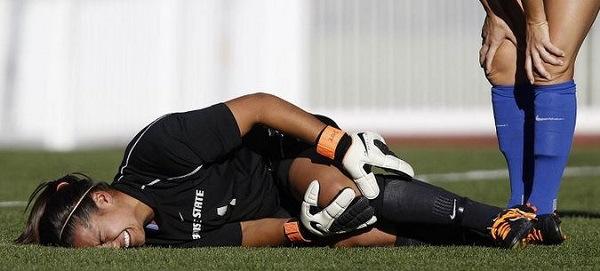
The mental side of sports injuries that no one talks about
It's common advice to "stay positive" or "feel better soon," but when you've just learned you won't be participating in a sport for a long time, it can be difficult to take these words into account. Losing something that makes you happy, keeps you sane, and is an escape from reality is one of the hardest things for an athlete to cope with. There is no denying that an injury will have a significant psychological impact. Many people think a sports-related injury is just a physical setback, but they don’t realize that it comes with possibly detrimental emotional effects. High-level performing athletes put in a lifetime of work and training to become the best possible versions of themselves in their sport. Whether they play at a high school, collegiate, or professional level, an injury poses an obstacle both physically and mentally. Athletes, coaches, and doctors have historically paid more attention to physical injuries than depression and other negative psychological reactions that are a result of the long road to recovery.
Sports are the center of an athlete's daily routine, and one of the most traumatic events that may occur in their life is an injury. An injury can have a devastating emotional impact because it may unexpectedly put an athlete's future playing in jeopardy. When an athlete suffers an injury, their identity can sometimes be lost; this loss of identity can cause emotional problems that may result in depression and a lack of self-worth. For any athlete, the setback of an injury can be mentally taxing. The same stresses and effects occur in all sports: disturbance of habit, the inability to exercise and compete with friends, rehabilitation's isolation and boredom, loneliness, slowed development, and loss of recognition (Lovette, 2019). A study conducted by the Altius Group found that mental health and physical health are closely connected. Depression, anxiety, and posttraumatic stress disorder (PTSD) are examples of mental issues that can be brought on by severe
https://www.parisischool.com/wp


injuries (Physical Injury, n.d.). These mental issues can range from minor mood swings to long lasting depression; some people even attempt to end their lives. Ansley M. Smith, a nurse Counselor at Sports Medicine Center of Mayo Clinic, and Eric. K Milliner, a psychiatric consultant to the Sports Medicine Center, interviewed five athletes who attempted suicide. The five injured athletes all had a few things in common. All of them had 1) enjoyed considerable success prior to suffering an injury, 2) undergone serious surgery for their injuries, 3) endured a long, strenuous recovery period while being prohibited from participating in their preferred sport, 4) failed to recover their pre-injury level of competence upon returning to play, and 5) had teammates take over their roles. In addition, they were all playing at the high school or collegiate level. (Smith & Milliner, n.d.).
Suicide is just one of the possible outcomes caused by depression. Many athletes whose futures have been put on hold due to an injury have suffered from some kind of depression, whether it being short or long term. In a study conducted by Makenzie Grilliot, PA-S, research showed that 42% of patients with a major injury were found to meet the criteria for major depressive disorder and 34% with anxiety (Grilliot, 2022). Depression can be the result of social isolation and a loss of selfworth caused by a long term injury. Margot Putukian, the
By Annie Barrett February 4, 2023 1
-content/uploads/2018/03/Knee-Injury-andSoccer.jpg
chance of reinjury. Anxiety and PTSD can also arise when dealing with kinesiophobia. Samuel Lovette explains that many athletes experience emotional breakdowns as a result of anxiety attacks and daily stressors like the possibility of spending months away from the playing field (Lovette, 2019). Dr. Nicholas Hennig, a Doctor of Physical Therapy and head Physical Therapist at Welded Warrior Performance Therapy, stated in a recent interview that along with kinesiophobia, anxiety, and stress, many athletes deal with the fear of falling behind. Teammates and coaches tend to communicate less often with the injured player. The wins, they don’t really celebrate; the losses they don’t really deal with, either. This creates a distance with the team and for a lot of athletes, it is very mentally taxing.
https://www.parkrecord.com/sports/injury

student athletes' depression may also be correlated with poor performance, after returning from an injury. Athletes who suffer severe injuries and must miss time from practice, may experience physical, psychological, and quality-of-life problems (Putukian, n.d.). Along with the physical effects of an injury, there are other harmful psychological effects that must be taken into consideration, including depression.
Along with depression, another psychological side effect of an athlete's injury is kinesiophobia. Kinesiophobia, the fear of reinjury, is common in athletes who experience a long term injury. Makenzie Grilliot also stated that fear of reinjury, or kinesiophobia, is a key factor in achieving the same athletic level pre-injury. Depending on the severity, one can lengthen or reduce their return time (Grilliot, 2022). Kinesiophobia can not only cause stress and anxiety, but it can also diminish the likelihood of returning to a respected sport and increase someone's
Injuries can also cause psychological effects that lead to deviant behavior. Due to the supportive environment of the team and the presence of a positive role model, participation in sports is associated with significantly reduced rates of drug use. However, some injured athletes can find themselves in an endless loop dealing with drugs. In a publication to its clients, Northpoint Recovery, an Individualized Inpatient Treatment Programs –Detox, Rehab & Mental Health Care, stated that a mere dose of Tylenol frequently isn't enough to relieve the pain of athletic injuries, which can be excruciatingly unpleasant and have lengthy healing durations. In order to manage the discomfort of the recovery process, prescription medications, particularly opioids, are frequently utilized throughout physical therapy and the rehabilitation process. Opioids can be highly addictive and as an athlete who cannot participate in their regular athletic schedule, they may rely on drugs and drinking to fill the void (Sports Injuries, 2017). In addition, a study conducted by the British Journal of Sports Medicine, showed the prevalence of mental health symptoms and disorders for alcohol misuse for injured athletes was 19% (Gouttebarge, n.d.). Samuel Lovette also explains that if athletes lack the necessary support and have a lot of spare time, some will turn to a vice, such as alcohol, drugs, or gambling, in an effort to fill the gap that has arisen in their lives. (Lovette, 2019). These injured athletes often have a hard time coping with their new lifestyle without sports, and without the right help, turning to addictive substances and alcohol may seem like the only option.

All these examples of harmful psychological reactions to an injury can be helped and possibly even prevented with the help of psychological rehab. The mental effects on an athlete following an injury is a newer topic that psychologists have begun researching more and more. As more information emerges that proves the negative effects, many doctors have begun emphasizing the

February 4, 2023 2
Alcohol misuse 19% Depression Anxiety 42% 34%
-bug -bitesminers -on-senior-night/
importance of emotional therapy for injured athletes. The Altius Group wrote in a publication to its clients that recovery frequently requires more time or never happens when mental health is poor. For the best results, research has shown how crucial it is to treat both the physical and psychological effects of an injury (Physical Injury, n.d.). Shelly Sheinbein, a Master of Surgery, states that an injured athlete should be urged to work with sport psychologists or specialists in order to cope with the many feelings and emotions that arise while being absent from a sport (Sheinbein, n.d.). Emotional treatment has psychological benefits but has also been shown to improve the physical rehabilitation process.
Along with being physically troubled, athletes are introduced to psychological changes that some people may not even face in a lifetime. They are mentally drained and face loneliness, the repetition and isolation of therapy, hindered progress, and loss of recognition. Apart from the psychological challenges, injured athletes tend to learn and grow because of the consequences they are

Resources:
Sports Injuries and Drug Addiction: Why is the Connection So Strong? | Northpoint Idaho -

https://www.northpointrecovery.com/blog/sports-injuriesdrug-addiction-connection-strong/
How Physical Injury Affects Mental Health | Altius Group.
https://altius-group.com.au/news-and-research/news/physicalinjury-and-mental-health-the-reality-of-recovery/ #:~:text=According%20to%20Beyond%20Blue%2C%20three, suffered%20a%20 traumatic%20 brain%20 injury
Occurrence of mental health symptoms and disorders in current and former elite athletes: a systematic review and meta-analysis | British Journal of Sports Medicine https://bjsm.bmj.com/content/53/11/700.abstract
Mind Over Matter: Psychological Impact of ACL TearsClinical Advisor https://www.clinicaladvisor.com/home/topics/ orthopedics-information-center/psychological-impact-acl-tear/
‘It’s psychologically devastating’: The pain and mental trauma that comes with serious injury | The Independent https:// www.independent.co.uk/sport/the-sporting-mind-seriesmental-health-injuries-danny-sculthorpe-kelly-smith-ipswichtown-a8999096.html
Injured athletes and their risk of suicide https:// www.ncbi.nlm.nih.gov/pmc/articles/PMC1317809/
Psychological Effect of Injury on the Athlete: A Recommendation for Psychological Intervention https:// www.amolsaxena.com/pdf/
PsychologicalEffectOfInjurySheinbein.pdf
http://undefeatedsportpsych.com/wp-content/uploads/ 2016/07/InjuredAthletesStayingInvolved.png
Mind, Body and Sport: How being injured affects mental health - NCAA.org https://www.ncaa.org/sports/2014/11/5/ mind-body-and-sport-how-being-injured-affects-mentalhealth.aspx

By Annie Barrett February 4, 2023 3
“ Everyone experiences psychological challenges. Severity differs but everyone has notably struggled”
- Dr. Nicholas Hennig

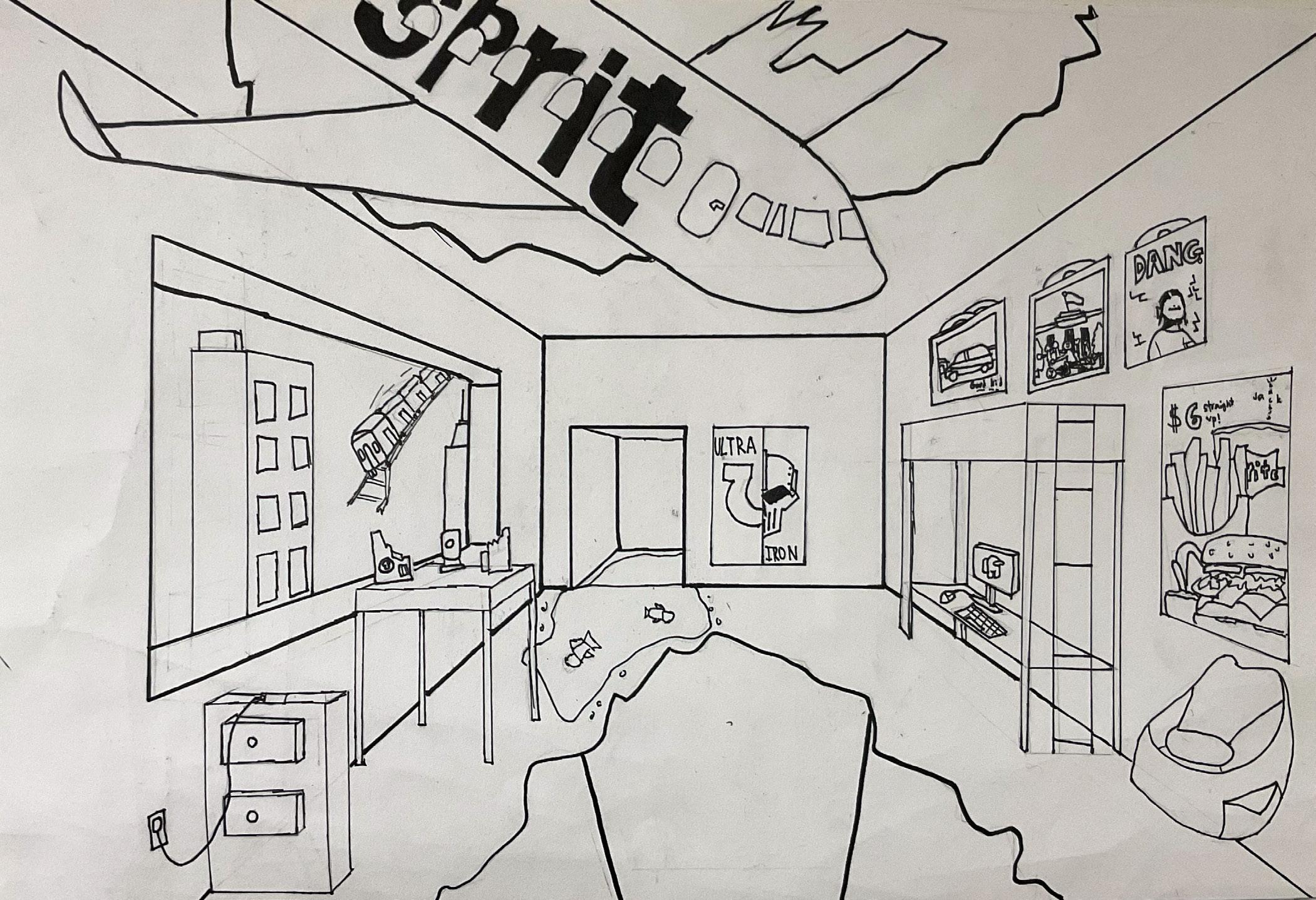 Stella Kilcullen ’28
Joonkyu Shim ’28
Stella Kilcullen ’28
Joonkyu Shim ’28
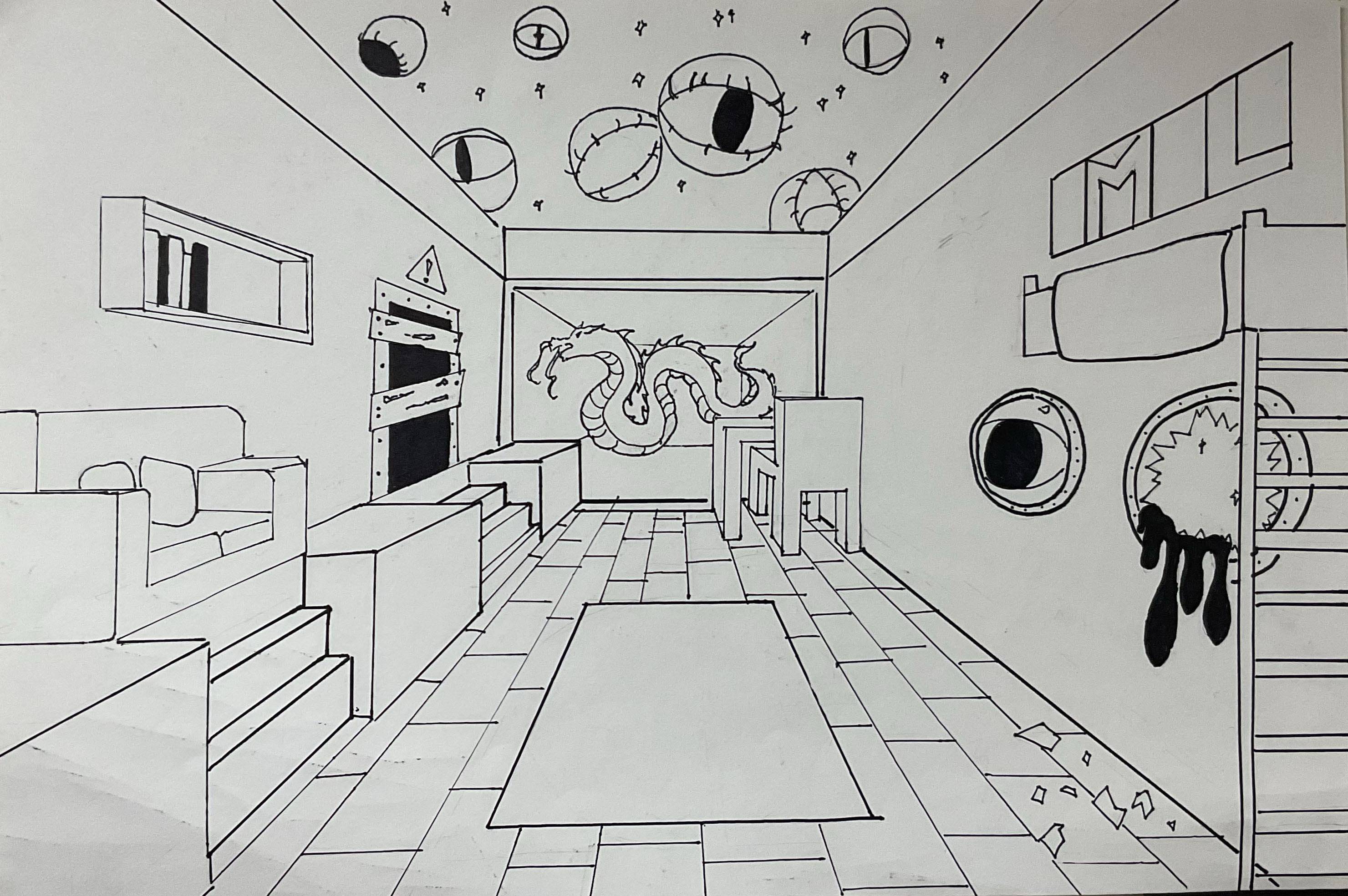
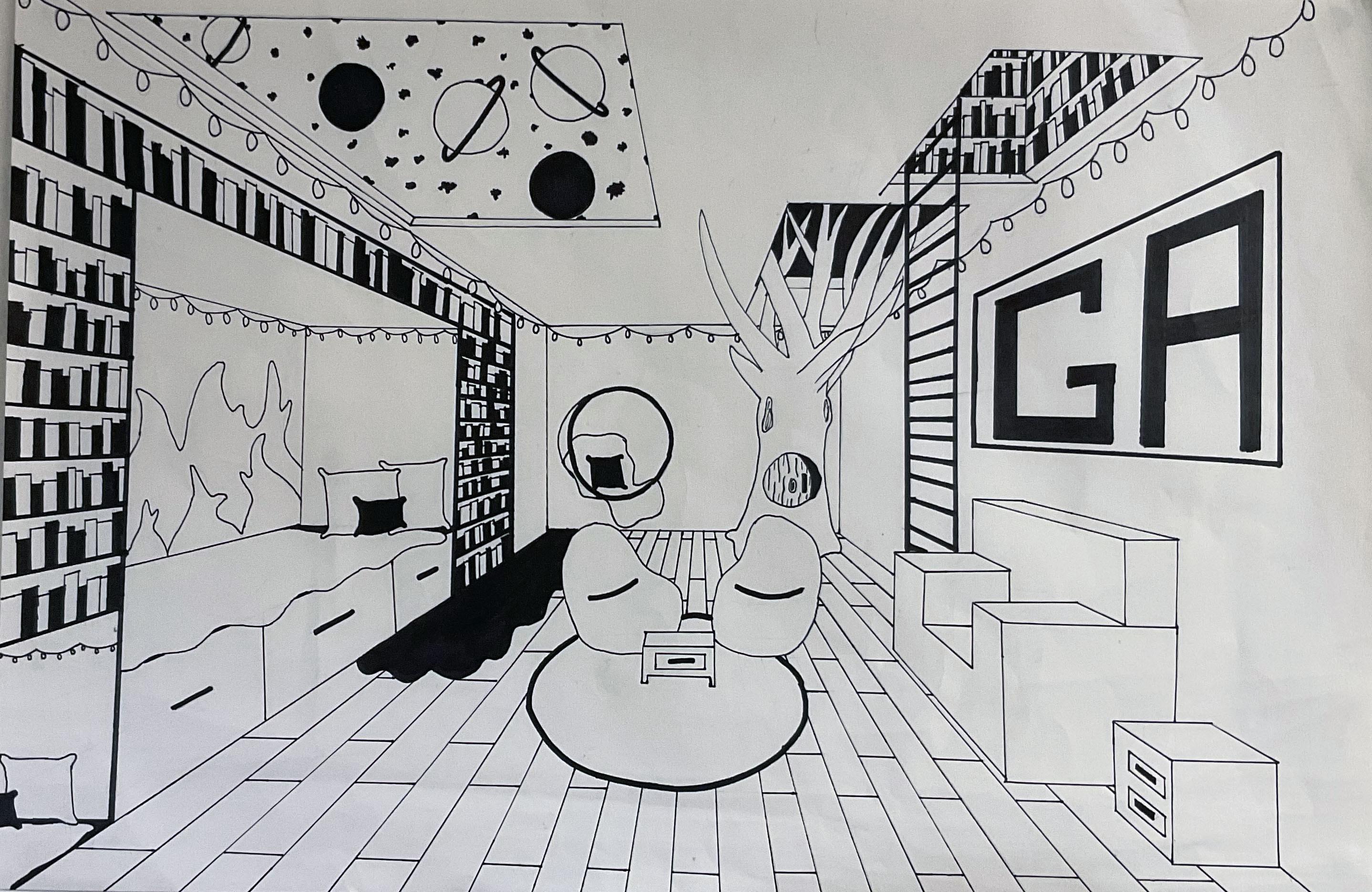
Madison Lee ’28
Georgia Aitken ’28

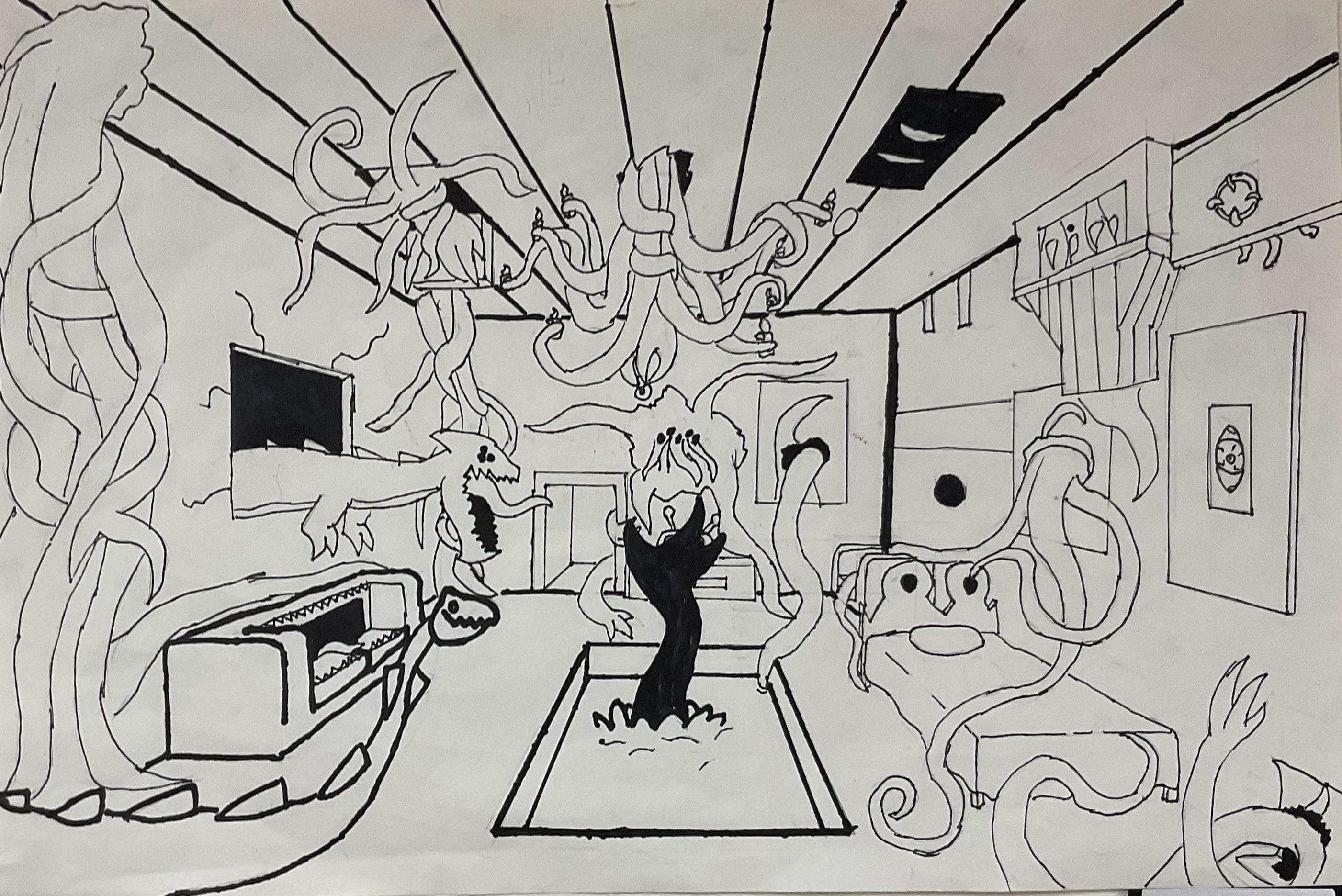 Tamara Regular ’28
Adam Rukshin ’28
Tamara Regular ’28
Adam Rukshin ’28
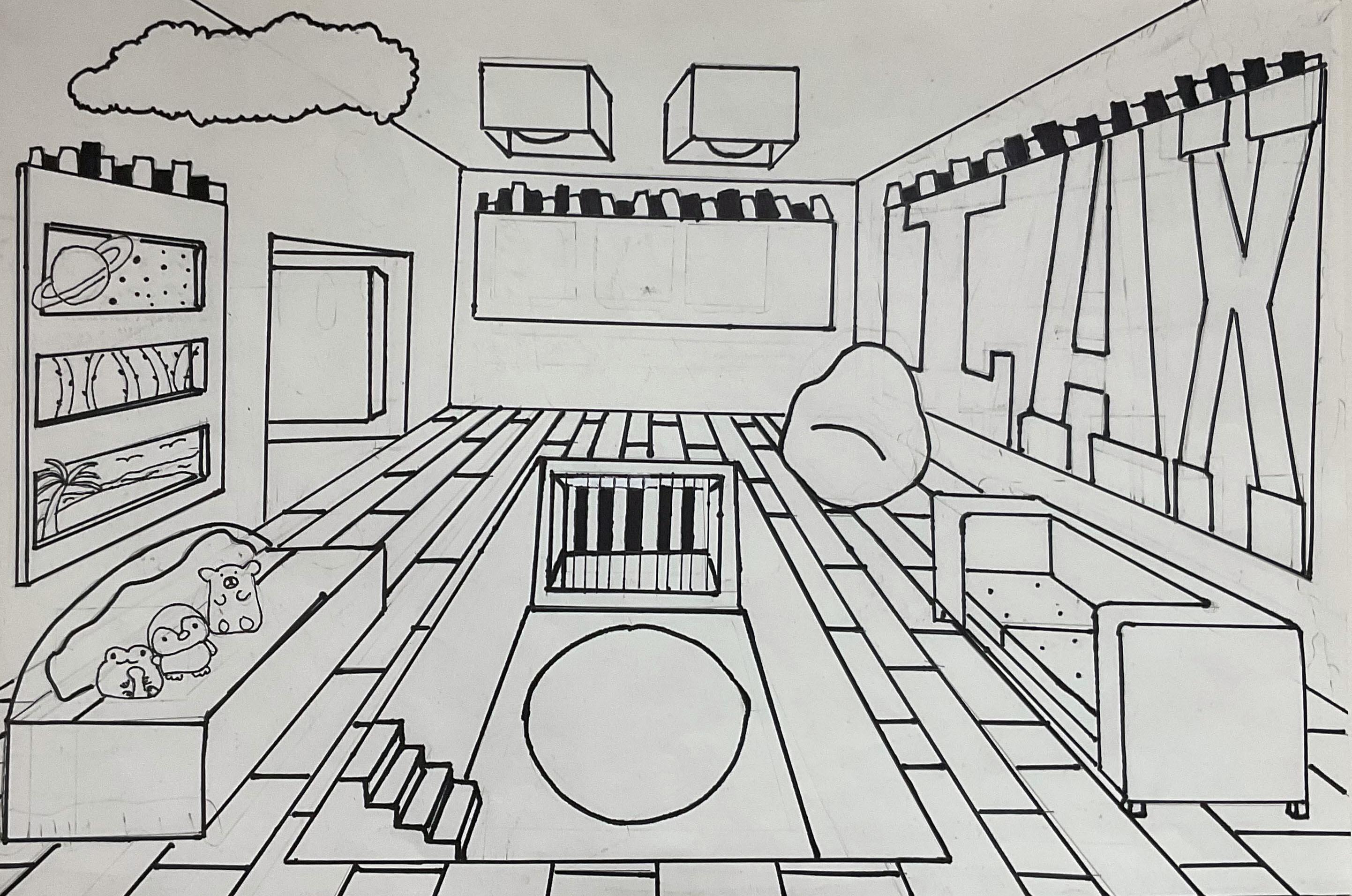
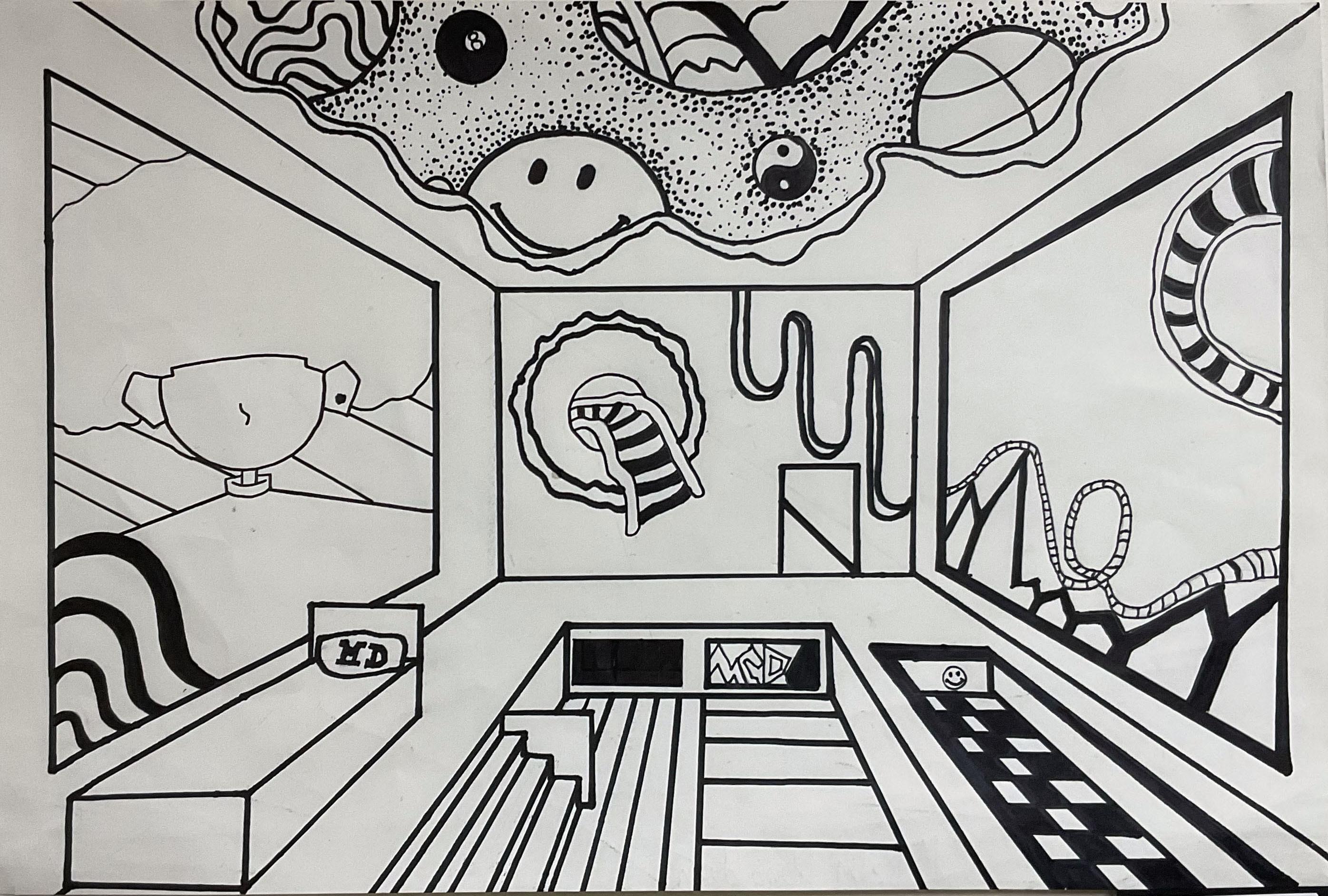 Julianna Uzar ’28
Malcolm Donaldson ’28
Julianna Uzar ’28
Malcolm Donaldson ’28

Isabella Chen February 6, 2023 1 SHOULD PARENTS REWARD STUDENTS FOR GOOD GRADES OR PUNISH FOR BAD GRADES? With the possibilities of rewards and the risk of punishment, students may start to think differently to make the result fall into their favor. https://www.shutterstock.com/image-photo/anxious-teenage-student-sitting-examination-school-769528084 Some parents go to great lengths to have their kids do well in school. Do these “motivators” help or hurt the student?
You come home from school with a grade on your test, and you think it's pretty good, a substantial increase from your last grade, but you don’t know how your parents will react. Your parents are proud of your hard work for studying and receiving a high grade and decide to reward you with a new laptop. On the other hand, another student goes home from school with a poor grade, and their parents are furious, expecting better from them, and they are punished by having their privileges taken away. In either case, do any of these “solutions” work in the long run?
Students often talk to their peers about how their parents react to their grades. Some students have amazing grades, but you cannot tell if the parents give them motivation to get those amazing grades. Throughout time, parents have tried to find ways to make their kids get great grades as a foundation to succeed in life. Some have tried rewards, and others have tried to use punishments. Rewards would range from giving them verbal praise, a gift, or extra money. Punishments may range from physical abuse to taking away valuable items, such as one’s phone, or parents may take away privileges.
The percent of 8th graders that show grades to their parents. Yes (51) No (13)
A study from 2007-2009 conducted by Dr. Roland Fryer Jr., an economist at Harvard University with a PhD from Penn State, showed that giving rewards to students for grades does not show drastic improvements in grades. According to “FINANCIAL INCENTIVES AND STUDENT ACHIEVEMENT: EVIDENCE FROM RANDOMIZED TRIALS,” the paper with Dr. Fryer’s results and details of his experiments, Dr. Fryer ran an experiment on children in 261 schools from 2007-2009 and used his own money to pay 38,419 kids a total of $6.3 million. The experiment took place for 1 year with each student being paid three times a year and receiving different amounts of money based on their achievements. There were 261 schools enrolled from Chicago, Dallas, New York City, and Washington, D.C ., which were the four low-performing districts. While in most schools giving students money made no improvements to motivate them to work harder, some of them did. Asian and Caucasian students showed no difference in their grades. On the other hand,

Isabella Chen February 6, 2023 2
Hispanics, mostly boys, and students with “behavioral issues” showed the greatest improvements. After the experiment was completed, there is no proof that the students that did well because of the financial rewards continued to do well in the absence of financial rewards. (FINANCIAL
INCENTIVES AND STUDENT ACHIEVEMENT: EVIDENCE FROM RANDOMIZED TRIALS, 2010).
According to a study on children and money conducted by the American Institute of CPAs, almost half of all U.S. parents (48%) rewarded their child financially for good grades.
does not help as it will only start to injure the child’s development. Positive results may only come temporarily because they may only want to get the reward or avoid the punishment. Once the parent sees no reason to continue to punish the child, they will stop, and so will the improvement. When children are motivated to learn, not from receiving rewards or avoiding punishments, they improve their grades better (Li, 2022).
According to Richard Ryan, a motivational psychology expert from Rochester University in New York, the giving of rewards and punishments can either motivate or reinforce a different way of thinking to either get the reward or avoid the punishment. For instance, a student’s parent may say that if they get an A, they will get a brand new phone. The kid will try to do well in order to get the reward. However, when there is no motivation, there will be no progress. It is the same idea with punishments. The first time that a parent may punish their child, the child may not want it to happen again, so they try to do well in order to not get punished. Once the parent loses interest in punishing, the child will also no longer have any motivation to do well (Davie, 2010, pp. 1,2,3,4).


(AICPA Survey, 2012).
Parents may be giving the incentives, but the child has to receive the rewards. What do children think about these reactions to their own grades?
The average financial reward for an A was $16.60.
(AICPA Survey, 2012).
According to a survey with Montclair Kimberley Academy 8th graders, when they get a good grade 54% receive from their parents verbal praise, congratulating them on the accomplishment; 11% have parents expect better results from them; 25% have parents than do nothing; and 8% of parents give a reward, such as money or an iPhone. When they get a bad grade, 41% of students’ parents may ask why they got that grade; 32% have parents that ask how they could help them get a better grade; 2% of parents do nothing; 21% say their parents take away privileges from them; and 4% have parents that physically punish them.
Punishments for poor grades also do not help the situation. A physical punishment
What parents do to children compared to what children think is acceptable are different ideas. In the survey with the 8th graders, 62.5%
Isabella Chen February 6, 2023 3
https://cf.ltkcdn.net/kids/images/orig/237821-2000x1332-child-counting-money.jpg

of the students believe that children should be rewarded for good grades and 37.5% said no to rewards for good grades. Of 30 optional written responses to share their thinking, 11 of the 24 said that the reward should be verbal praise such as a “good job,” and 3 of the 24 responses say that a small reward, such as choosing what to eat for lunch or getting a Starbucks is an acceptable reward. On the contrary, 81.3% of the students say that kids should not be punished for bad grades and only 18.8% say that they should be punished for bad grades. Several written responses expressed the idea that they should only be punished if they did not try to study and were slacking off in class, and 9 of the 28 said that students should not be punished for their bad grades but only supported so they can get better ones in the future. Finally, several of the 28 responses said that punishing children will only affect their performance on
their next assessment and then negatively affect their relationship with their parents thereafter.
Neither rewarding for good grades and punishing for bad grades ends up working after the motivator is gone. It is understandable that parents will try to do everything in order for the students to achieve that stellar grade, but children need to learn to find the motivation within themselves to learn knowledge in the world, and not simply base it on the hope of rewards or the risk of punishments. “Conveying that you will love your child just as much no matter what outcome is not only supportive, but it may also reduce anxiety, which itself can compromise performance”Richard Ryan.

Isabella Chen February 6, 2023 4
-cries -over-homework/
“Appreciation is always a better motivator than control” - Richard Ryan
https://www.noguiltmom.com/kid

 Annie Watkins ’29
Anna Oh ’27
Annie Watkins ’29
Anna Oh ’27

 Maeve Rodgers ’29
Avalina DeLorenzo ’27
Maeve Rodgers ’29
Avalina DeLorenzo ’27



 Humphrey Hogue ’27
Henna Blackburn ’27
Grace Barrett ’27
Grayson Gao ’27
Humphrey Hogue ’27
Henna Blackburn ’27
Grace Barrett ’27
Grayson Gao ’27
Has your child ever wanted a pet unicorn?
Go on. You can be truthful.
The truth is, modern culture is all about unicorns. These bright-haired, horned horses have been all the rage recently. And for good reason. They’re too amazing not to be real!
But what if we told you that if you act now, you can get one?
Wait…what?
Yes! After receiving complaints of how small and boring our usual toys are, the Hatchimals Company (known for our miniature collectables inside eggs)created a robotic unicorn that’s exactly like the real thing!
When purchased, the unicorns are inside of an egg, similar to their smaller cousins. Pretty boring, huh? But don’t be fooled. Our robotic unicorns hatch within a few hours of purchasing; all you have to do is put in the batteries and flip the switch on the creature’s stomach. They’ve been coded to walk, eat, think, grow up, and even shoot sparks out of its horn! They also have a coat of self-cleaning material that feels exactly like fur!
You may be thinking, “Wait, if they can think, what if they take over the planet?” Don’t worry, because we’ve got you covered. Our algorithms say that there’s almost no chance that they’ll rule the Earth. Almost. And if they do, what’s the worst that will happen?
So what are you waiting for? Click on the Hatchimals website or call and claim a mythical creature as your very own today!
DISCLAIMER: BATTERIES ARE SOLD SEPARATELY. WE ARE NOT RESPONSIBLE FOR STABBINGS BY HORNS, TRAMPLINGS BY HOOVES, CROPS EATEN BY HUNGRY UNICORNS,
WILDFIRES
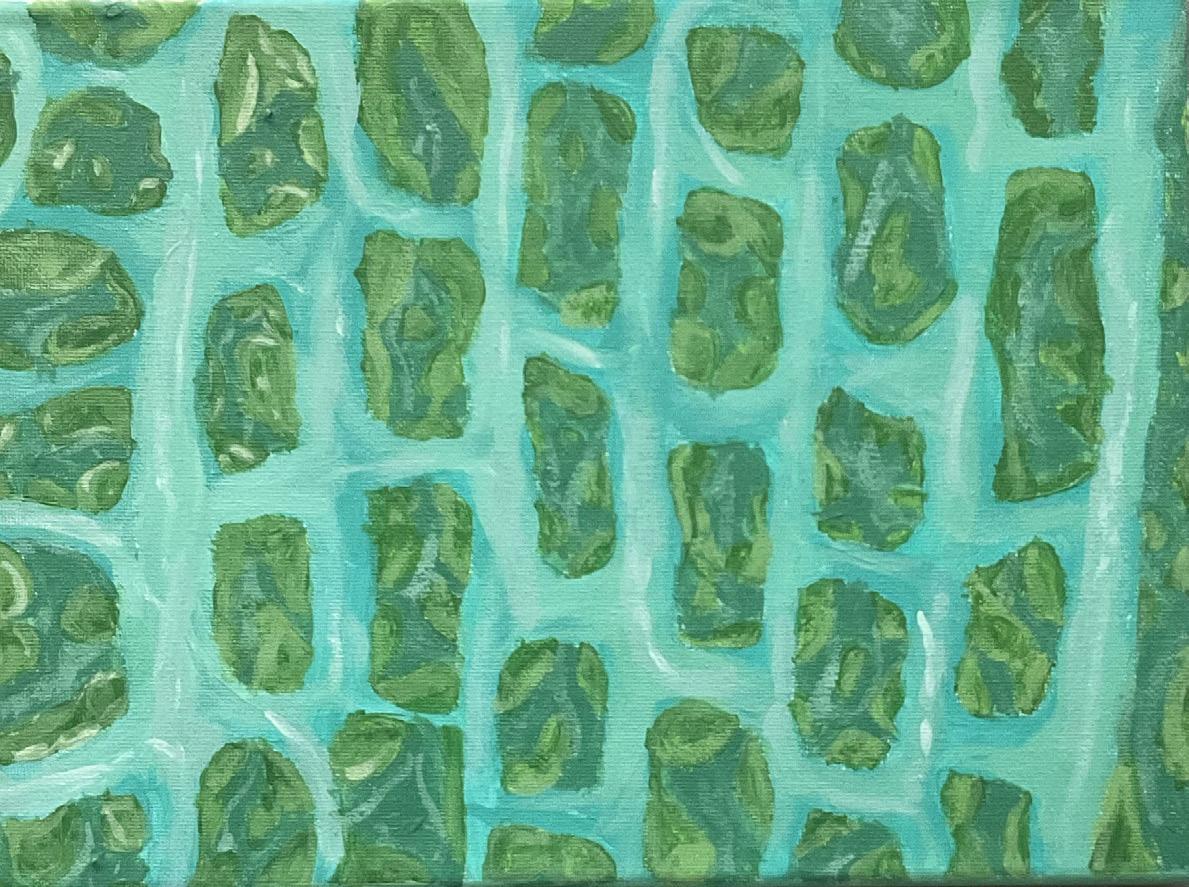
STARTED BY UNICORN SPARKS, REBELLIONS, UNICORNS BECOMING A DOMINANT SPECIES, OR ANY UNICORN-LED WORLD DOMINATION.
-Sophia Ochs ’28
 Madison Lee ’28
Stella Kilcullen ’28
Madison Lee ’28
Stella Kilcullen ’28
History 6.2
Military Inventions of The Song
The Song Dynasty was established in 960 C.E. when China was reunited by an able general named Taizu who proclaimed himself the first emperor of the Song. During the rule of the Song (960-1279), people had to retreat to different sides of China as a result of the Song not being able to defend their land. And in that period of time, it was decided that military weapons needed to be made in order to protect the Song Dynasty’s land. Without the Song Dynasty’s military inventions and technological advances, safety in modern times would not be the same. The Song made many advanced inventions in the military that are still used today, and without them, people most likely would not have a thorough understanding of weapons in modern times. The inventions of the Song Dynasty impacted Chinese life by producing advanced gunpowder-based technology such as cannons, bombs, and fire lances.
Cannons were made with gunpowder, which made them a revolutionary weapon since the Song even used cannons as guns during wars. Cannons in the Song were made from bronze, which was a mixture of tin, copper, and minerals such as phosphorus and magnesium.1 In addition, making cannons was simple since they were so small with a width of fourteen inches and a weight of about eight pounds.2 Cannons were used in the battle of 1126 when the Jurchens tried to invade the Song. The Jurchens–which later came to be known as the Manchus–were a nomadic group of Mongols that invaded the Song in the interest of conquering China. The Jurchens captured the Chinese capital Kaifeng, and the current Song emperor at the time. The incident was a major event in Chinese political history, but it was also a turning point in military technology since it was one of the first times that gunpowder was used in battle.3 Cannons were fired from moving platforms placed close to walls of a besieged city. This suggests that cannons were used as a last resort because they could cause lots of destruction.4 After gunpowder was developed, cannons were one of the first and most beneficial gunpowder-based inventions of the Song. Bombs that used gunpowder became very popular in the Song because they traveled far distances and also caused lots of damage, which could prevent invaders from breaking in. Bombs were launched from catapults and could travel as far as ten to a hundred yards and cause damage as far as that.5,6 Bombs were so effective in their purpose that they could even shatter an entire city wall, and when thrown against wooden surfaces–because of the mixture of shrapnel and gunpowder–could start a fire and let out poisonous gas7,8. And making these helpful, long-traveling, efficient weapons was not very hard. All that was required was hemp or cotton with gunpowder in it to be soaked in oil, ignited, and lastly catapulted outward to the target area. Additionally, bombs were so useful in war that they were put on navy ships to ensure safety for the Song’s borders.9, 10 In summary, bombs were very helpful towards the Song Dynasty in war due to having such a large range of destruction. Fire lances, convenient to make, were close-combat weapons and had small features that would improve efficiency with aiming and targeting the enemy. Fire lances are a spear-like weapon that combines a long spear with a simple fireworklike charge at the end underneath the spearhead that shoots out a small amount of poison along with the flame.11, 12 They were made when the Song filled hollow bamboo and metal tubes with gunpowder. Then, the gunpowder-filled tubes would be attached to a spear and thrown at the enemy.13 Some fire lances had narrow tubes and could be held by one person, but others were mounted on wooden frames.14 Fire lances were first used when Song soldiers in 1150 A.D. used them for weapons.15
1 Learn Chinese History, https://www.learnchinesehistory.com/chinese-cannons-history/#:~:text=First%20Chinese%20Cannons,then%20thrown%20at%20the%20enemy.
2 history/#:~:text=First%20Chinese%20Cannons,then%20thrown%20at%20the%20enemy.
3 Britannica: Jingkang Incident, https://www.britannica.com/event/Jingkang-Incident-1126-1127.
4 Gun and Gunpowder, http://www.silk-road.com/artl/gun.shtml#:~:text=Gunpowder%20bombs%20and%20fire%20cannons,-By%20 the%2011th&text=The%20Song%20dynasty%2C%20which%20came,bamboo%20and%20filled%20with%20gunpowder.
5 Gun and Gunpowder.
6 A visual Sourcebook of Chinese Civilization, http://depts.washington.edu/chinaciv/miltech/firearms.htm.
7 A Visual Sourcebook of Chinese Civilization.
8 Ting-xing Ye, The Chinese Thought of It: Amazing Inventions and Innovations (Toronto: Annick Press, 2009), [Page 22].
9 A Visual Sourcebook of Chinese Civilization.
10 Warships, http://depts.washington.edu/chinaciv/miltech/warship.htm.
11 Li Hua Ch’iang (Fire Lance), http://www.historyofwar.org/articles/weapons_firelance.html.
12 Li Hua Ch’iang (Fire Lance).
13 Learn Chinese History.
14 A Visual Sourcebook of Chinese Civilization.
15 Fire Lances and Cannons, https://www.archaeology.org/issues/379-features/weapons/8599-fire-lances-cannons.
Elle Maghsoudlou ’29
They were close-combat weapons, meaning that they were used for targeting the enemy at a close distance since they only had a range of a couple feet.16 Fire lances were efficient with their purpose because they helped soldiers in the Song with battling. The military inventions that the Song Dynasty made affected Chinese life by making advanced gunpowder-based technology such as cannons, fire lances, and bombs. Cannons were very useful because they could cause a ton of destruction and stop invaders from breaking in. Bombs, on the other hand, had a wide range of distances and were so efficient in their purpose that they could shatter an entire city wall. Lastly, fire lances were convenient to make, close-combat weapons, and even had specific parts on them that would help make your aim precise. The military inventions of the Song are important because without them, modern-day technologies would not be the same in terms of safety since the Song had an early understanding of gunpowder and how to make weapons out of it.
Bibliography
Beck, Roger B. World History: Patterns of Interaction [full Survey]. Student text and teacher’s ed. Orlando: Houghton Mifflin Harcourt Pub., 2012.
This is a textbook. It has information on China’s ancient, and more modern dynasties such as the Song and Tang. It gives lots of information on inventions during China’s dynasties.
Britannica: Jingkang Incident. https://www.britannica.com/event/Jingkang-Incident-1126-1127.
China in 1000 CE: The Most Advanced Society in the World. http://afe.easia.columbia.edu/songdynasty-module/outsiderivals.html#:~:text=The%20Jurchens%20(Jin%20dynasty%2C%201115,to%20control%20all%20of%20China.
Fire Lances and Cannons. https://www.archaeology.org/issues/379-features/weapons/8599-fire-lances-cannons.
From Gunpowder to World Domination. https://www.barrons.com/articles/from-gunpowder-to-world-domination-1453527156. Gun and Gunpowder. http://www.silk-road.com/artl/gun.shtml#:~:text=Gunpowder%20bombs%20and%20fire%20cannons,By%20the%2011th&text=The%20Song%20dynasty%2C%20which%20came,bamboo%20and%20filled%20with%20gunpowder.
Learn Chinese History.
https://www.learnchinesehistory.com/chinese-cannons-history/#:~:text=First%20Chinese%20 Cannons,then%20thrown%20at%20the%20enemy.
Li Hua Ch’iang (Fire Lance). http://www.historyofwar.org/articles/weapons_firelance.html.
Mr. Donn. https://www.pbs.org/wgbh/nova/lostempires/china/age.html. This is a website. In this website, a person is interviewing a China expert, Robin D. S. Yates. The China expert mostly talks about how the Song was able to keep the Mongols away for so long.
Periods and Dynasties of Ancient China. https://www.thoughtco.com/periods-and-dynasties-of-ancient-china-117665. This is a website. This website helped me find out when the Song dynasties all started and ended. For instance, the Northern and the Southern Song dynasties. Practically all my sources talked about the Northern and Southern Song dynasties and it confused me since I wasn’t aware at the time when both of the dynasties started and ended.
“Politics, Law, and the Military: Chronology.” In World Eras, edited by Guangqiu Xu, 232-38. Vol. 7. Detroit, MI: Gale, 2003. https://link.gale.com/apps/doc/CX3035200106/GVRL?u=tmka_ca&sid=bookmark-GVRL&xid=962bf257. This is a database. This database helped me with finding important dates during the Song dynasty. It also helped me find important dates and times during the Northern and Southern Song dynasty.
A Visual Sourcebook of Chinese Civilization. http://depts.washington.edu/chinaciv/miltech/firearms.htm.
Warships. http://depts.washington.edu/chinaciv/miltech/warship.htm.
Ye, Ting-xing. The Chinese Thought of It: Amazing Inventions and Innovations. Toronto: Annick Press, 2009.
Li Hua Ch’iang (Fire Lance).
16

 Abigail O’Neill ’29
Nolan Raper ’29
Abigail O’Neill ’29
Nolan Raper ’29
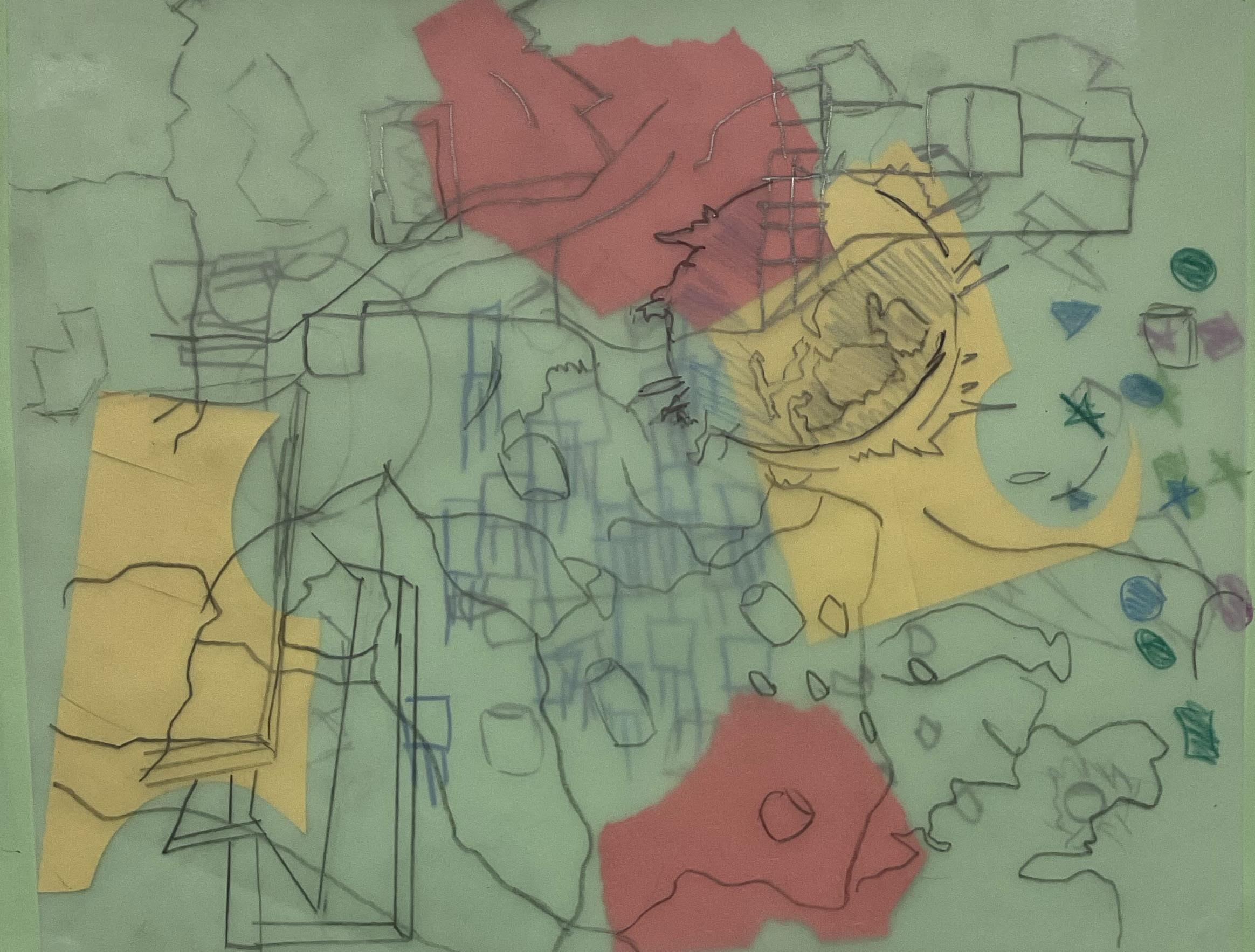
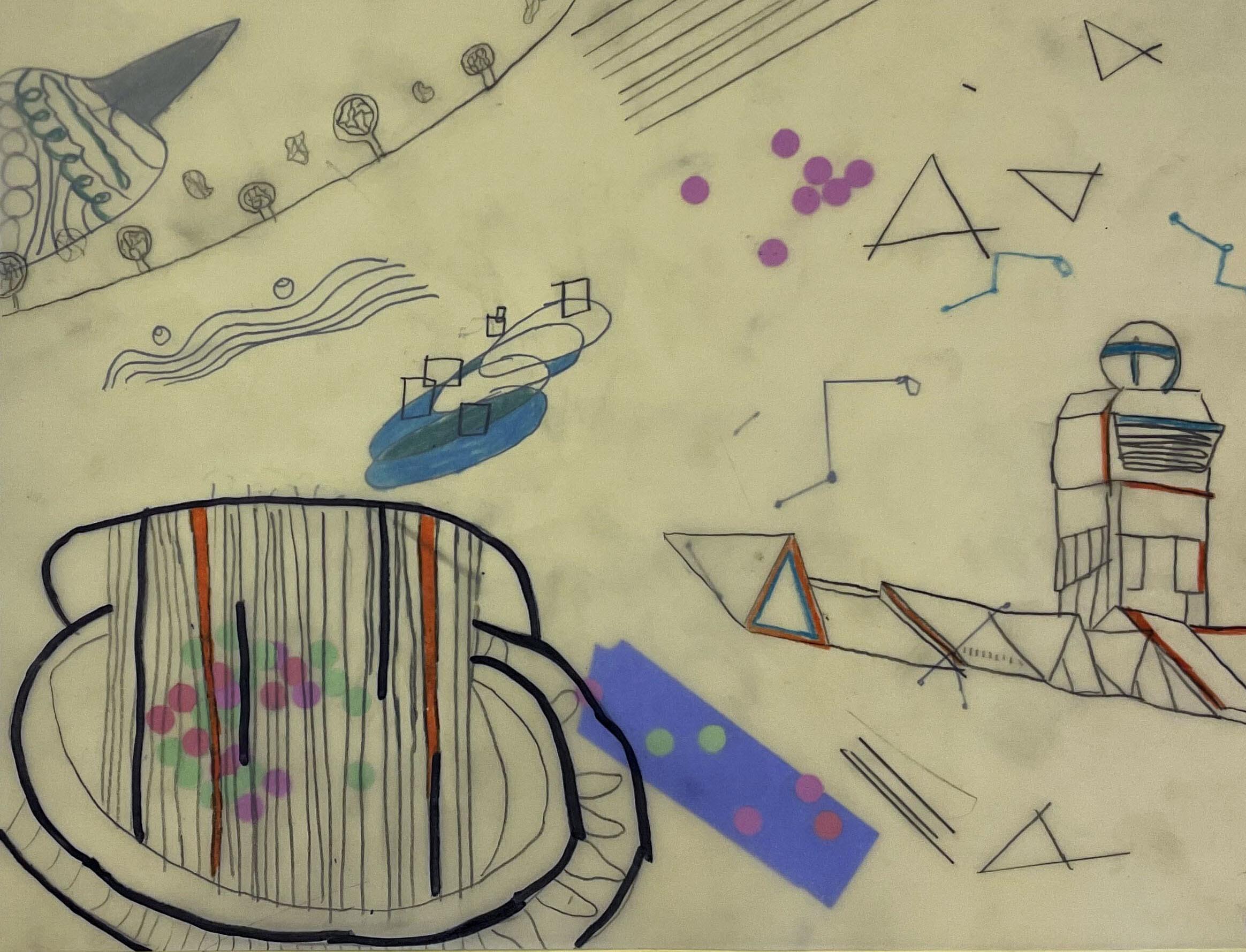 Jack Rizzo ’27
Sankirtha Kapoor ’29
Jack Rizzo ’27
Sankirtha Kapoor ’29
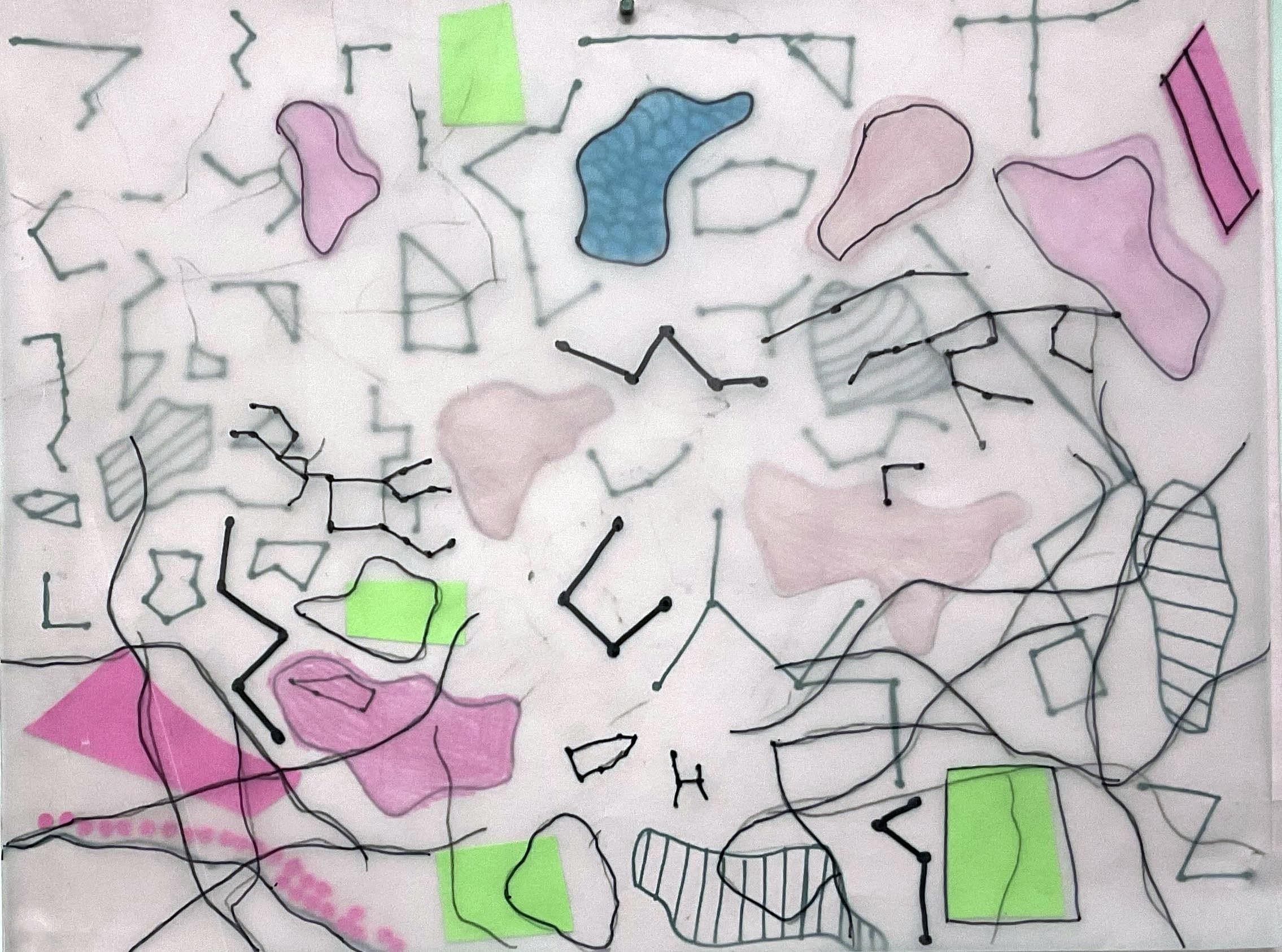

Stella DeSousa ’29
Louise Felsenthal ’29

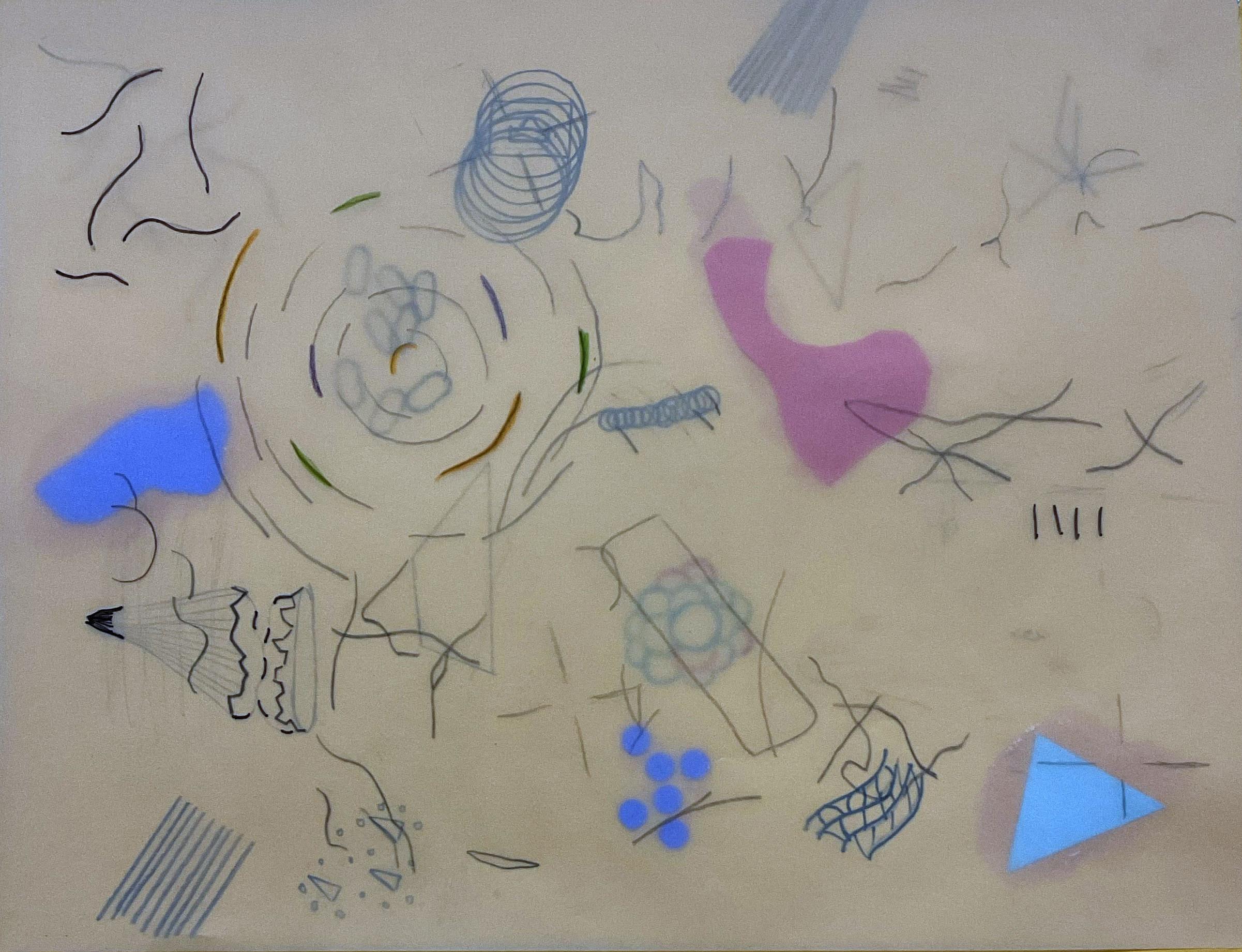
Fion Shi ’29
Sophia Mortimore ’29
Trial And Error: A Glimpse At Colonial Medicine
If people wanted to live after a medical treatment, it was best not to have it done in the colonial era because they were likely to die from unskilled practices and germs. While the colonists brought many medical procedures with them from Europe, they rarely worked. They used their prior knowledge and continued to evolve their practices ranging from bloodletting, leeching, mercury, dentistry, and inoculations to try to better care for others. However, sometimes they did not work due to a lack of research and scientific practice. In the colonial era, many medical treatments were dangerous because they were unscientific and unhygienic, but sometimes through trial and error, these practices led to valuable successes that were effective in treating illnesses and injuries.
The colonists considered bloodletting a panacea because it was believed to cure everything, but this was not the case. Bloodletting was a technique where blood was drained from the body by cutting through the skin with a sharp tool in order to remove bad blood that was considered to be the cause of every illness or injury.1 To engage in bloodletting, a bandage was placed around the patient’s body while they were given something to hold to distract them from the pain of their vein being cut open to remove the blood. Almost anybody could have performed this process as they did not need to be a specialist. They could be anyone from a trained doctor to a layperson.2 All they needed were the right tools: knives, lancets, or 12-blade scarificators.3 The colonists understood that the thumb lance, a popular bloodletting tool made from iron, needed to be cleaned every so often to prevent rusting; however, they were unaware that cleaning was essential to eliminate germs so the tools were often not washed enough or properly. These unsanitary bloodletting tools were used to ‘cure’ everything from broken legs to fevers. For broken legs, blood was drained from the inflamed area on the leg to reduce swelling, heat, and redness because it was believed that the blood was trapped in one area of the blood vessels. Bloodletting was also used to cure fevers, thought to be caused by the friction of circulating
1 Jim Cox, “That Quaking Sound in Colonial America,” Colonial Williamsburg, accessed November 13, 2022, https://research. colonialwilliamsburg.org/Foundation/journal/Spring04/quackery.cfm
2 Robin Kipps, interview, Exploring Our World: Cleanliness and Disease, produced by Colonial Williamsburg Foundation, accessed November 14, 2022, https://www.youtube.com/watch?v=nrGwN-QEPp4
3 Cox, “That Quaking,” Colonial Williamsburg.
blood.4 In 1799, President George Washington had a throat infection and was drained of nine pints of blood to try to cure him, but sadly, this led to his death 24 hours later. For this and many other treatments, bloodletting did not have positive outcomes.5 Even if it may have had some benefits, bloodletting caused patients more harm in the end because of the large quantities of blood lost. Additionally, the tools used were unsanitary because they were not cleaned properly, and they were shared from patient to patient without any sterilization, which is known to be dangerous today.
Another unsuccessful treatment for ailments similar to bloodletting was leeching. Leeches were used for sucking blood. Leeching was considered a remedy for almost everything, especially phlebitis, which is inflamed veins.6 Colonial children were often leeched in the 1700 and 1800s. One example of this was W. C. B., a colonial boy who was sick with a fever, body aches, and fatigue. His mother solicited the apothecary for help who decided to leech him, which immediately eased the mother’s worry. Fifty years later, W. C. B. recounted what it was like being leeched on a regular basis as a child: “[the leeches were put] inside the nostrils, on the inside of the lower lip, on the chest, and on the side, sometimes by four at a time.”7 Death was prevalent in young children and while W. C. B. was one of the lucky patients to survive leeching, many others met a different fate.8, 9 The leeching treatment often led to a person passing out because it drained around 20 ounces of their blood.10 Similar to bloodletting, this practice was not a healthy way to cure patients. The treatment of bloodletting almost always had a negative outcome because of the deadly amount of blood drained from a person’s body.
Mercury, another treatment at the time that might have been seen as beneficial, always caused health problems for the individual. Mercury was used for treating worms, hysterical disorders, hypochondria, asthma
4 Kipps, interview.
5 Cox, “That Quaking,” Colonial Williamsburg.
6 Morgan Log House, “Strange Colonial Cures,” Morgan Log House, accessed November 12, 2022, http://www.morganloghouse. org/strange-colonial-cures/.
7 Jessica Martucci, “Medicinal Leeches and Where to Find Them,” Science History Institute, last modified March 24, 2020, accessed November 7, 2022, https://www.sciencehistory.org/distillations/medicinal-leeches-and-where-to-find-them
8 Edwin Tunis, Colonial Living (New York: Crowell, 1976), 155.
9 Martucci, “Medicinal Leeches,” Science History Institute.
10 Rachael Zimlich, “Bloodletting through History: What Was it Supposed to Treat?,” healthline, last modified May 3, 2021, accessed December 4, 2022, https://www.healthline.com/health/bloodletting
Skylar Rhodes ’27
as well as helping people to stop vomiting.11 Another disorder mercury treated was syphilis sores, black spots appearing on a person’s body. The pills taken to help cure this ailment were made of mercury. The problem with consuming mercury is that it actually was a poison that caused extreme salivation as well as many different sores on one’s body.12 Additionally, mercury caused neurological disorders, tremors, harm to the kidneys and the thyroid, as well as neuromuscular changes.13 Using mercury as a cure for any malady was a horrible idea due to its perilous outcomes. No matter how sick the person was, they should not have been treated with mercury because the poison was toxic to humans.
Dentistry was also among the many unhygienic treatments that did not work. Colonists did not care for their teeth properly, leading sugar and other foods that got stuck in the enamel of their teeth to cause cavities and a build-up of bacteria. The tooth often needed to be removed to solve this problem.14 Rural residents relied on the village blacksmith, hairdresser, and silversmith to relieve toothaches and extract teeth while the wealthy hired skilled dentists. The lower class had to undergo many painful procedures to have their teeth pulled. Tooth drawers, whose main job was to remove teeth, as well as rural farmers and barbers, would often use dangerous forceps, pliers, hot coals, thread, and more to alleviate dental discomfort.15 The skilled colonial dentists for the wealthy were not qualified based on modern standards. They often used a pair of pliers also known as a tooth key to remove rotting teeth caused by cavities. To extract the tooth, the tooth key would go on top of the tooth which the dentist would then use to pull or twist until the offender was extracted from the jaw. This tooth key would continuously be used on new people without any proper cleansing.16 Oral surgery began being used for more advanced dental care. According to a Colonial Williamsburg docent, a colonist named Baker claimed that he could make dentures and conduct tooth transplants. Additionally, he was able to extract
11 Morgan Log House, “Strange Colonial,” Morgan Log House.
12 Szu Shen Wong, “Syphilis and the Use of Mercury,” The Pharmaceutical Journal, last modified September 8, 2016, accessed December 8, 2022, https://pharmaceutical-journal.com/article/opinion/ syphilis-and-the-use-of-mercury
13 Morgan Log House, “Strange Colonial,” Morgan Log House.
14 Colonial Dentistry, narrated by John Moseley, Moores Creek National Battlefield, 2021.
15 Harry Schenawolf, “History of Dentistry in the 18th Century,” Revolutionary War Journal, last modified May 25, 2013, accessed December 15, 2022, https://www.revolutionarywarjournal.com/dentistry/
teeth as well as provide people with gold or lead fillings. Sometimes Baker’s work had negative results, especially when he used poisonous fillings like lead which resulted in deaths.17 But, false teeth were very common, and the demand for them continued to increase. Many materials were used for making false teeth, including teeth from children. Children’s teeth were pulled for this purpose in exchange for a few shillings from the wealthy.18 No matter who was practicing dentistry in Colonial America, they lacked the proper knowledge of hygiene, extractions, and tooth replacements making dentistry dangerous. Tools were shared amongst many people causing the spread of germs in addition to poison being placed into people’s mouths. While most of these dental practices did not work, they continued to evolve like many other medical treatments.
Colonists died from many diseases, but smallpox was among the most deadly, so it was pressing to find a cure for this illness. Smallpox caused swelling on a person’s head, leading to their eyes completely closing, giving them ugly-colored, swollen lips, and covering their body with large puss spots.19 A successful smallpox inoculation was invented by using matter from an active smallpox case. Patients with less extreme cases of smallpox were used to aid this process. First, the smallpox germs were taken from a person with a light case by cutting the skin with a lancet and coating it with the infection. The pus from the infected person with smallpox was then placed directly into the healthy person’s skin or veins to be inoculated.20, 21 An inoculation usually gave someone a mild case of smallpox. These symptoms, often lasting weeks to months, included fevers, malaise, back and headaches, nausea, and vomiting.22 The inoculated person then stayed in quarantine because they still developed contagious sores while their body was adjusting to the invasive germs.23 While the outcome of the inoculations was almost always positive, it led to death for an unlucky few. Many people feared the smallpox inoculation because they believed it was always deadly. The clergy spearheaded this disapproval by preaching that smallpox
17 Kipps, interview.
18 Schenawolf, “History of Dentistry,” Revolutionary War Journal.
19 “The Smallpox Epidemics in America in the 1700s and the Role of the Surgeons: Lessons to be Learned During the Global Outbreak of COVID-19,” Natural Library of Medicine, last modified July 4, 2020, accessed January 3, 2023, http://ncbi.nlm.nih.gov/pmc/ articles/PMC7335227/
20 Kipps, interview.
21 “The Smallpox.”
22 “The Smallpox.”
23 Kipps, interview.
16
Colonial Dentistry
was God’s punishment to harm the bad people in the world. They believed that trying to prevent smallpox was a form of intervening in God’s actions. But the smallpox inoculation proved to be successful; even if a person was to contract smallpox after their inoculation, they had a very low risk of death.24 The smallpox inoculation was a new step in colonial treatments, but people were afraid of being infected with the disease because they thought they would get a full case of smallpox. They did not understand that a small amount of the infection would not harm them, but rather allow their body to develop immunity. The success of the smallpox inoculation paved the way for modern-day vaccines and slowed the spread of the disease in the colonies.
The colonists kept trying to enhance their treatments to provide better medical care and build on their limited knowledge that was originally from England, which was unhygienic and unscientific. There was much to learn from the perilous bloodletting and leeching that drained too much blood from a person to even cure them. In addition, these techniques used unhygienic tools like lances, which were not cleaned between patients, and leeches. A treatment that killed people instead of curing them of their ailments was mercury because it was a poisonous substance. Dentistry was no better, as it was unsanitary and dangerous. But experimenting and time led to some successes like the smallpox inoculation, which saved many lives. While undergoing a colonial medical treatment was dangerous for the people living in that era, the discoveries the colonists made in the medical field thanks to their trial and error made it so that people could begin to safely undergo treatments.
Bibliography
Colonial Dentistry. Narrated by John Moseley. Moores Creek National Battlefield, 2021.
Cox, Jim. “That Quaking Sound in Colonial America.” Colonial Williamsburg. Accessed November 13, 2022. https://research.colonialwilliamsburg.org/ Foundation/journal/Spring04/quackery.cfm.
Kipps, Robin. Interview. Exploring Our World: Cleanliness and Disease. Produced by Colonial Williamsburg Foundation. Accessed November 14, 2022. https://www.youtube.com/ watch?v=nrGwN-QEPp4.
Martucci, Jessica. “Medicinal Leeches and Where to Find Them.” Science History Institute. Last modified March 24, 2020. Accessed November 7, 2022. https://www.sciencehistory.org/distillations/ medicinal-leeches-and-where-to-find-them.
Morgan Log House. “Strange Colonial Cures.” Morgan Log House. Accessed November 12, 2022. http:// www.morganloghouse.org/strange-colonialcures/.
Schenawolf, Harry. “History of Dentistry in the 18th Century.” Revolutionary War Journal. Last modified May 25, 2013. Accessed December 15, 2022. https://www.revolutionarywarjournal.com/ dentistry/.
Shen Wong, Szu. “Syphilis and the Use of Mercury.” The Pharmaceutical Journal. Last modified September 8, 2016. Accessed December 8, 2022. https:// pharmaceutical-journal.com/article/opinion/ syphilis-and-the-use-of-mercury.
“The Smallpox Epidemics in America in the 1700s and the Role of the Surgeons: Lessons to be Learned During the Global Outbreak of COVID-19.” Natural Library of Medicine. Last modified July 4, 2020. http://ncbi.nlm.nih.gov/pmc/articles/ PMC7335227/.
Tunis, Edwin. Colonial Living. New York: Crowell, 1976.
Zimlich, Rachael. “Bloodletting through History: What Was it Supposed to Treat?” healthline. Last modified May 3, 2021. Accessed December 4, 2022. https://www.healthline.com/health/ bloodletting.
24
“The Smallpox.”


 Aviva Gardner ’31
Skylar Fass ’31
Keanu Lee ’31
Aviva Gardner ’31
Skylar Fass ’31
Keanu Lee ’31
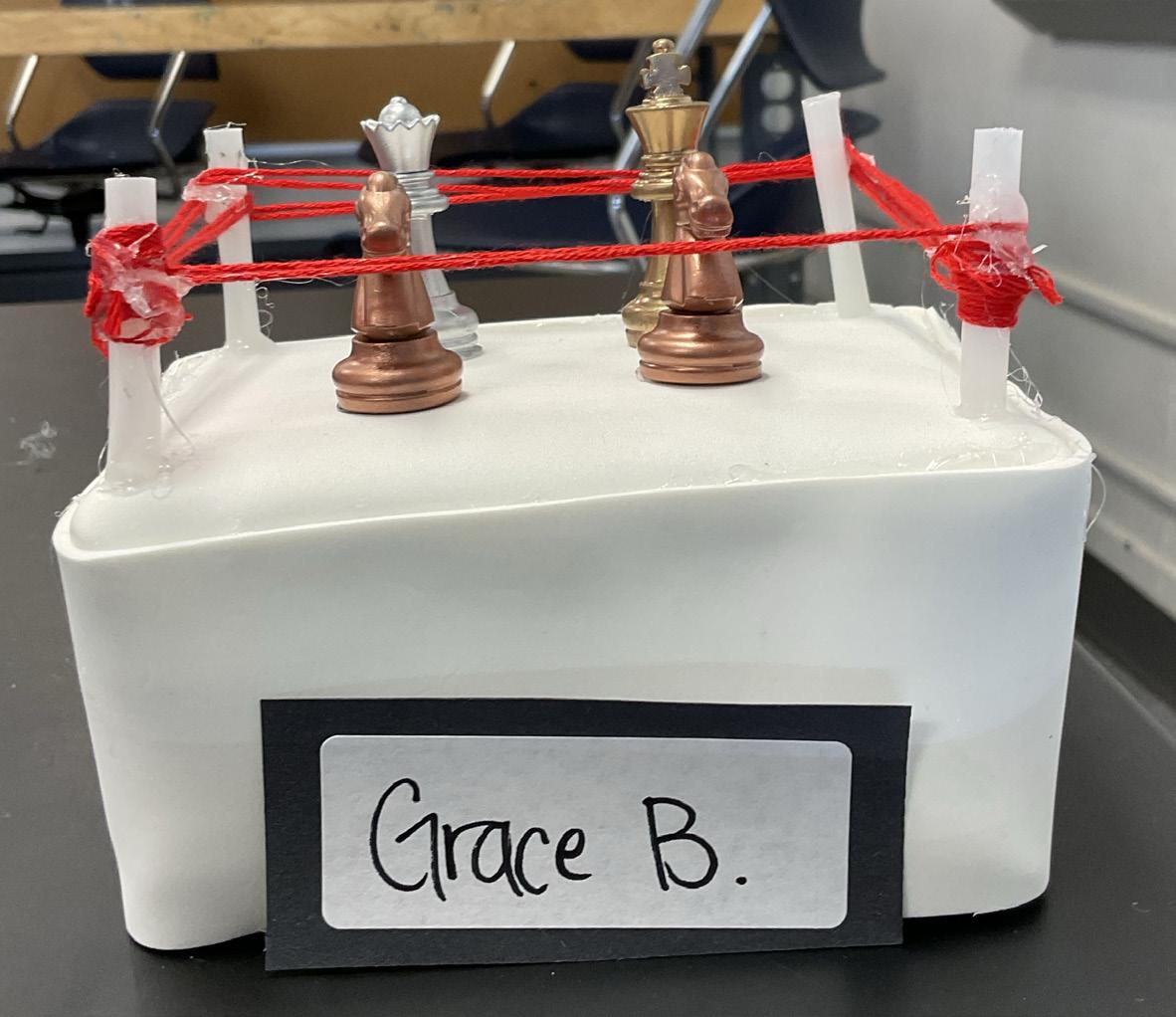

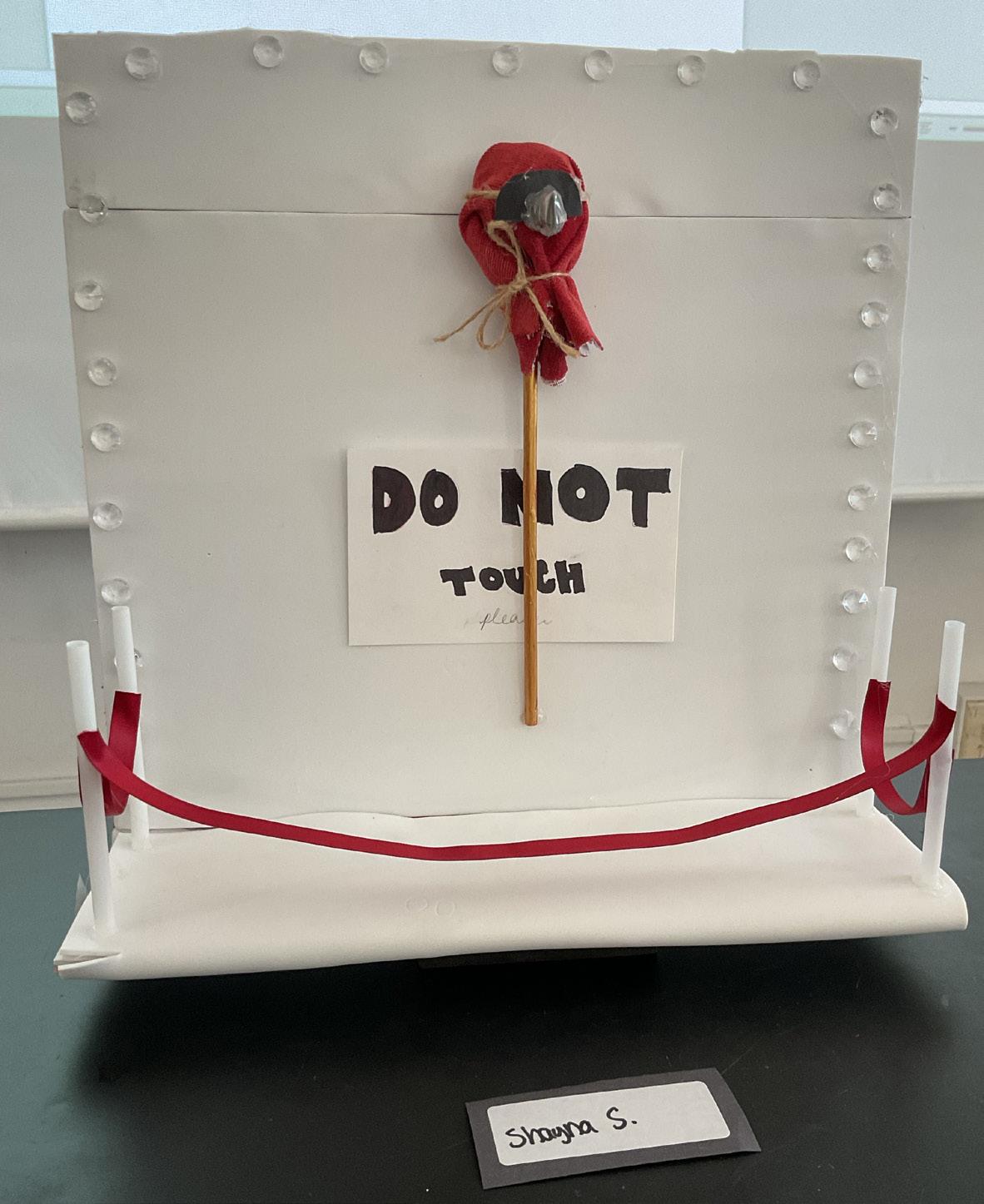 Grace Barrett ’27
Simon Maza ’27
Shayna Safirstein ’27
Grace Barrett ’27
Simon Maza ’27
Shayna Safirstein ’27
Animals in Colonial America
Did you know that sheep started the American Revolution? Or that cows helped with the Westward Expansion? The Revolution and Westward Expansion were turning points in our country’s history, but they could not have occurred without animals. Animals like horses, pigs, cows, sheep, and chickens played many important roles in the history of our country that we are unaware of. They thrived in our country long before we did. From wandering the vast plains and lush forests to living in our homes, animals have always been there for humans. Since the earliest days in our country, these animals have provided us with a stable and nutritious diet, warm clothing, ways of transportation, and assistance in everyday life. Because of these benefits, the colonies would not have developed in terms of economics and population to what they are today without animals such as horses, sheep, cattle, pigs, and chickens.
Horses played an extremely important role in shaping the history of our country. They have existed in America long before even the first European settlers arrived. From brave stallions that Native Americans rode upon while hunting in the wild plains to common transportation assistants and everyday loyal companions, horses have always been a treasure to our history. During times when colonies were flourishing across the east coast, new daily tasks and labors were constantly being discovered. Of course, horses were there to take some of the weight off of the colonists; an example being transportation. Transportation was vital to colonists, as they needed it to get essential supplies and to travel long distances. Horses had much greater strength and stamina than any other animals available, so they fulfilled the important job of transporting colonists.1 Horses that were used to transport riders, pull carriages, carts, and plows, and tread wheat were known as carriage or plow horses. However, wealthier folks like George Washington had a wider variety of horses in their own herds. This introduces how horses were involved with social status. Land was important, because land meant wealth, and this meant you could properly care for at least one horse, or even more.2 Horses were expensive to keep during colonial
1 J.M Hochstetler, Farm Animals in Colonial Times, last modified July 15, 2017, accessed November 8, 2022, https://www. hhhistory.com/2017/07/farm-animals-in-colonial-times.html
2 Rhiannon O’Neil, Horsing Around: The Cost of Horse Ownership in 1760 Virginia, last modified March 23, 2017, accessed December 6, 2022, https://projects.cah.ucf.edu/economyofgoods/ index.php/2018/09/24/horsing-around-the-cost-of-horse-ownership-in-
times, as they still are today. The expenses of all their many requirements like feed, grooming supplies, and riding gear added up. While some horses were used for work – to plow fields and transport goods to market –wealthier colonists likely rode their horses for business, pleasure, or sport. There were several hundred breeds of horses on earth, but a select few were the most desirable to colonists.3 The Marsh Tacky is a sturdy, well balanced, and behaved horse. Its gentle nature and easily managed size made it the preferred breed for women and children, but the Marsh Tacky’s strength and fearlessness in the field made it popular as a working animal utilized for hunting and herding cattle. Of course the Marsh Tacky isn’t the only horse breed that colonists owned, but certain breeds may be better at some tasks than others. Horses were not just used in colonial villages and farms but out on the battlefield as well. The Revolutionary War was very deadly for soldiers already to be partaking in, so having the help and support of horses aided them immensely.4 Horses would help carry heavy guns, ammunition, and other essential supplies when motorized transport was not possible. They would also help with medical evacuation by pulling ambulances. This helped get resources and vital medical supplies to wounded soldiers who needed them or helped quickly evacuate them from the battlefield. This shows how horses were strong, supportive parts of the foundation that eventually was built up to become the country we live in today.
Pigs were highly beneficial to farmers and colonist’s diets. Ever since their arrival, they were very quick to adjust to their new home.5 Pigs were brought to Jamestown in 1607 from a colonizing expedition. Later, the pig population exploded and colonists were letting them lose in the woods to keep the numbers under control. Because pigs adapted so easily to their new environment, they felt comfortable to reproduce and their numbers grew substantially. While colonists kept the number of pigs under control, they found many ways pigs can benefit them.6 Pigs were a very common type 1760-virginia/
3 GRIT, American Livestock Breeds from Colonial Times, last modified April 7, 2010, accessed November 16, 2022, https://www. grit.com/animals/american-livestock-breeds-from-colonial-times/.
4 Imperial War Museums, 12 Ways Animals Have Helped the War Effort, last modified June 6, 2006, accessed November 17, 2022, https://www.iwm.org.uk/history/12-ways-animals-have-helped-thewar-effort.
5 Valerie Porter, Pigs: A Handbook to the Breeds of the World (Ithaca, N.Y.: Comstock Pub. Associates, 1993), [Page #].
6 John P. Hunter, Link to the Past, Bridge to the Future: Colonial Williamsburg’s Animals (Williamsburg, Va.: Colonial Williamsburg Foundation, 2005), [Page #].
Shea Adams ’27
of livestock in colonial Virginia. They were a popular choice of meat for colonists who couldn’t afford lamb or beef. They were also very easy to own because they thrived with little to no supervision, had a flexible food supply, and reproduced rapidly. This made them a great choice of livestock for colonists. For many colonists, the amount of money they had to spend on food was limited. Mostly wealthy folks dined on wide varieties of meats, so pork was a great solution for lower class colonists to still have access to proteins from meat. For farmers looking to raise livestock, pigs had many traits that made them enticing. They could raise large numbers of them without having to spend large sums of money. They didn’t require specific food because they would eat leftovers of almost anything humans ate. Additionally, they required low attention so farmers did not have to put much effort into tending to them, so they could focus on other tasks.7 Pennsylvania, which would become a major hog colony, was settled by the Swedish, then the English, and then the Germans. The Germans, like the Quakers, were careful with their animals and fattened them on corn to produce high quality pork. By 1700 this Pennsylvania system of feeding corn or maize to pigs became standard practice in New England and the Middle Atlantic colonies. By the 1730s there were stable agricultural and commercial English communities along most of the East Coast. With the discovery that feeding pigs corn produced higher quality pork, colonies up and down the East Coast adopted this custom and it advanced their agricultural practices. By growing more corn, colonists could feed pigs better, which resulted in pigs that could be sold for more money in markets. With the introduction of pigs, the colonists had a new, cheaper source of protein, and a source of income from selling the pork that didn’t demand a lot of time, labor, and spending.
Cows contributed to the agricultural community and economy substantially. Cows were usually only associated with their production of milk, but they had many other characteristics that were equally important. Altogether this made cows a helpful aid to not only farmers, but also every colonist. In fact, colonists were probably assisted by cows in many more ways than they even realized.8 Beginning in 1623, the Pilgrims imported British Devon cattle to New England. The hardiness of the breed and the ready availability of the cattle near British ports made them an obvious choice for the transatlantic voyage. The breed became well-established in colonial America, spreading as far as Florida. Later, Devon cattle
were the draft animals of choice for pioneers braving the Oregon Trail. When traveling such great distances like the Oregon Trail, colonists would have loved the luxury of modern day transportations like airplanes, trains, and cars. However, these innovations were far from existence in colonial times. The most common way of traveling long distances was by wagon or cart. But these vehicles could not go anywhere without the assistance of one or more strong cattle pulling them. So without cows’ help in transportation, colonists could not have traveled and settled in the West. Alongside the help cows provided with travel, they also produced numerous nutritional products.9 Cattle gave Indians and colonists access to dairy, which included processing butter and cheeses to supplement their diets. As soon as Indians and colonists discovered how beneficial beef was to have, it rapidly rose in popularity and cows were becoming highly praised.10 Beef altered dietary habits, enriching nutrition with proteins necessary to sustain a higher quality of life, longer life spans, and fertile periods, resulting in larger populations. Not only was beef a delicious dinner, but it also had many long term benefits by introducing better health for colonists. There is no doubt that the cow population also rose substantially. Farmers made profits off of raising these animals and selling the many products they produced including dairy, beef, and leather not only to colonists locally but also across seas to other countries. The contribution of cows to the success of the early colonies included nutrient rich meat that provided many health benefits, dairy and leather for selling and trading, and assistance with transportation and farming labor. For these reasons colonists would not have thrived without the existence of cows.
Sheep were very valuable to colonists and a great help to the clothing and trading industry. Sheep produced wool that is used to manufacture many different articles of clothing such as sweaters, pants, hats, and coats. During colonial times, home heating did not exist like it does today. Therefore, clothing made of wool was essential to stay warm during the winter.11 Known for its docility and the length and sheen of its wool, the Leicester Longwool was introduced to North America from Britain before the Revolutionary War and remained popular into the 1800s. These sheep matured quickly and produced a soft, heavy fleece that fell in long ringlets. The wool was very
9 Elizabeth D. Schafer, “Animals in Colonial America,” in Colonization and Settlement, Third Edition (n.p.: Facts On File, 2017), [Page 2], http://online.infobase.com/Auth/Index?aid=17980&itemid=WE52&articleId=209228.
10 Schafer, “Animals in Colonial,” [Page 2].
11 J.M Hochstetler, Farm Animals in Colonial Times.
8 GRIT, American Livestock Breeds from Colonial Times.
7 Porter, Pigs: A Handbook, [Page 40].
desirable for spinning, weaving, and making felt and hair for dolls. In addition to clothing, sheep wool was used to make some of the toys that young children enjoyed and had in their homes.12 Sheep and wool production became so important that in 1664 Massachusetts passed a law requiring children to learn how to spin and weave. In 1662, Virginia offered five pounds of tobacco for every one yard of wool cloth. With continued growth of the wool trade, the colonies began to export wool to other European Countries. Wool was a primary commodity traded between the Northern and Southern colonies. This was very beneficial to the colonies’ economies because they were receiving resources that they couldn’t produce within their own state. In addition, wool started getting exported overseas to Europe.13 The Wool Act was just the beginning of Great Britain’s efforts to stifle colonial economic growth through trade restrictions and taxes. Although, unlike many of the other Acts on consumer goods, the Wool Act was not repealed by Great Britain until after the colonies had won their independence. With the help of wool, the economies of the colonies were becoming stronger and more sufficient. Wool was very important to Britain as well, so they felt threatened and placed a tax on it and refused to lift the tax until after the Revolution. The Wool Act was pivotal in drawing enough support for the Revolutionary War among many groups of colonists. Not only did sheep provide wool for the colonists’ clothes and toys, but wool became an important part of the economy in colonial America. Therefore when the British imposed taxes on wool, the colonists were motivated to fight for their independence.
Chickens were a great addition to the daily lives of colonial families, especially in rural areas. They provided food including a source of meat and eggs.14 Poultry was really common in the eighteenth century. If you were poor and you had any livestock, you had chickens. They were easy to raise; they reproduced in large numbers; and they reached sexual maturity early. Unlike horses, who were primarily owned by the wealthier colonists, chickens were available to many more people. This made them appealing to families living in rural areas looking to raise livestock. Chickens produced eggs to be eaten by the owners or traded and sold for other goods. An excerpt from a diary of a colonial farmer in the 1700s
12 Chris Stevenson, Chrisstevensonauthor.com, last modified April 11, 2016, accessed November 17, 2022,https://chrisstevensonauthor.com/2016/04/11/how-sheep-helped-start-a-revolution
13 Chris Stevenson, Chrisstevensonauthor.com.
14 Ed Crews, Research.colonialwilliamsburg.org, last modified January 9, 2009, accessed December 2, 2022, https://research.colonialwilliamsburg.org/Foundation/journal/Winter09/hens.cfm
states:15 “Then we went and saw the Indian boys shoot and the Indian girls run for a prize. We had likewise a war dance by the men and a love dance by the women, which sports lasted till it grew dark. Then we went to supper and I ate chicken with a good stomach.” Chicken was a common meal to be enjoyed at the end of a day.16 Poultry was as important to cooking in the 18th century as it is today. Chickens were not only a source of meat and eggs, but they also helped to keep the bug population under control in colonial gardens. By eradicating pests from the gardens, chickens saved tons of crops. Growing crops was already a burden for farmers, so they definitely appreciated the chickens snacking on bugs that could ruin their whole harvest.17 Chickens also consumed a lot of garden waste. For example, if you’d finished picking all the peas, then you pulled up the vines and fed them to the chickens. When you had a biscuit that didn’t bake properly or bread with mold, you threw it into the farmyard. Chickens love bugs and are omnivorous, so they ate meat and really loved mice. Expired food and waste in the farmyard could attract harmful bacteria that could kill plants and vegetables. Chickens couldn’t be harmed by eating leftover food or small animals in the gardens, so they were happy to act as vacuum cleaners for the farmers. Chickens saved farmer’s profits by guarding their crops from dangers, which helped maintain their income by selling produce at the markets. The population and economies of the early American colonies would not have been the same without the help of horses, pigs, cows, sheep, and chickens. They provided essential resources and services like food, clothing, and transportation. These animals also gave the colonists valuable products to trade. Agriculture would not have been successful without many of these animals; numerous seasons of crops would have died; and farmers would have little to nothing to sell. In today’s world we still rely on these animals. Whenever you eat beef, pork, or eggs, or wear a wool sweater in the winter, remember how it all came from animals.
16 J.M Hochstetler, Farm Animals in Colonial Times. 17 Ed Crews, Research.colonialwilliamsburg.org.
15 Louis Wright, EyeWitness to History, last modified November 11, 2006, accessed January 9, 2023, http://www.eyewitnesstohistory.com/colonialplantation.htm.
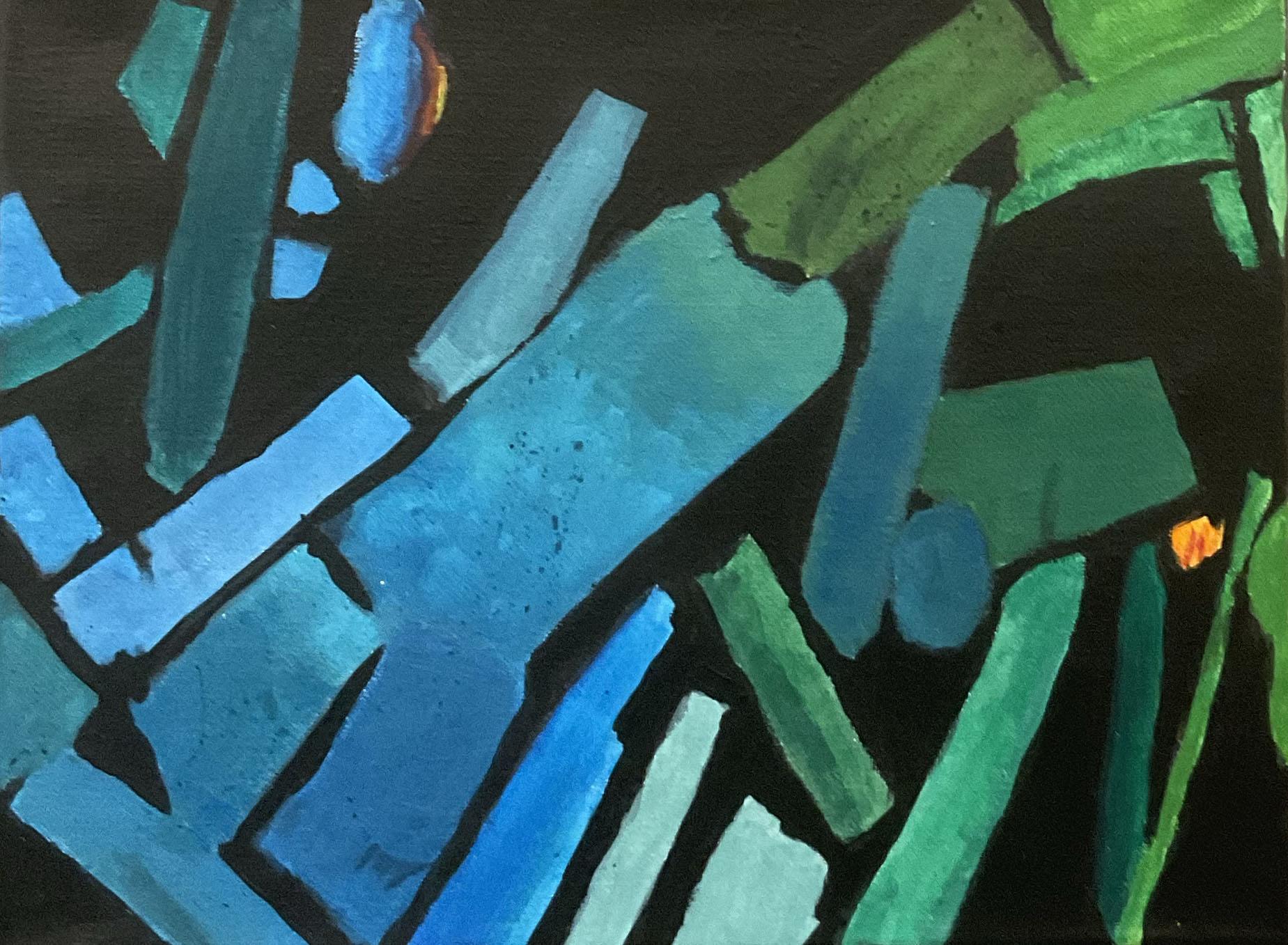
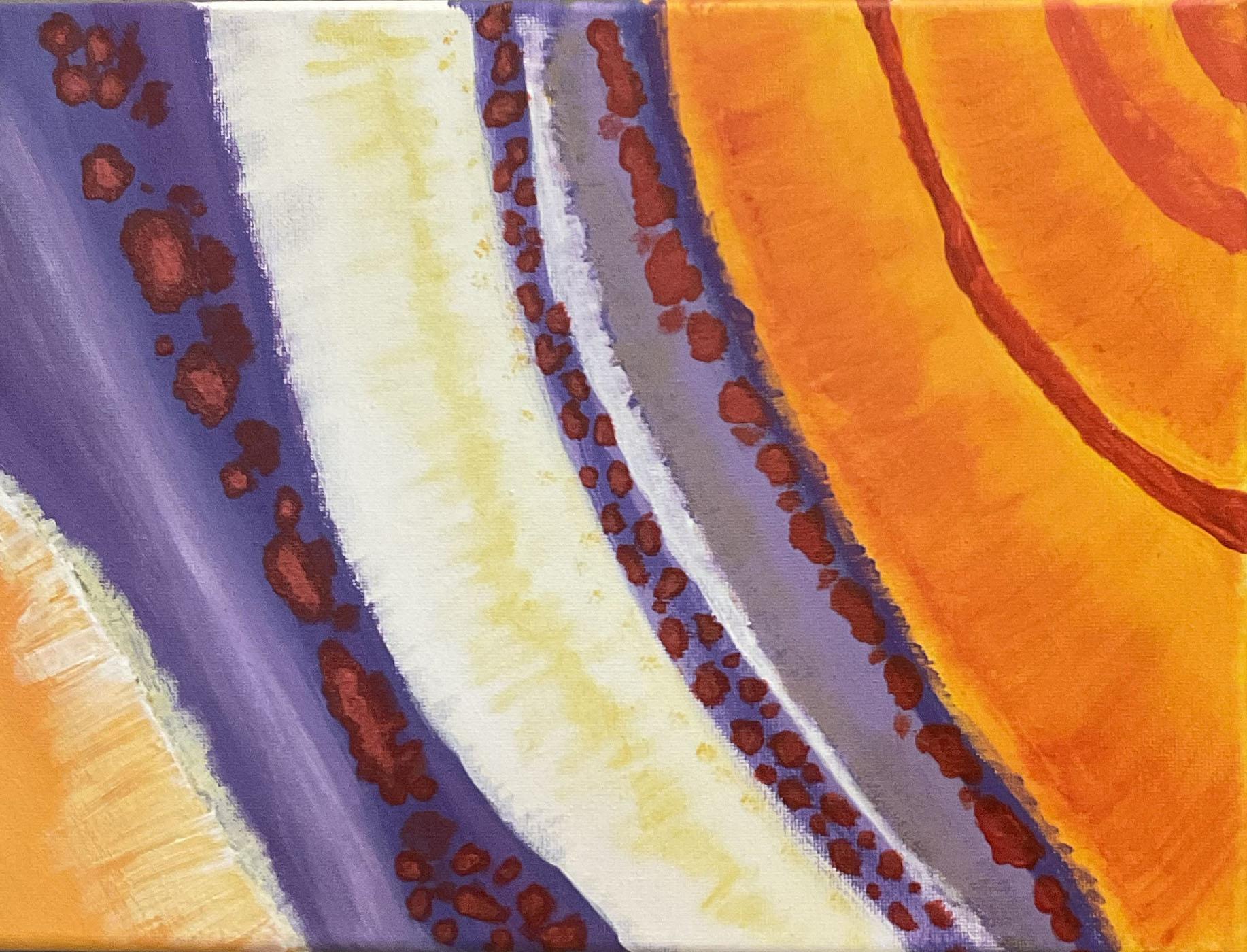 Joonkyu Shim ’28
Oliver Hejna ’28
Joonkyu Shim ’28
Oliver Hejna ’28
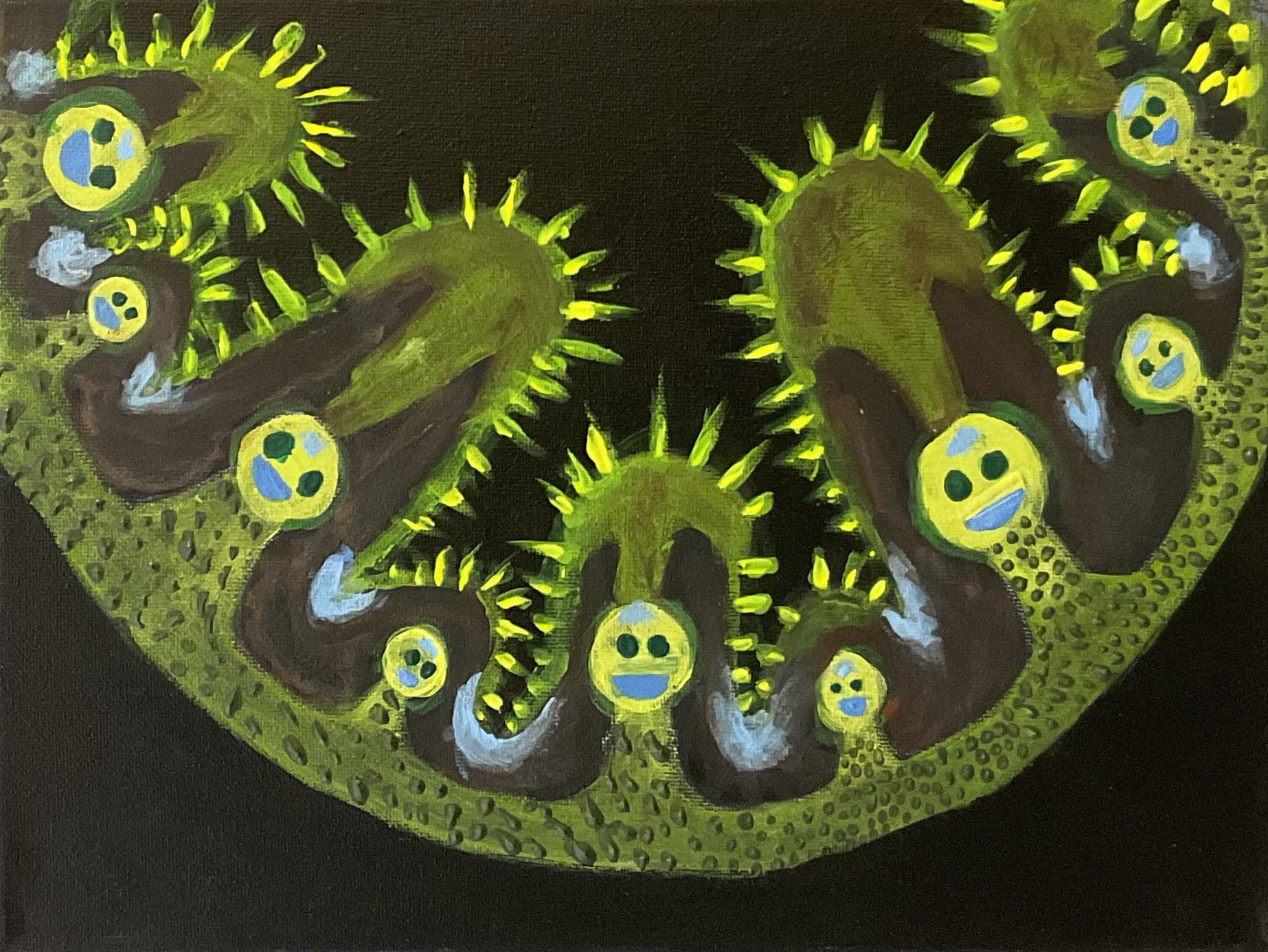
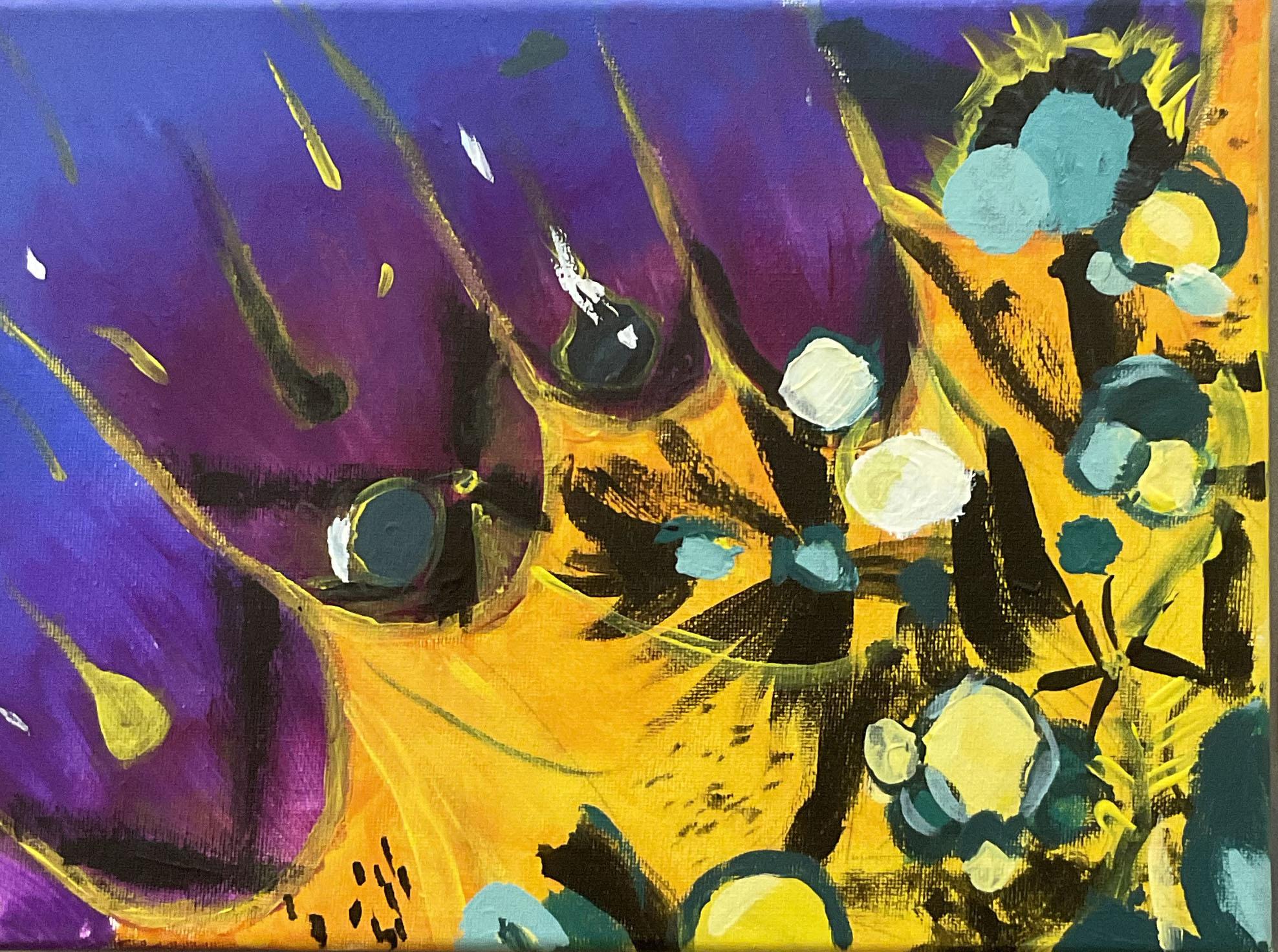 Lily Herrigel ’28
Truly Sackman ’28
Lily Herrigel ’28
Truly Sackman ’28
Fort Ticonderoga: Bringing Hope to the Colonies During the Revolutionary War
Most people know that the Revolutionary War took place in 1775 and that the Americans triumphed in the end. At first, the colonial Americans’ situation seemed like they were going to lose, but what was the turning point that started turning their losses into victories? The turning point was the capture of Fort Ticonderoga from the British. Fort Ticonderoga, located in present-day upstate New York, was created by the French in 1755 during the French and Indian War, and then captured by the British in 1759. The star-shaped fort had many desirable resources, such as large amounts of ammunition and easy access to transportation by water. Fort Ticonderoga was a desirable location for both the Americans and British because of its location and design; therefore, it contributed to many of the most well known turning points during the Revolutionary War.
During the Revolutionary War, there were two different kinds of forts that were built. One type of fort was called a field fortification and the other was a permanent fort. Field fortifications are temporary builds by the armies to respond to the enemy’s movement or threats. Permanent fortifications are usually large, well designed forts that are built when there is not any ongoing war. These forts protect strategic locations such as harbors or important cities. Regardless, both types of forts have different sizes and construction, and both were built to serve the situation at the time. At the beginning of the Revolutionary War, there were very few permanent forts in North America, which was due to the fact that most American wars were fought against Native Americans, who lacked the materials and artillery for siege warfare. Additionally, the limited amount of suitable roads to move artillery towards the inner areas of the continent also limited the use of siege artillery. Most forts built on the frontier were a little more than “wooden stockades” or “blockhouses.” Permanent fortifications tend to be on the larger side and primarily located in areas where attacks from other European powers were targeted, such as ports, cities on the coasts, and along major waterways. Cities such as Boston, New York, and Charleston had forts that protected them from attacks from the water. Large forts built during the Revolutionary War served as military posts around the colonies’ edges such as those at Halifax, Nova Scotia and Boston, Massachusetts.1 1 Travis Show, “’I have never spared the Spade and Pick
Permanent fortifications are built for the purpose of strengthening military positions during times of peace and built to last. Examples of permanent forts include castles and walled cities in Europe.2 When one fort is made, it would usually stay as one fortification, either as a permanent fortification or field fortification. Typically, it would never change. Both kinds of forts would play a pivotal role in the American Revolution for both sides. Fort Ticonderoga is a permanent fort designed by Michel Chartier de Lotbinière and Marquis de Lotbinière of France in 1755. The fort was built in the shape of a star with diamond-like bastilles projecting from each corner. The bastions allowed every part of the fort’s walls to be covered from enemy fire, which would ensure the maximum amount of protection. Thick walls and angled bastions were key designs to resist artillery and were the most powerful known defense used in warfare at the time. The design of Fort Ticonderoga was very unique from other forts at that time. Most forts had a circular shape or were made up of trenches, but Fort Ticonderoga’s star shape provided more lookout points making it more valuable. The word “Ticonderoga” came from the Iroquois Native Americans, and it means where two bodies of water meet together, which is the fort’s location at Lake George and Lake Champlain. The fort’s proximity to Lake Champlain and Lake George was a strategically and economically important location for the military.3 On the west side of Lake Champlain was Fort Ticonderoga; on the east side of the lake was the high ground that the rebels called and named Mount Independence. They built a one-quarter mile long bridge to connect the fort with Mount Independence. The barrier consisted of logs and iron chains, which would protect the bridge from being attacked and block British ships from going past the fort. Being on a higher elevation, the location provided a better viewing point and strategic advantage.4 The location of the fort made it desirable for armies to want to take control of it. Additionally, the fort was near two bodies of water and provided easy access to the fort by soldiers. Despite enemy attackers being able to easily reach the
Ax’: Fortifications in the American Revolution” [“I have never spared the Spade and Pick Ax”: Fortifications in the American Revolution], American Battlefield Trust, accessed November 8, 2022, https://www.battlefields.org/learn/articles/i-have-never-spared-spade-and-pick-ax-fortifications-american-revolution.
2 Field Fortifications & Forts in the American Revolution, accessed January 6, 2023, https://www.revolutionarywarjournal.com/ field-fortifications-forts-in-the-american-revolution/.
3 “Fort Ticonderoga,” Fort Ticonderoga.
4 James R. Arnold and Roberta Wiener, 1777: A Year of Decisions, vol. 5, The Revolutionary War (Danbury, Connecticut, US: Graham Education, 2002), 21.
Bella Chen ’27
fort, they would likely be caught by defending soldiers because the security of the fort was strong and they could see an oncoming attack in advance. Fort Ticonderoga started as a permanent fortification, and stayed as one throughout the duration of the Revolutionary War.
Prior to the Revolutionary War, Fort Ticonderoga played important roles during the French and Indian War and was called at the time Fort Carillon. Fort Ticonderoga controlled access north of Albany and south of Montreal and was a critical battlefield in the French and Indian War.5 In 1753, the British controlled the 13 colonies up to the Appalachian Mountains. The French and Indian War started in 1754 due to rising tensions between the French and the British who wanted more control over the regions.6 It was the starting place of Marquis de Montcalm’s famous siege of Fort William Henry. The British had attacked Montcalm’s French troops outside Carillon on July 8, 1758 resulting in one of the bloodiest battles fought in North America until the Civil War. Then, the fort was finally captured by the British in 1759, towards the middle of the French and Indian War.7 Since the British controlled New York City, their forces could travel relatively straight up the Hudson River and across Lake Champlain to the St Lawrence River and into New France. Any invading army would be within 100 miles of the two largest French towns in North America, Quebec City and Montreal. During the French and Indian War, several engagements were fought at this location, and by the war’s end in 1763, British forces had triumphed, and they changed the name of Fort Carillon to Fort Ticonderoga. By 1775, the British army had a shortage of troops with only around 50 men, and hence eyed many important military areas including Fort Ticonderoga and Fort Crown Point to strengthen their position.8 The fort was even important before the Revolutionary War because with control of Fort Ticonderoga, it allowed the British to start the war with an advantage. During the Revolutionary War, the Green Mountain Boys, a patriotic militia from present-day Vermont, were the ones that were most involved with the capture of Fort Ticonderoga. Their attack caught the British commanders by surprise, and they demanded the surrender of the fort
5 Fort Ticonderoga (1775).
6 French and Indian War/Seven Years’ War, 1754–63, accessed December 6, 2022, https://history.state.gov/milestones/1750-1775/ french-indian-war#:~:text=The%20French%20and%20Indian%20 War%20began%20in%201754%20and%20ended,ultimately%20 to%20the%20American%20Revolution.
7 Fort Ticonderoga (1775).
8 Fort Ticonderoga: A Key Component in America’s Quest for Independence, accessed November 30, 2022, https://www.americanacorner.com/blog/fort-ticonderoga.
immediately. The leader of the Green Mountain Boys, Allen, eventually left, but another leader, Arnold, stayed until June 1775 when 1,000 patriots from Connecticut arrived to take control of the fort.9 The amount of artillery held at Fort Ticonderoga was astounding, including 58 cannons that weighed up to 12 to 18 pounds. The goal was to transport the artillery to support George Washington. George Washington, the commander of the Continental Army, sent one of his officers, Colonel Henry Knox, to take the artillery that was left behind at Fort Ticonderoga and transport it to Boston. Knox organized and started the transfer of the guns over the snow-covered Berkshire Mountains of western Massachusetts and the frozen rivers nearby.10 His whole journey to Boston took around 56 days. A primary source letter from Knox revealed that in order to move the guns that winter, he brought 42 strong sleds and 80 yoke of oxen to drag the cannons to Springfield, Massachusetts. It was very difficult to head north in the middle of that year’s winter, where the roads were very worn out and the sleds could only tolerate around 25 miles. He had hoped that it would snow so the sleds would be able to make it in 16 or 17 days and to “be able to present to your excellency a noble train of artillery.” His nearly two month journey north would be worth it in the end because the amount of ammunition that Knox brought up to Boston would turn the tide of the Revolutionary War and move the British out of Boston. With the extra artillery from Fort Ticonderoga, the Continental Army was in a better position to force the British out of Boston. According to the British plan, Lieutenant Colonel John Burgoyne would move his army of 7,173 soldiers north to Lake Champlain and capture Fort Ticonderoga. Simultaneously, Lieutenant Colonel Barry St. Leger would sail west on the St. Lawrence River to Lake Ontario and land at Oswego, New York with his 2,000 soldiers and march into the Mohawk River Valley to capture Fort Stanwix. Both armies would meet at Albany and provide further soldier support in New York.11 Washington was about to have his first success and force the British out of Boston in March 1776 because he had already transported cannons from Fort Ticonderoga in New York to Dorchester Heights, which overlooked Boston. General William Howe saw the vulnerability of his position and retreated to Halifax, Nova Scotia.
9 Fort Ticonderoga (1775).
10 Fort Ticonderoga (1775).
11
Ballard C. Campbell, “The American Revolution Should the Colonies Separate from Great Britain?,” Issues and Controversies in History, last modified 2011, https://ich.infobase.com/Auth/Index-
?aid=17980&itemid=WE58&mainarticleId=592572.
This retreat was Washington’s first major triumph.12 The British’s unpreparedness for the Americans led to their flee from Boston. Had the British been more prepared and faced the Americans, the outcome may have been different. Fort Ticonderoga’s capture and the forcing of British forces out of Boston were two major American victories of the American Revolution.
After the Americans took ownership of the fort for two years, the British eventually recaptured it under the command of General Burgoyne in June of 1777. General Burgoyne went to Lake Champlain towards Fort Ticonderoga with two fully stocked ammunition ships and 36 other ships with 7,400 men. The small number of 4,000 American soldiers led by Major General Arthur St. Clair at Fort Ticonderoga was no match for the British army.13 Although Fort Ticonderoga had a strong fortification and strategic position, it was at risk of attacks from the British from three nearby hills: Mount Hope, Sugar Loaf Hill, and Mount Independence. Proper defense within all of the hills proved too difficult for the American army. St. Clair’s plan was to hold out from the British as long as possible and retreat via a bridge to cross the lake to Mount Independence and withdraw a safe distance. Two days after the British arrived near Fort Ticonderoga, July 4th, 1777, the British sent troops and artillery to the top of Sugar Loaf Mountain, which was the peak that Americans believed was unreachable. General St. Clair discovered that the British forces were on the mountain, so he decided to escape the fort with his supplies. In the middle of the night on July 5th, 1777, the Americans commenced their withdrawal from Fort Ticonderoga. General St. Clair sent his supplies and ill troops by water, and the rest of the army, which was the majority of it, left by the roads. The following morning, General Burgoyne sent warships to Lake Champlain to block and capture the American supplies. The Americans guarding the supplies were able to escape in a running battle, but during this encounter the American troops were decimated. The American army had set up camp at Fort Hubbardton, Vermont with the back of the army being guarded by Colonel Ebenezer Francis. When the British attacked, Colonel Francis was killed in a deadly fight and the American rear guard was almost fully destroyed, but the Americans were able to hold off the assault long enough to escape from the British.14 Eventually, the fort
12 Arnold and Wiener, 1777: A Year, 14.
13 British Recapture Ticonderoga 1777, accessed January 3, 2023, https://www.historycentral.com/Revolt/Bticonderoga.html#:~:text=The%20British%20captured%20Fort%20Ticonderoga,withdrew%20to%20fight%20another%20day.
14 British Recapture Ticonderoga 1777, accessed January 3,
was no longer an important part of the Revolutionary War as the fighting moved towards the south and away from northern New York.
Fort Ticonderoga was important to both the Americans and British because of its location and design. The capture of this fort by the Americans in 1775 was the first major victory for them leading to a crucial pivot in the war. However, two years later the British recaptured it from the colonists; thereafter, the fort no longer played any significance in the war because the fighting moved farther south. Most people know that the colonies finally won the war in 1783 at the Battle of Yorktown. While the Battle of Trenton and the Battle of Saratoga are well known, many do not know that Fort Ticonderoga was a major victory cementing the belief that the Continental Army could beat the British.
Bibliography
Arnold, James R., and Roberta Wiener. 1777: A Year of Decisions. Vol. 5 of The Revolutionary War. Danbury, Connecticut, US: Graham Education, 2002.This whole multi volume set is called the Revolutionary War. However, this book is about 1777 in particular. In chapter 3, “Burgoyne Makes a Mistake”, there are mentions of Fort Ticonderoga because he had tried to capture it before. Most of it is about other wars though but there is also a map.
Barbieri, Michael. “Dragging cannon from Fort Ticonderoga to Boston, 1775.” AllThingsLiberty. Last modified March 17, 1766. Accessed November 18, 2022. https://www.gilderlehrman.org/history-resources/ spotlight-primary-source/dragging-cannon-fortticonderoga-boston-1775. This is going to be my primary source. It’s a letter from Henry Knox sent to George Washington.
British Recapture Ticonderoga 1777. Accessed January 3, 2023. https://www.historycentral.com/Revolt/ Bticonderoga.html#:~:text=The%20British%20 captured%20Fort%20Ticonderoga,withdrew%20 to%20fight%20another%20day.
Campbell, Ballard C. “The American Revolution Should the Colonies Separate from Great Britain?” Issues and Controversies in History. Last modified 2011. https://ich.infobase.com/Auth/ Index?aid=17980&itemid=WE58&mainarticleId= 592572. In this database, the section “1776: From
2023, https://www.historycentral.com/Revolt/Bticonderoga.html#:~:text=The%20British%20captured%20Fort%20Ticonderoga,withdrew%20to%20fight%20another%20day
Confrontation to Separation” will help me answer what happen when retrieving the fort. It is only one paragraph, but it shows the reasons why they took it, also how they took it. Plus it shows the thoughts of what the government thinks.
Field Fortifications & Forts in the American Revolution. Accessed January 6, 2023. https://www. revolutionarywarjournal.com/field-fortificationsforts-in-the-american-revolution/.
Fort Ticonderoga: A Key Component in America’s Quest for Independence. Accessed November 30, 2022. https:// www.americanacorner.com/blog/fort-ticonderoga.
Fort Ticonderoga (1775). Accessed November 30, 2022. https://www.battlefields.org/learn/revolutionarywar/battles/fort-ticonderoga-1775#:~:text=New%20 York%20%7C%20May%2010%2C%201775,an%20 important%20cache%20of%20artillery.
“Fort Ticonderoga: 7 Revolutionary War Site Facts” [Fort Ticonderoga: 7 Revolutionary War Site Facts]. Fort Ticonderoga. Accessed November 9, 2022. https://www.fortticonderoga.org/travelerstips/fortticonderoga-7-revolutionary-war-site-facts/. This website has 7 different facts about Fort Ticonderoga. Each fact is a little part about different aspects of the fort.
French and Indian War/Seven Years’ War, 1754–63. Accessed December 6, 2022. https://history. state.gov/milestones/1750-1775/french-indianwar#:~:text=The%20French%20and%20Indian%20 War%20began%20in%201754%20and%20 ended,ultimately%20to%20the%20American%20 Revolution.

Show, Travis. “’I have never spared the Spade and Pick Ax’: Fortifications in the American Revolution” [“I have never spared the Spade and Pick Ax”: Fortifications in the American Revolution]. American Battlefield Trust. Accessed November 8, 2022. https://www.battlefields. org/learn/articles/i-have-never-spared-spade-andpick-ax-fortifications-american-revolution.This website will help me with my parts about the different kinds of fortification. There are 2 kinds and there’s a lot written down. It also has photos of the structure as well as the layout. There are also photos about how a siege would usually work when another army is trying to capture another’s.
Siege of Fort Ticonderoga. Accessed January 6, 2023. https://www.britannica.com/event/Siege-of-FortTiconderoga.
 Madison Lee ’28
Georgia Aitken ’28
Madison Lee ’28
Georgia Aitken ’28
Gratefulness
Talking, laughing, learning
Math, reading, writing
Pillows on the carpet
Stools at the desk
Reading on the rug
Working together
This is our class
-Skylar
Fass ’31
I am Rosie
I am: Brave
I wonder: If my class can be quieter
I hear: Birds chirping
I see: The magic of friendship
I want: World Peace
I am: Rosie
I pretend: To have magic powers
I feel: Magic in the air
I touch: The fur of cats
I worry: At the thought of hoverboards
I cry: When I get badly hurt
I am: Rosie
I understand: The other people out there with ADHD
I say: “I’m perfectly imperfect!”
I dream: About having a cat
I hope: For seeing family
I am: Rosie
-Rosie Cocco ’31
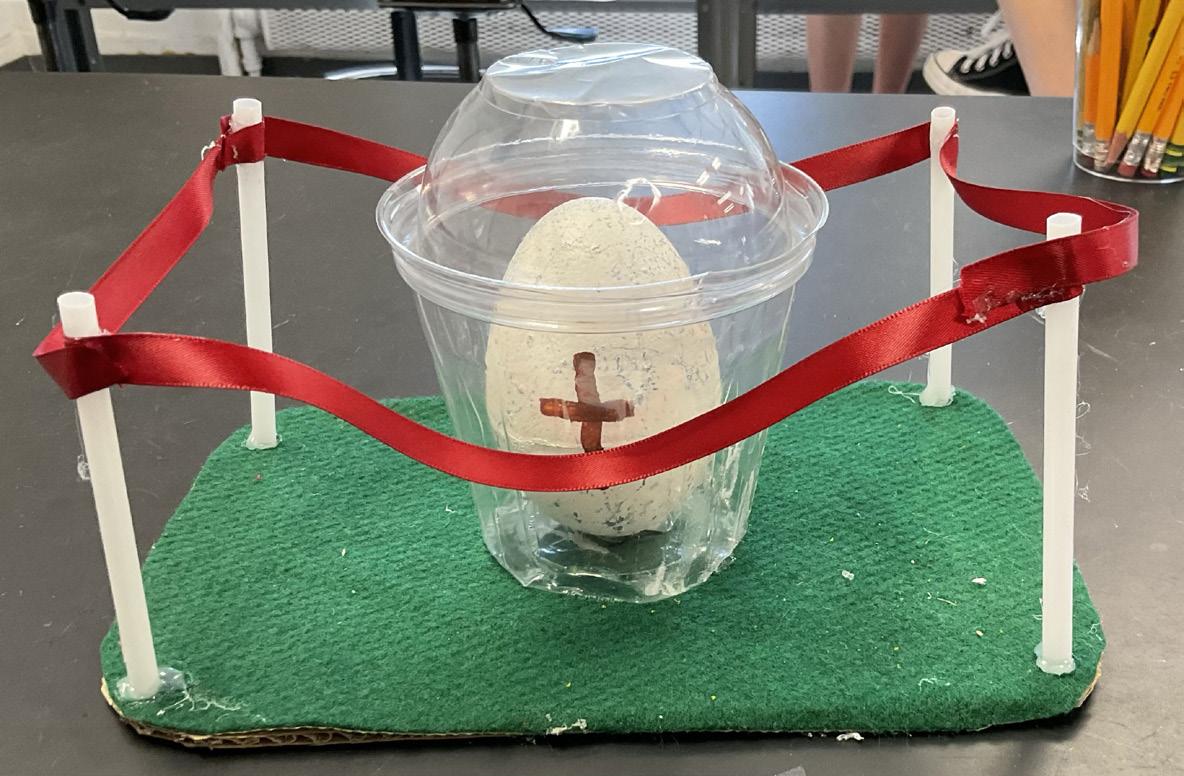
Things we think, Things we love, Things we believe, Things we are thankful for, People we trust, People we know, People that care about us, People that we care about People that love us, People we love, People we think of, When times are tough, Just know, That if you’re sad, Or mad, Or disappointed, To always be grateful, Because life is a challenge, With tons of moments, When you should feel grateful.
-Shaurya Ramesh ’31

Our Class Poem
Andon L evy ’29
Avalina DeLorenzo ’27
Microaggression Poem
That’s not realistic
That’s what my kindergarten teacher told me
As I was drawing a landscape

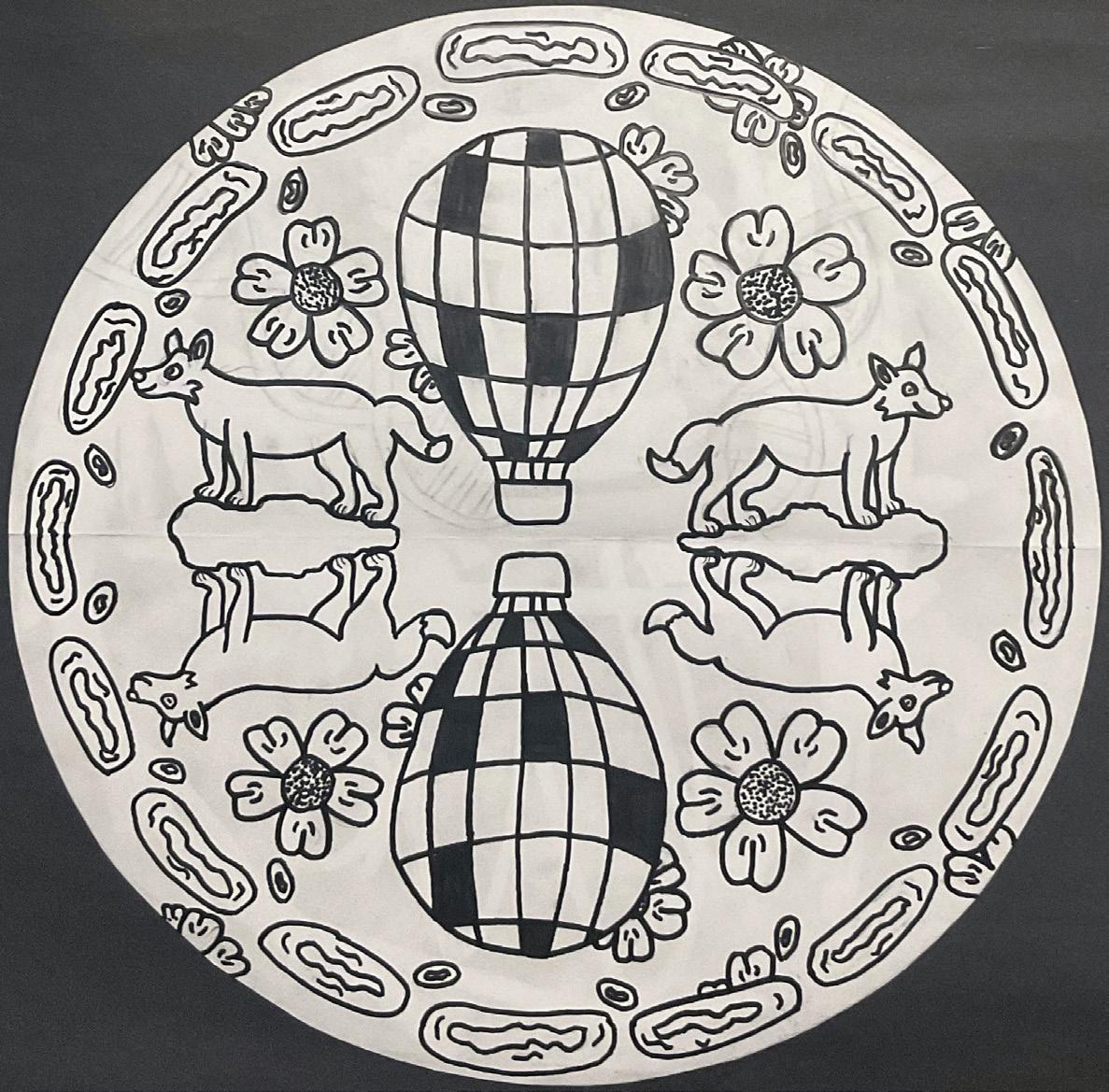
The grass was blue and the sky was pink
“You can’t draw that,” she said,
“It’s not realistic”
“Draw like a second grader,” she said I was 6 I wanted to be creative But, I couldn’t
-Abigail O’Neill ’29
Books?
Books? Do you like books?
Do I like books?
Why such a thing you ask?
Books are another world, another place to tell your story.
Have you ever heard of “A book a day keeps your mother away”?
Well, it’s a pretty good idiom!
See, if I never read anything or any books
I wouldn’t be able to spel.
If we had NO books, it would be like Santa without elves!
-Eva Newman ’31
Julius Ha m mer ’29
Molly Harrison ’31
Where I’m From
From across the world in 18 hours, to right here back at home, that’s where I’m from.
From music to dance and baking to art that’s where I’m from.
I’m from baggy ripped jeans to colorful long dresses, from ravishing bold art to big sloppy messes.
From the smell of incense and burning fall candles and the taste of sweet and spicy food that fills your mouth with love.
I come from a place far far away, where friends are family and everyone’s welcome.

I come from quarantine groups that meet on Wednesdays, where spontaneous dance breaks are always a thing.
I’m from Indian classical dance and upbeat Bollywood music
I’m from huge festivals and family FaceTime calls.
I’m from a place where knowledge is key and culture and roots are everything. But most of all, I’m from my family and that’s what matters most. -Sankirtha Kapoor
’29
Jack Ri zzo ’29
Where I’m From
I am from the charmingly uneven sidewalks
From the air that smells like fresh bread in the day
And barbeque at night
I am from the Dunkin that never has frosted pink doughnuts
But the best iced coffees
And the parks that are always under construction
I am from where there is never any parking
Having to go around the block hundreds of times
Until you find parking four blocks away
From bakeries on every corner
Where they have the best ham and cheese sandwiches
And the best espresso
I am from a place with cultural diversity
From people that value soccer in their lives
We are from a place that when soccer teams win
They shut down the streets to celebrate
I am from a place where summer starts
When you can hear the ice cream truck
I am from a place where you can walk
Anywhere
And bike everywhere
I am from a place where some people might not like
But somewhere I love
My home
-Stella DeSousa ’29

Where I’m From
I am from olives and Za’tar
I am from the cold air in the mountains
Warm breeze on the beach
From the smell of pita mixing with the sea salt
I am from the soccer ball and turf field
The sweat of the jersey and rubber bits on my socks
I am from the house of 7
Logan Lan ger ’29
Fun but workable
Our class
Creative but learnable
Our class
Athletic but teachable
Our class
Silly but focused
Our class
Laughable but kind
Our class
Is amazing
-Aviva Gardner ’31
Microaggression Poem: I’m not that much smarter than you
Hey, how are you?
No, I’m not Japanese. Not Korean either.
Not Vietnamese, not Indonesian, not Thai.
I’m Chinese.
Oh?
So what’s the cosign of four hundred and thirty-two? It’s part of my math homework tonight. Can you help me with my coding project? Really.
You’re not that good at math?
No, I’m not three grades ahead. No, I don’t know how to hack into the FBI’s concealed files section.
Oh, so you have a Chinese friend that helps you with your homework? Cool.
You have a Chinese tutor that can do Calculus in two seconds? Really?
You know a Chinese girl at your school that found government secrets one lunch by hacking into the White House’s data system?
Mmm.
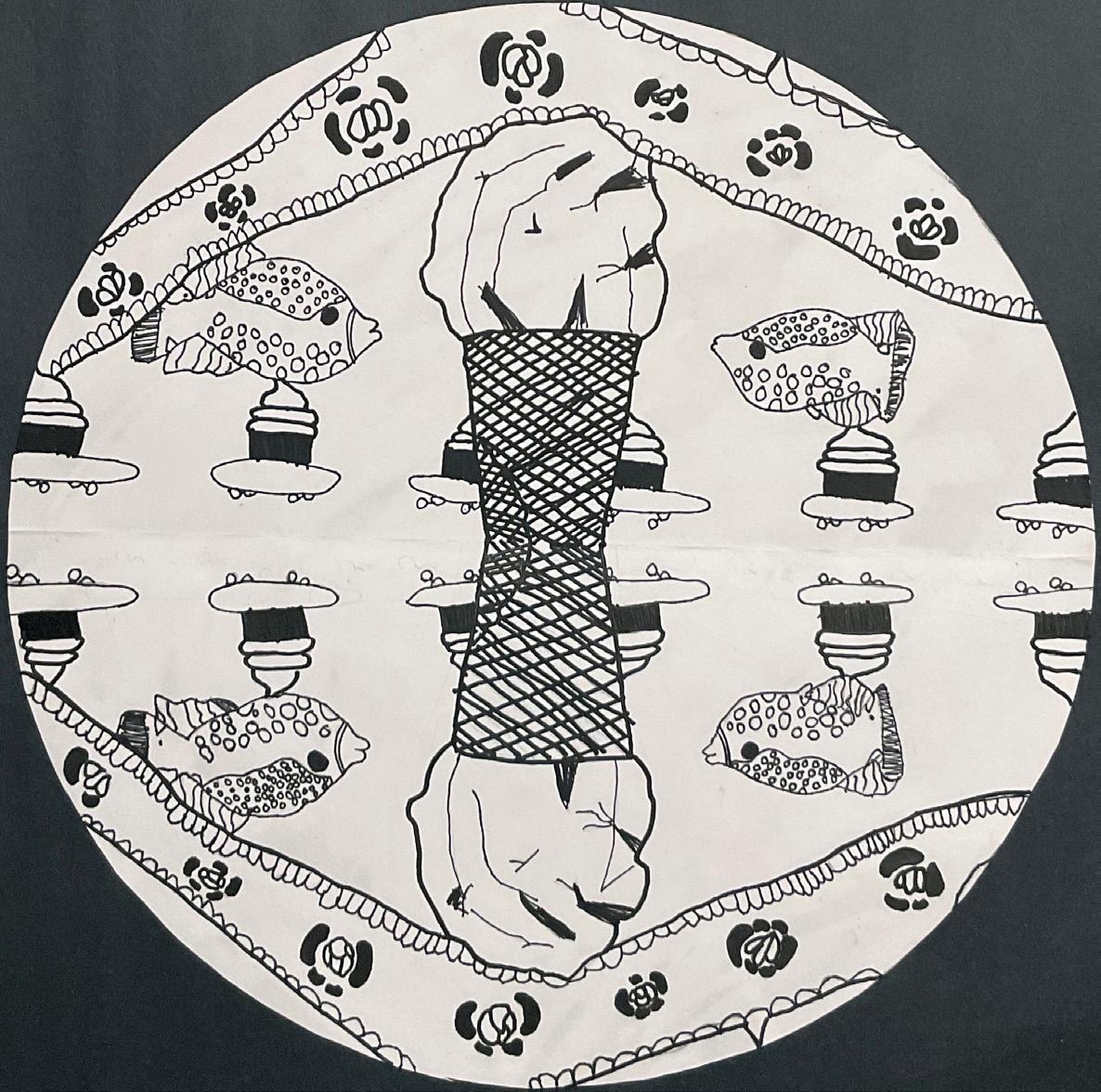
No, I didn’t invent the Pythagoreum Theorum. You know Pythagoras was a person right? Why do you think it was named after him?
No, I don’t plan on going to Princeton next year. I’m eleven.

I’m really not that much smarter than You.
-Fion Shi ’29
Mekhi Fitz gerald
’29
Avalina DeLorenzo ’27
MICROAGGRESSION POEM
That night
I was cooking food for my family
And the guests
One guest walks in, And asks me what I’m doing She tells me that I should go and play video games, And let my sister do it
I ask her why
She says because she is a girl
I let go of cooking and let my sister do it I get tears in my eyes
I am a boy and I want to cook
I say
Why are girls only allowed to cook?
Why does our world have to be like this?
Boys and girls should be equal
Forever
Until the human race
Comes to an end
-Arda Susar ’29

MICROAGGRESSION POEM
“Are you going to join the girls’ affinity group?” No.
I am a boy. Just because people thought differently when I was first born, That doesn’t mean I’m any less of a boy than you.
I am fortunate enough To live with an accepting family But that does not mean I don’t face oppression.
“Have you gotten the surgery?”
No. I don’t plan on changing that.
“What’s your real name?”
My name is Cal. That is the name I use.
“So, you’re just a tomboy?”
I am a boy. A boy in the wrong body. But I am still a boy, not a girl.
“Whatever, you’ll realize eventually That you’re just delusional.”
I’m not delusional. I know who I am, and I always have. Except now, Now I have the words to tell you.
-Cal Portner ’29
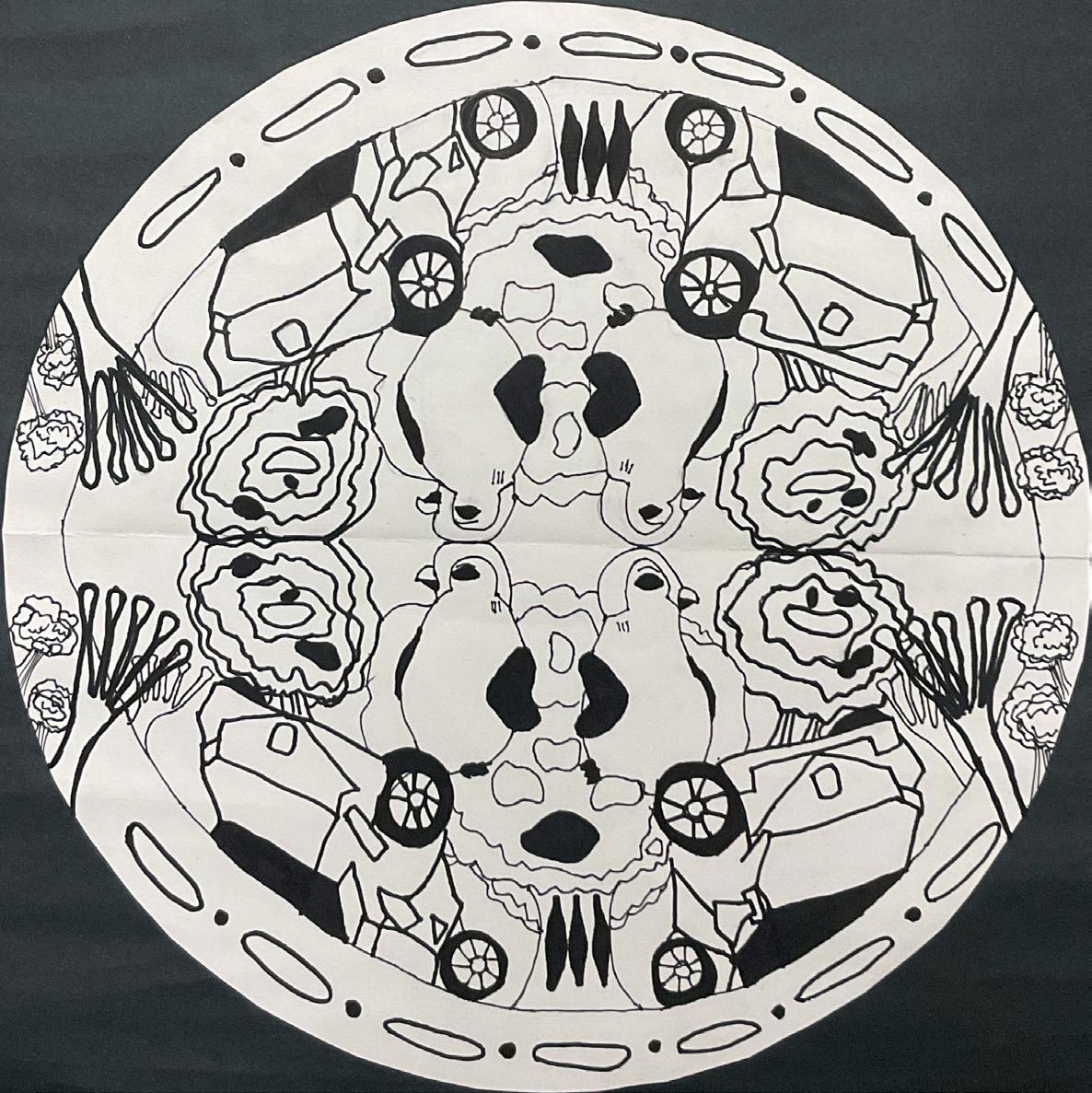 Audrey Magera ’29
Madison Lee ’28
Audrey Magera ’29
Madison Lee ’28
The Beach
As I stand at the beach with my feet in the sand, I look out at the ocean and understand. Understand that I am part of something grand.
The beach being only one special part of our Earth. Mother Earth.
I wonder about the World’s creation or birth. It’s hard to measure the value of Earth.

Being at the beach makes me so calm. The salt and the air acts as a balm. I captured a fraction of the beach with the sand in my palm.
Where I’m From
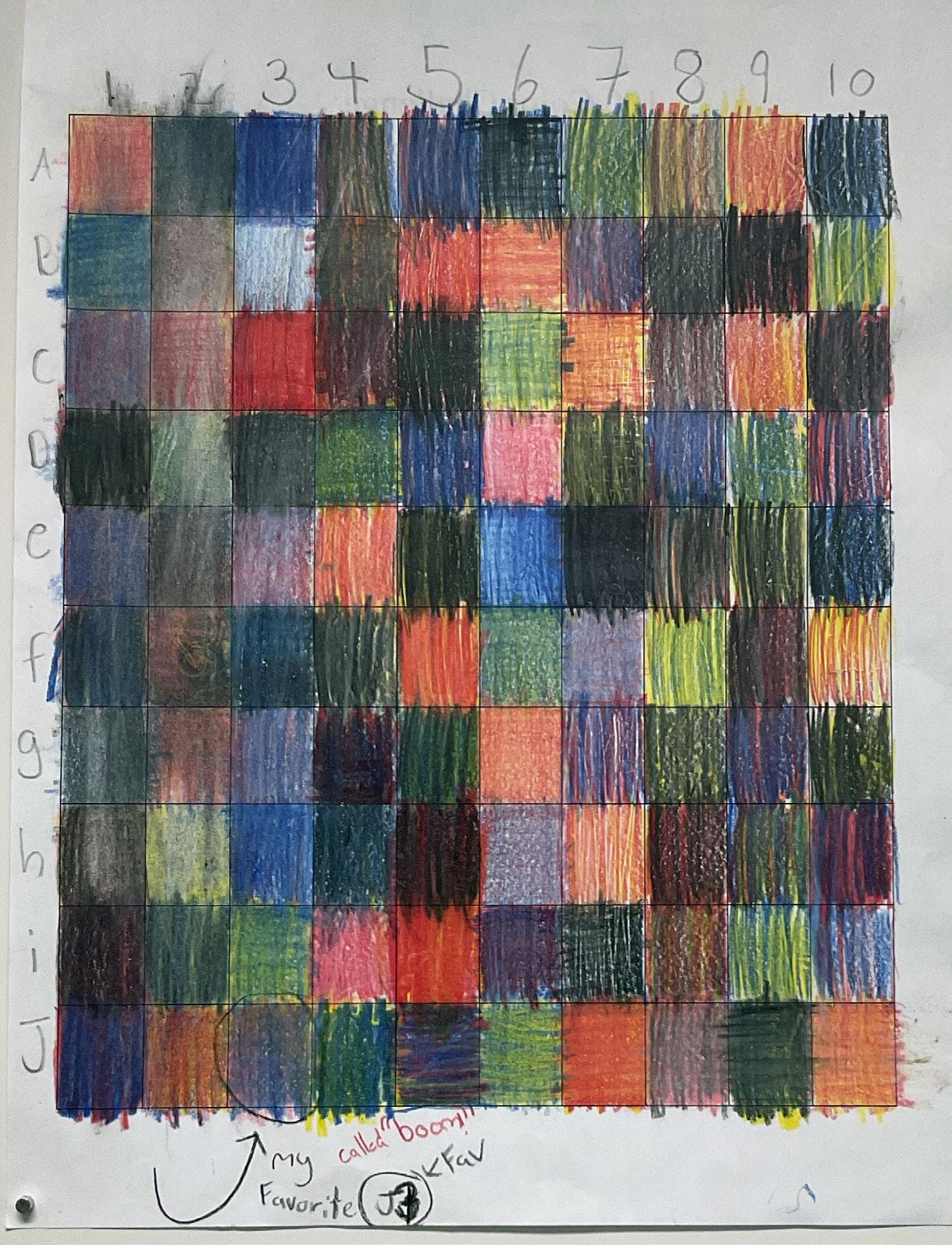
I am from masks, The coronavirus. Remote learning and sickness. Google Meet and Zoom. Disinfectant and wipes.
I am from the ping pong noise Of table tennis.
I am from Le and Geng
From sunflower seeds and tea, From rice.
I’m from eyeglasses I’m from the Chinese. I’m from yearbooks, pictures, Some almost a decade old.
I’m from a branch A leaf. From our family tree.
-Jordan Fass ’29
Annie Watkins ’29
-Max Lui ’29
Maggie Rooney ’31
Where I’m From
I am from vibrant patterns on the wall, I am from New York to Senegal. I am from the blood spilled into the ocean, I am descended from my ancestors, long gone, but always watching. I am
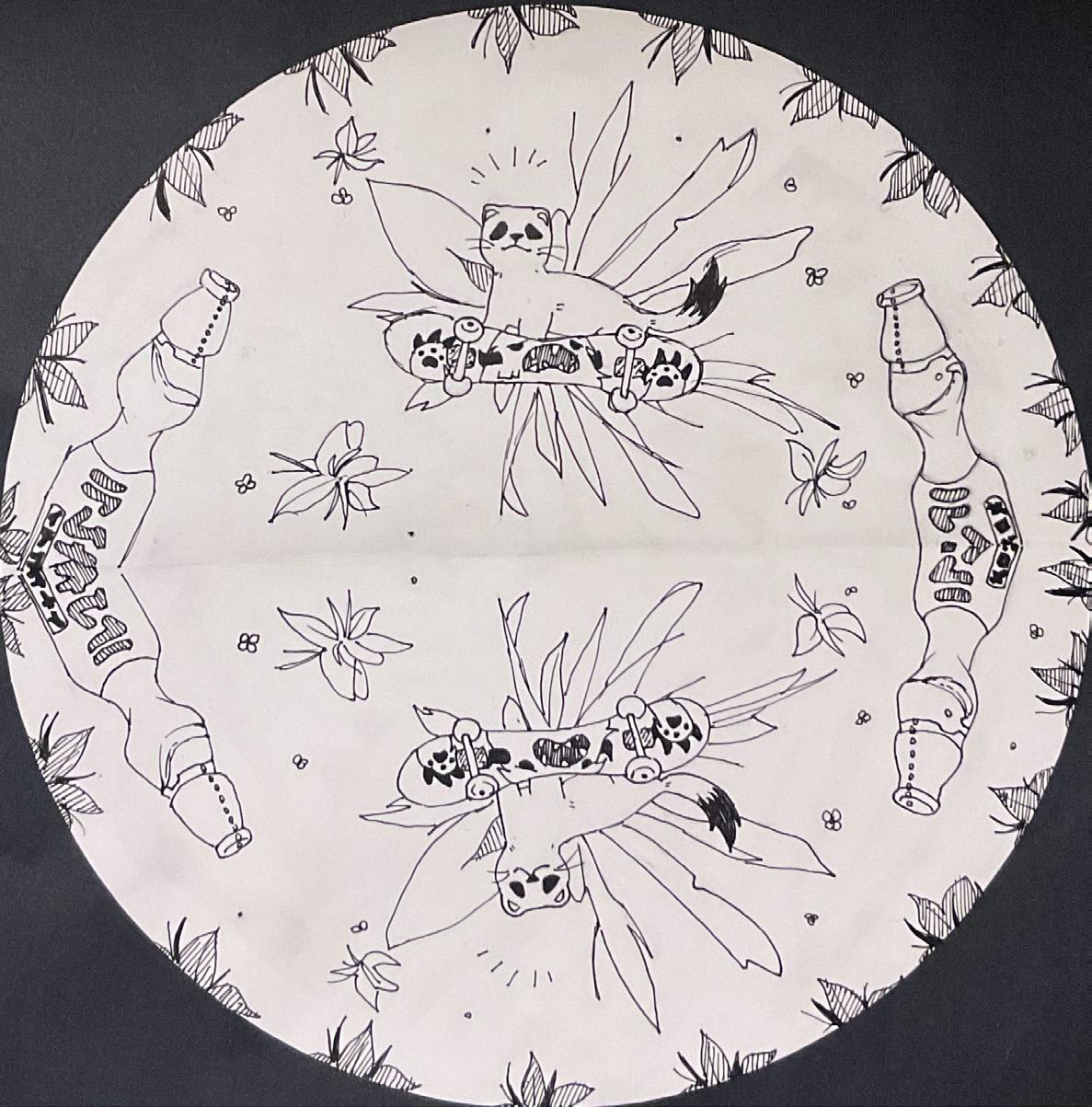
From academics to business owners, waiting for their chance. I am from my father’s steady beat I am from a book meant for me, Before I knew what a book was, no longer a baby. I am from pictures, that line the halls, some from before I was born. Always changing Making a better life.
-Fatim Halsey
Clouds The Clouds in the sky stand out like a light. A big white puff like cotton candy, soaring high day and night. If you look at one, there’s a big, bright fluff with endless thoughts to have, all in one cloud out this window, I’m looking out now.
-Shaurya Ramesh ’31
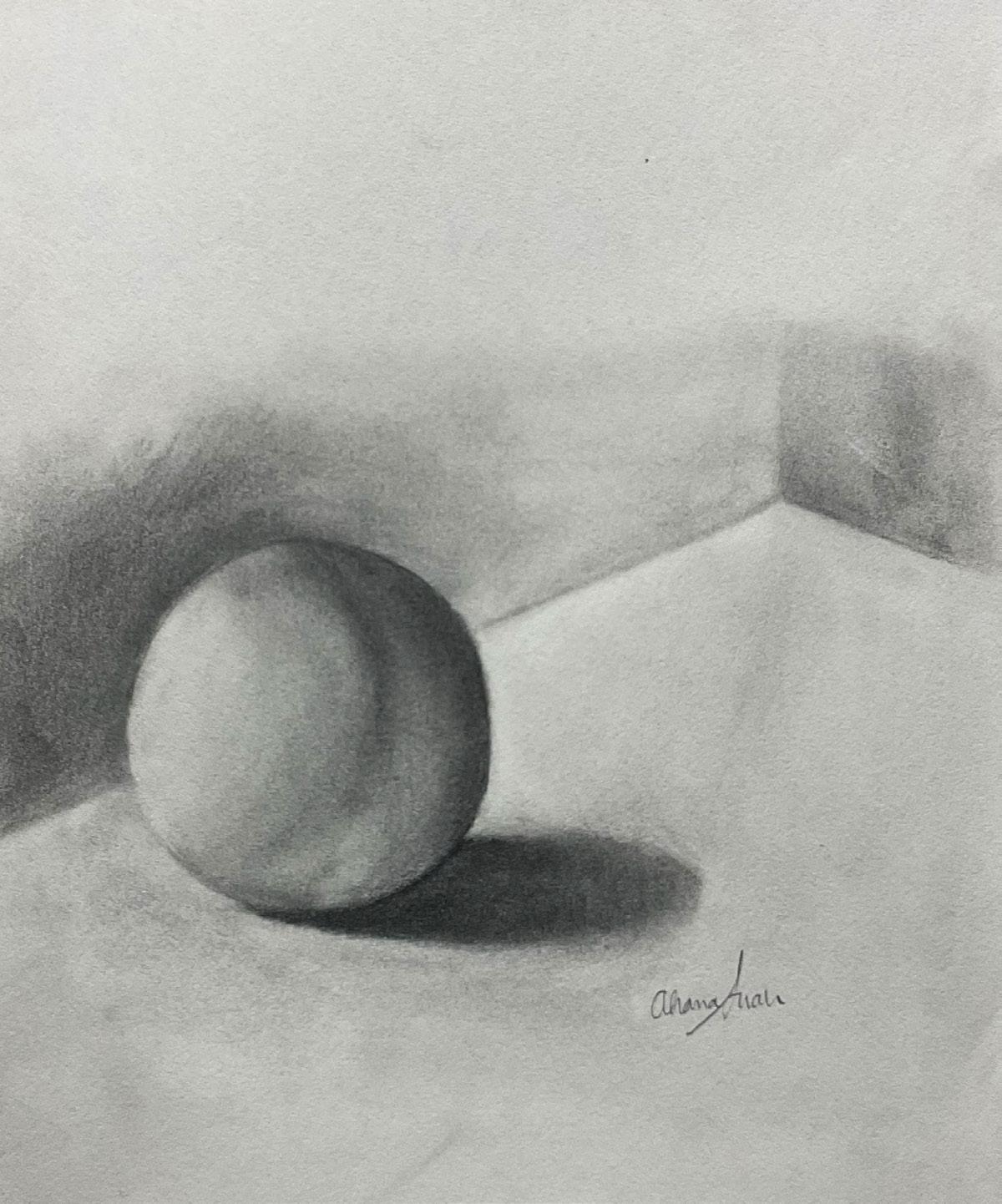 Cameron R aper ’29
’29
Ahana Shah ’27
Cameron R aper ’29
’29
Ahana Shah ’27
A long time ago I had a family: a husband whom I loved and children whom I cherished. My children were very fond of animals, especially pigs. They would go on and on about their love for the creature and how they wanted one when they got older. Unfortunately, that time never came, even though I wanted my children to spend the rest of eternity with me. The only matter in question is that they weren’t immortal. My husband and I spent our evenings in the garden looking for the plant to make the potion that will keep our family alive forever. Sadly, as my children and husband grew older, I stayed the same. I lost the love of my life and children whom I adored, and now I’m alone in my palace trying to keep their memories alive.
I can’t live here anymore, alone, alone with nothing but my palace and the woodlands around me. I need someone to be with or I’m going to drive myself insane. I thought turning men into different animals was going to fulfill my endless craving for attention, but now I am doubtful. I wake up every morning with an endless longing for someone to love. Today was no different than any other. I woke from my chamber, which I designed myself. The walls were deep red with pictures of men I turned into animals, but it was just another reminder that I would be lonely for the rest of eternity. After my servants brought me something to feast on, I went to tend my garden and feed my animals. I also went to my husband and children’s graves to tidy them and add new flowers from my garden. After I was finished with my daily chores, I went down to the beach to collect sea shells for my house. A strict schedule was very important to me because if I didn’t have one I would become even more agitated. As I was walking up the long stairs from the beach I saw a glimpse of a sailing ship in the sea. As I started running up the stairs, I thought about having a husband again. Surely one of those men could fulfill my dream to remarry! I wanted to jump into the water and greet them, but then again, I didn’t want to scare them off. I made a plan to wait for them to arrive and then sing a song to seduce the men into the palace.
I stood at the palace entrance and watched as Odysseus and his men approached. I have known of the great Odysseus and I was intrigued by what he had to offer. I’ve seen many heroes come to my palace before, but none like Odysseus. I stepped out with my finest long gown glittering in the sunlight, smiling at Odysseus and his men and welcoming them warmly. With my enchanting voice, I said, “Welcome, brave Odysseus, to the home of Circe. I have heard so much about you and your great adventures. Please, come inside and make yourselves at home.” I watched as Odysseus walked into my home with his men. I had heard of his journey, the stories of his courage and strength, and I was both intrigued and amused by his bravado. As he stepped closer to me, I could feel the power emanating from his presence. I smiled to myself, knowing that I had the upper hand in this situation. I welcomed him and his men, and then I saw the surprise in their eyes.
I offered them a seat at the dinner table and gave them my poisonous wine. One by one each soldier turned into a pig; I turned them into pigs to keep my children’s memories alive. I was confused about why Odysseus was still a human. Could it be that Odysseus now has the upper hand and not me?

Odyssey Perspective Piece: Circe
-Wylie
Straten ’27
Kaylie St. Pierre ’30
Odyssey Perspective Piece: Polyphêmus

The Uncontrollable Monster
I can’t help being a monster, it is not my fault I was created so ugly and evil. The anger in my bones courses through my veins constantly. I try to calm myself down by taking care of myself and my sheep, trying to live my life without disturbance, until one horrific day. I went out again in the late morning, looking for new homier decorations to add to my dark and dull cave. Although I tried to give life to the space, it’s so boring every time I awake from my slumber to the sameness because I didn’t find anything. I took my sheep back to my cave, and closed the rock that I use to prevent intruders from entering. It didn’t work, however, because I heard a voice. When I turned around the anger took over and in a grizzly and grouchy voice, I screamed, “WHO GOES THERE?” When I looked down, I saw the mortals who were now invading my cave, MY CAVE, and they were not allowed in it! In the fit of rage that I couldn’t control I grabbed a man and ate him. I hated myself for it, but I cannot control the monster I am. The biggest mortal, who introduced himself as “Nobody,” seemed… somehow better than the others. I had the urge to eat more, so I ate another mortal. His scream still haunts me; it’s the only thing I keep hearing over and over again. I cannot control the monster I am. Overwhelmed and tired from the rage that took over my body, I fell asleep. They gave me wine, which somewhat relaxed me, and I quickly drifted off. What a mistake that was! Not long after, in my deep, deep slumber, I felt a terrible pain in my eye. It was absolute torture. I couldn’t handle it! Nobody had betrayed me! I can’t control my actions, and I didn’t need to eat those men, but did I REALLY deserve to be in absolute misery and pain? I instantly got up, shielding my despair with rage, fueled by the monster within me to defeat them. I hear my sheep escaping, the only company I have on this island, and I am filled with sorrow but cannot show it.
SADNESS
IS WEAK! I scramble to the men but I only manage to get one. I can only use my hearing to locate Nobody bragging somewhere about my defeat, humiliating me. I can’t control the monster I am; I cannot control the anger given to me! I throw as much as I can: I throw, I throw, I throw. I hear the splashing of the water, the cracking of the oars, and eventually the yelling from Nobody, whom I now know is Odysseus. I fell to the ground. I feel the pain to this day, even when my eye doesn’t. I prayed to my father Poseidon while enraged and after praying loudly with emotion engulfing my soul, I felt relief. I felt humiliation. I felt–I felt that there would be justice. I am reassured that he will get consequences for his actions. And now, on this island, full of darkness to my eyes, I remember the day for eternity. Although I hear the sheep, I am alone. Losing my vision made me defenseless, useless. Without a purpose. But still, I cannot control the monster I am. I will never control the monster I am. I am a monster.
-Milena Kwapniewski
Nico Schwartz ’27
’27
“Go back to your sorrowful cave, Polyphemus.”
“Go sing of your lonely ramblings to another soul.” This is how they taunt me, jeer at me, for being alone. These are the voices I hear daily, the voices of my own kin. My brothers, jeering at me for my lonesome ways. How much more cruel could it get? While they stay content and comfortable with their wives and children, I stay lonely and cold, relying solely on my own company for entertainment. However, I still find myself longing for their companionship. They heckle me constantly, yet I cannot set free my yearning for brotherhood, for kinship.
“Come back when you’ve found yourself a wife, someone to herd with and keep you company. Stop bothering us with your woe,” says Phthonus, my eldest brother. I often find myself green with envy when compared to him. Living in a cave of impressive grandeur with a wife so loyal, so devoted to him and his band of merry children, running and laughing. I long for a life like his. As I withdraw from the cave, a glimmer of linen catches my eye. My thoughts already scattered, I turn sharply uphill, careful to watch for thorns on the prickly hillside. Then my breath catches in my large throat, my eye starts to widen, for there in front of me, I see a beauty of vision and grace. A cyclops standing in front of me, feminine, but she catches my eye for more than her sex. With long, waved hair as black as the starry night’s sky and a beautiful, brown eye centering her face, she is a vision to behold on a day as strange as this. Her eye seems to widen as much as I can feel my own, and a smile clings to her face.
“Why, what a lovely eye you keep, as green as an emerald I once viewed long ago in a distant land. As deep and rich as the color this marvelous and vast forest produces in spring. As bewitching and catching as a tropical and brightly coloured bird, flying high in the sky. Who are you, and why are you coming this way?” she inquires. I move fast to reply to her, my footsteps thumping the ground and shaking up the low sediment. “I am Polyphemus, youngest son of Poseidon and his immoral affairs, youngest brother of Phthonus. My cave dwells on the north side of the island. And who might you be? I almost mistook you for one as lovely as Athena! I heard myself say, ‘That must be Helen, Helen of Troy for whom the epic human battle was fought.’ But then I look up and see your gorgeous eye, and think it must be as beautiful as Aphrodite’s.” Her face starts to redden, and I can feel mine flushing just as quickly. She starts to take her leave, and I can feel my heart pounding in my titanic chest, heaving with the thought of her absence. Then, promptly, before I can lose the nerve, I reach out to her and call, “My dear lady, please meet with me here, tomorrow. Perhaps we can herd together?” I see her eye brighten, and she responds, “I would be honored. I will be here tomorrow. If I am late, simply call for me and I will come.” She then leaves, almost floating on top of this murky ground. I can feel my heart floating away with her, already taken. Suddenly, a jarring thought crosses my mind. Once she becomes my wife, I might be able to go to my brothers and gain their approval. We might be brothers once more! This places a smile on my face and another distraction in my mind. As I wander back to my cave, I think I have spotted a glimpse of white, possibly a vessel, on the horizon. It must be my eye playing tricks on me again, for after all, who would come to this distant isle? As I step inside my cave, I quickly close the entrance, sealing it with a boulder. The murky smell of water and dirt fills my nose. I can see my goat pen, which I proudly crafted, sitting in the back of the spherical cave. I look over at my hearth, and only then I realize that this murky scent is not the only one present. Smoke, its intoxicating scent, and fire, its captivating glow, suddenly present themselves to me. And there, in front of me, I can see six human men, seated on my chairs, eating my food. And nothing but rage fills me. Who do these men think they are, coming into my cave, seating themselves on my furniture, eating my fine food?
“Who be you, little ones, and what business do you have with me?” I shout. What appears to be the leader of the group, wearing purple linens, unlike the white ones the other men bore, steps forward to address me.
“Why, nasty cyclops, we’re here to pillage and plunder this bountiful cave you possess. A beast such as yourself could not possibly live civilly. We’re here under Xenia, foolish one. Or have you no manners at all?” Who are these humans, telling me how to live, under my roof, in my cave? “I’m Polyphemus,” I reply, “And I do not obey the gods or their will. I find it brings me grief. Now, who shall I devour first?” The men don’t have a minute to let the impending shock appear on their faces, as I simply pick up the closest man, and begin to chew on his skull. It crunches and pops with no time for arbitrary screams and shouts, and he stops his flailing almost immediately. It is only right that they must pay; after all, this was my food that they ate without permission. As the day grows long, I continue to saunter around my cave in my usual manner, but I interrupt my routine to pluck another man from the group and make him pay. These humans don’t see me as
Odyssey Perspective Piece: Polyphêmus
an emotional being, why should I give them that courtesy in return? Once the moon is hung high in the sky with all the stars glistening, the one in purple robes steps forward to address me once more. By this time, all but five men have been spared, the present leader included.
“Why, cyclops, I say you and I have not yet been acquainted. Nobody’s my name. Here, drink from this vial, for here is the wine of the gods! Oh, you may disapprove of their ways, but surely you don’t look down upon a good drink! Come, sip from this skin, and let us repay you for the stolen goods.” The wine smelled extraordinary. So the first breeze of wind on a starved summer’s day flies through the air, penetrating the noses of all around and filling them with tranquil thoughts. The sip of water that quenches all you thirst for, for hours, cool and ready to be drunk. The warm embrace of kin, reassuring, kind, and eternal. So the scent of the wine fills my nostrils. I begin to take a small sip of the wine, and, oh my, what marvelous wine it was! As it slid down my throat, it felt almost like honey, coating my insides and making me feel fuzzy and warm. I drank, drank, and drank, all while the men seated around me drank as well. Slowly, I begin to feel tired, too tired, and I soon long for a deep slumber. However, I can’t bring my legs to work, so I drift asleep right there on the floor of my cave. The beautiful cyclops from earlier features in my dreams. I can see visions of us: herding together, hunting together, eating together with my brothers. In what seems like no time since I slept, I feel a sharp and jarring pain in my eye. It’s searing, and I can faintly hear in the background a sizzling noise. I try to open my eye, so confused, so lost, and the pain simply increases. Finally, the pain begins to calm. I sit up, so perplexed, as suddenly, the realization hits me: these human men have dared to blind me! I’m at once filled with red hot fury, hotter than whatever brutal object was used to blind me, and I scramble to find these treacherous guests who dared to blind me in my own home. I can hear my goats whining for fresh air, free land, so I begin to thump around and find the entrance. As I move the boulder, I can feel all the sheep running past, but no men. I thunder around, desperate to make these humans pay for what they’ve done to me. Suddenly, I hear jeering taunts, not so far from those uttered by my brother only hours before. “What to do now Polyphemus?” jeers the voice I so angrily recognize as Nobody.
“I’ve fooled you, tricked you, you stupid thing! How stupid you were, to shun the gods and then dare to drink their wine! I must be half your size, and yet, who of us is free? I am Odysseus, raider of cities, son of Laertes and hero of the Trojan War. Remember this name as that who fooled you.”
These taunts only increase my anger as I yell back to him, “Odysseus! My father Poseidon shall avenge me, I swear!” I desperately throw boulders in the direction of his voice, but alas, I can tell they have long since departed. I run, to go to my brothers, to tell them of this scheming mortal, when I realize one thing: the cyclops I met yesterday, well, she has not met me yet. We were planning to meet here, right upon this very rock, I was sure of it. Then, the second crushing realization of today finally hits: she was just a mirage. A figment of my imagination. She was perfect, too perfect, and came to me in my one hour of need and loneliness. I perch on this very rock, too maimed to shed tears, and my third and final realization hits: I am very much alone. As I sit there trying to cry but desperately unable to, Father Poseidon hears my wish. For years from now, this raider of cities, this traitor Odysseus, would sit in the same position as I, longing for company on a lonely island, but finding none.

Kiva Pur-Rashid ’30
-Emma Flick ’27
That wretched day will never fade from my memory. I will never forget that face—a face I still see in my dreams, a voice I still hear in my head—that still haunts me. My day started out great; the weather was pleasant, and I was joyful. I woke up and felt productive (for once in my life). I walked around gathering supplies to make my food. I walked the sheep and took special care of them. But then I started to count them—they weren’t all there! I thought maybe they got lost or maybe I ate them last night and didn’t remember, so I went on my way. I continued walking around for more fresh air, and I started to smell something odd. It smelled strangely human, but at the time, I assumed it might just be the other giants cooking some different food. I continued to smell it, and it started to get stronger, and it seemed like it was coming from my cave. Oh, and when I told you it smelled delicious, it did! It smelled ripe, so I was sneaky about entering my cave so I would not attract attention. Then I could scare them and eat them! Humans always taste better when they are scared.
Once I was in the cave, I slammed the entrance shut so the tiny people couldn’t flee, and I saw them right in front of me feasting on my precious sheep! I asked them who they were, and one person replied, “Nobody.” Then they proceeded to ask for hospitality, whatever that was. Well, of course, I know what that means, but that doesn’t exist here. They said they didn’t want to displease the gods, but whatever. I just continued to reach down and snatch up the tiny humans and bash them to death and devour them. They tasted delectable! Then the one that spoke earlier handed me a cup of wine, and I fell into a deep slumber.
The next night, I went to eat more humans. I found that they were even more delicious than the previous ones! I went to sleep, knowing that humans were still there. I had told “Nobody” that I would eat him last, so I was going to have a big feast in the morning. In my deepest sleep, I was awakened by a sharp pain in my eye! I couldn’t see anything, not a thing. Everything was black and all that was imprinted in my brain was his face; Nobody’s face. I knew it was him! I threw the rock, stumbled outside, and I cried for my father; I needed him to get revenge for me. I prayed that he would eventually get home but it wouldn’t be the same, and that it would take a hard and long hero’s journey to overcome all the obstacles. The last thing I heard was his real name. What a foolish human would tell me his name; a name I will never forget and neither will the gods. He said, “Odysseus, raider of cities, took your eye: Laertes’ son, whose home’s on Ithaka!”
Dueno ’27

Odyssey Perspective Piece: Polyphêmus
-Ally
Sahil Karkar
’30
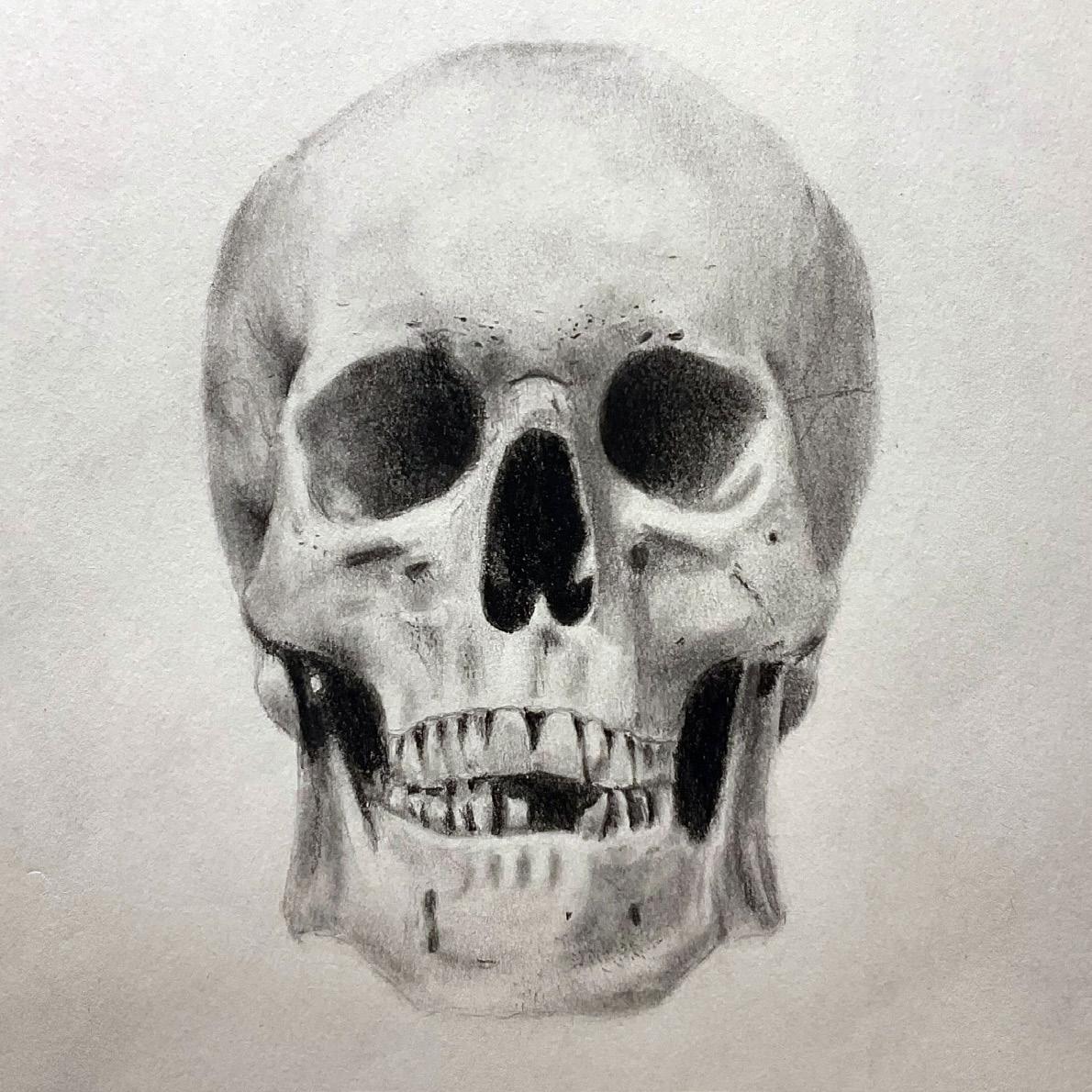
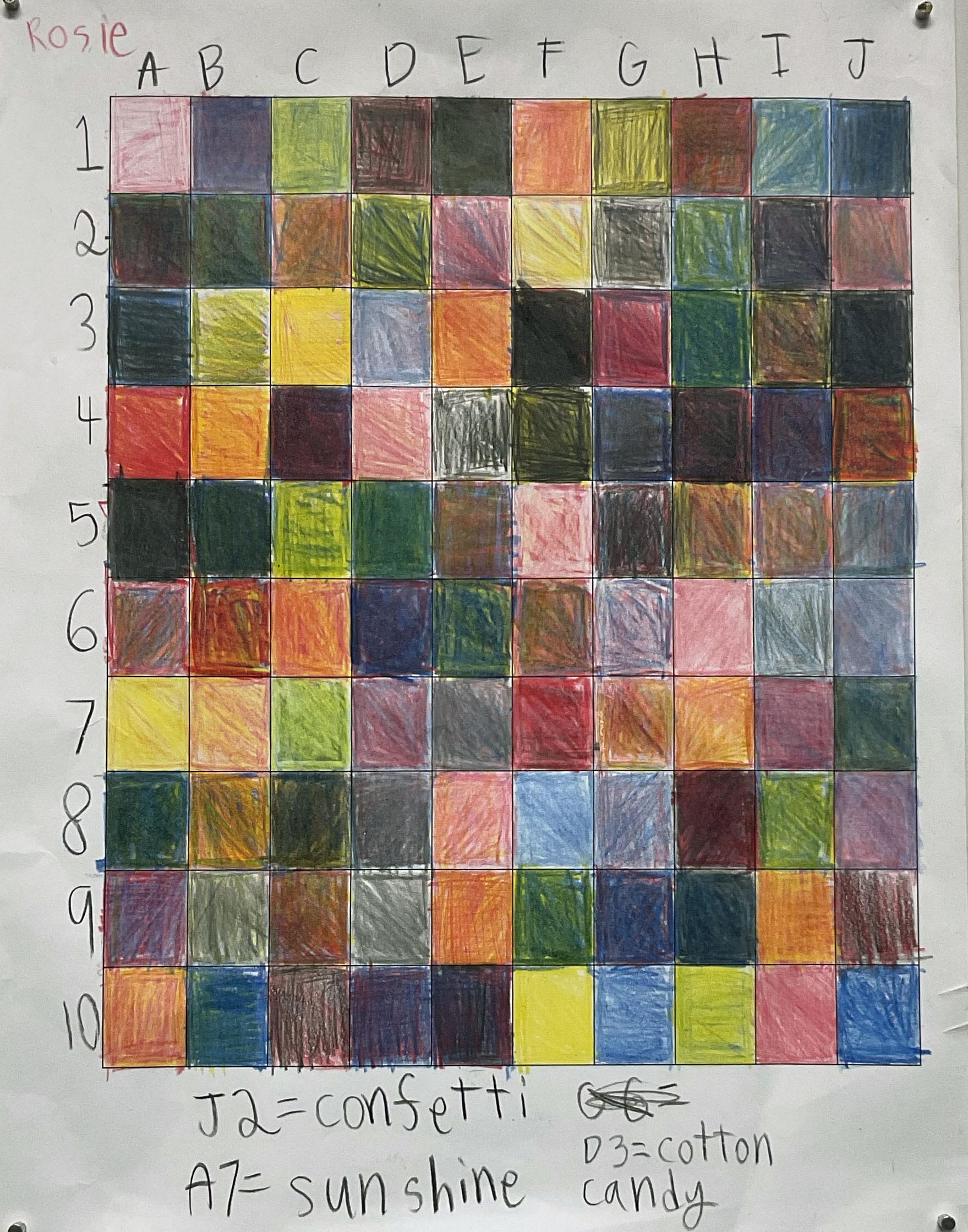

 Anna Oh ’27
Rosie Cocco ’31
Dylan Zack ’31
Ahana Shah ’27
Anna Oh ’27
Rosie Cocco ’31
Dylan Zack ’31
Ahana Shah ’27
Everybody in my family has different eyes. My dad’s eyes are brown, like hot chocolate on a cold day. He says everyone’s eyes are brown, including Teddy’s eyes, which are blue. My grandmother’s eyes are green with speckles of brown, like flowers. Penny has brown eyes like cinnamon. Her sister Daphne has gray eyes like her silvery, pensive thoughts.
But my mother’s eyes change color, like a mood ring, sometimes they’re green that fade into hazel, and brown or even gray, her eyes are always reading, she is always looking for ways to make me feel better when I’m stressed out or sad, her eyes are always pretty and make her smile better, they allow her to see the maniacal math problems when you need help with your homework, it’s nice when she looks at you with her eyes that never lack love. The love, the smile and her mood ring eyes.
We all have different hands, everyone in my family. My sister’s hands are cold, like ice. My dad’s are fragile like thin glass, always cracked and bleeding. In the summer, mine are smooth and warm, but come winter, they are as cracked and dry as alligator skin.
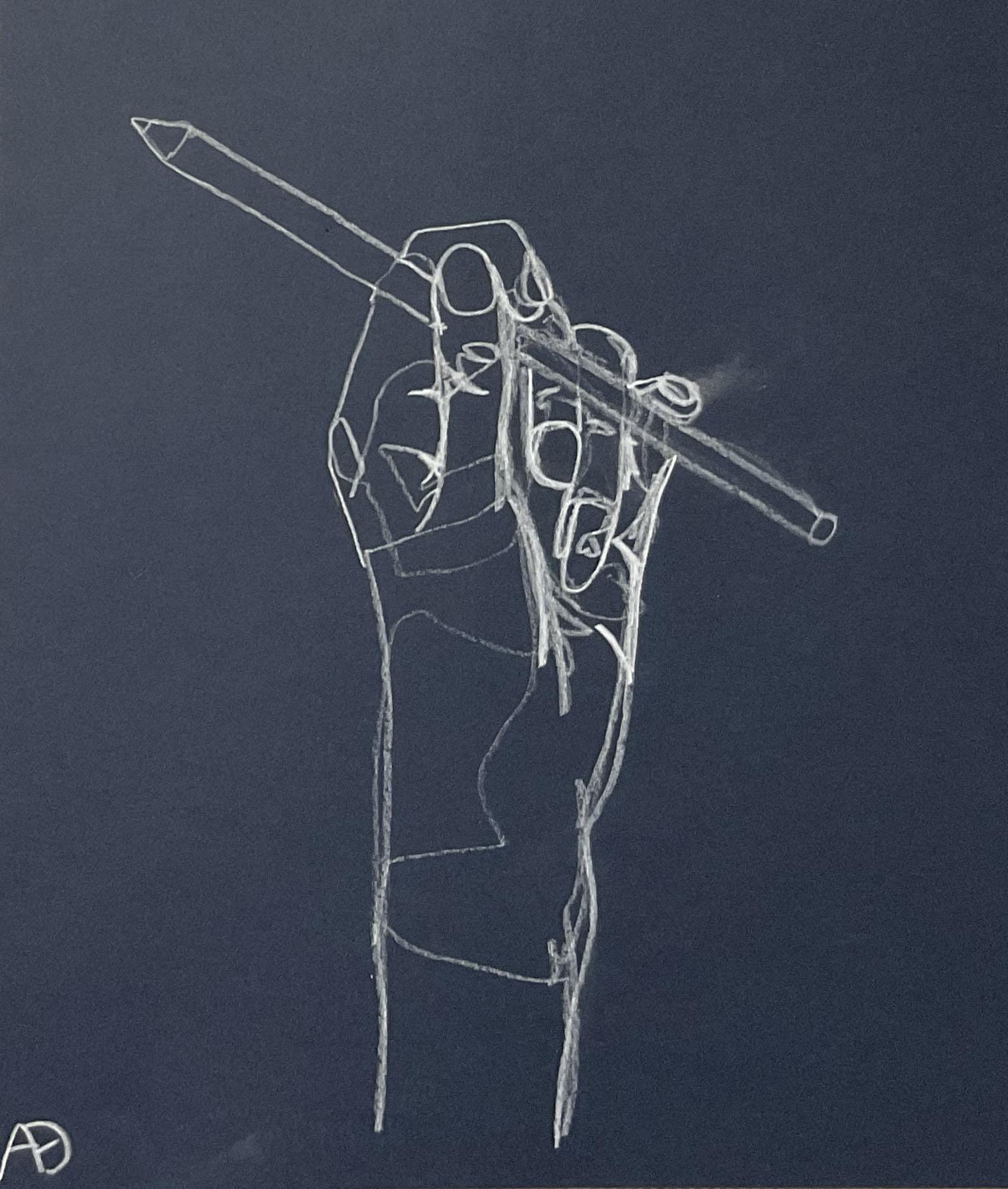
But my mom’s hands, her hands are warm, like a cup of cocoa on a cold winter’s day, as smooth as butter, always smelling like vanilla, so soft, so steady, steady when I am not, steady when I am crying, steady like a lighthouse, her light beaming on me, keeping me safe, wrapped around me when I need a hug, steady when I am a wilting flower, and she is the pole that is keeping me upright, steady when the only sounds are my broken breaths, and her steady ones. My tears, our breaths, and my mom’s steady hands.
 -Georgia Aitken ’28
-Lilianna Uribe ’28
Anna Oh ’27
-Georgia Aitken ’28
-Lilianna Uribe ’28
Anna Oh ’27
DeLorenzo
Avalina
’27
Everybody in my family laughs differently. My mother’s chuckle and chortle is contagious like a disease. Everyone around cannot help but laugh with her. My laugh is loud like thunder. Sometimes I burst into tears like pouring rain in a happy storm. My brother and sister’s laughs are very soft, light, and melodious like a lullaby. And Cookie, who is our furry friend, has a silent laugh, but it is the most cheerful sound anybody can imagine in their heads.
But my father’s laugh, my father’s laugh, like popcorn popping on an unforgettable party night, like a kernel jumping and dancing in a warm pot waiting to get some spice and butter, the buttery smell reminds me of the late nights when he makes the comfort snack, macaroni and cheese, for us in front of the stove as the buttery smell clings to his apron, and the spicy smell reminds me of the summer nights when he is doing barbecue on the porch as the spice stains his skin. The popping, the macaroni and cheese, the barbecue, and my father’s laugh that smells like popcorn.

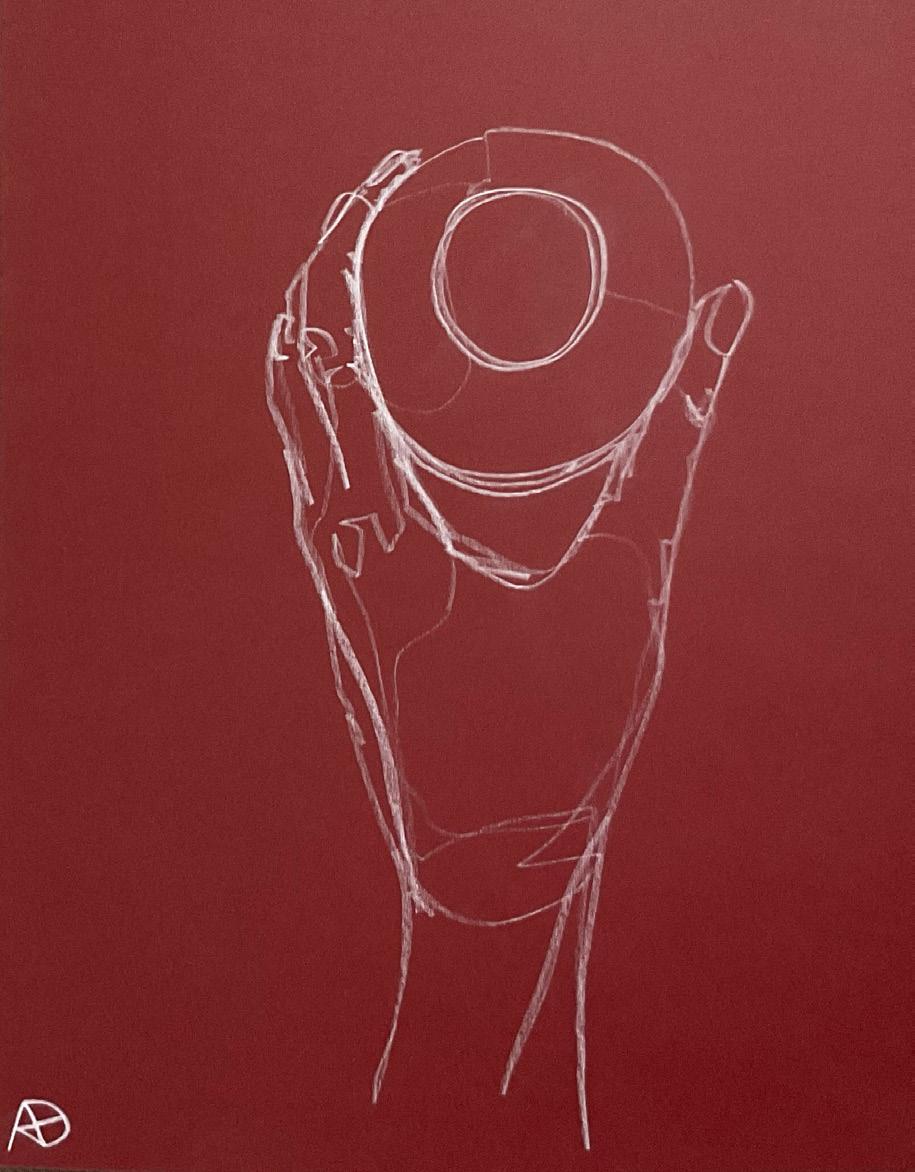 -Alex Huang ’28
Avalina DeLorenzo ’27
Anna Oh ’27
-Alex Huang ’28
Avalina DeLorenzo ’27
Anna Oh ’27
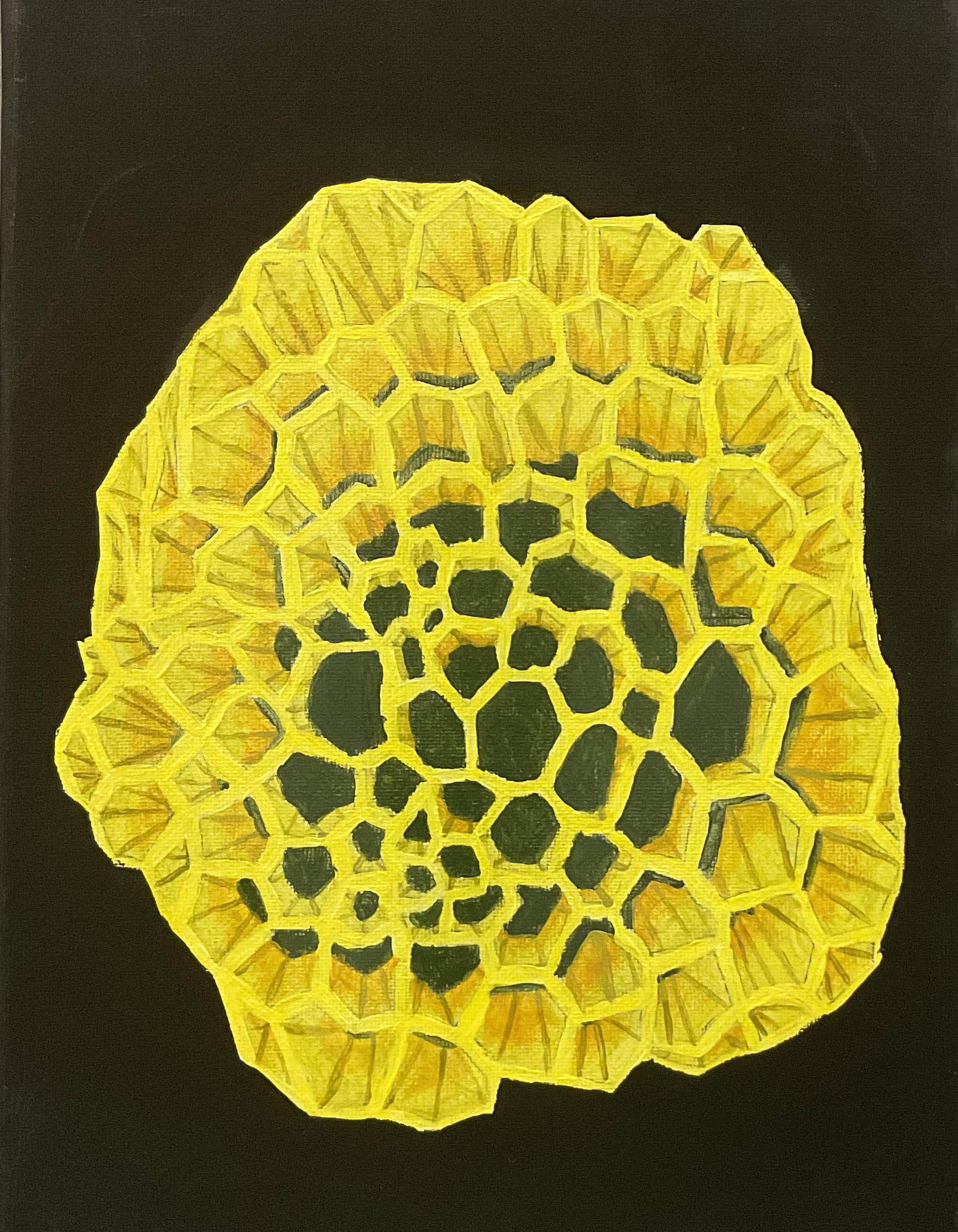
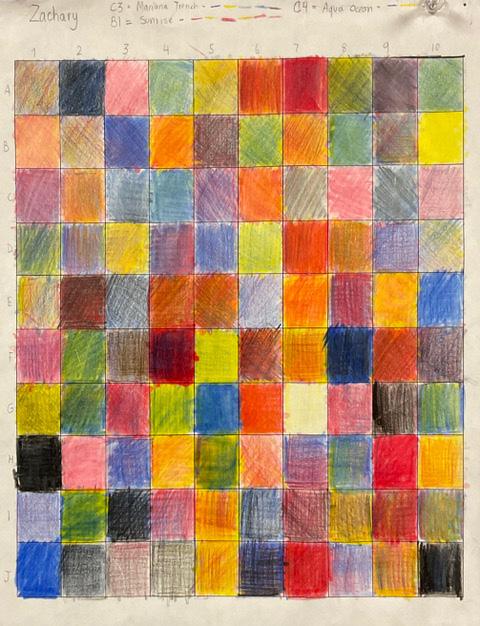
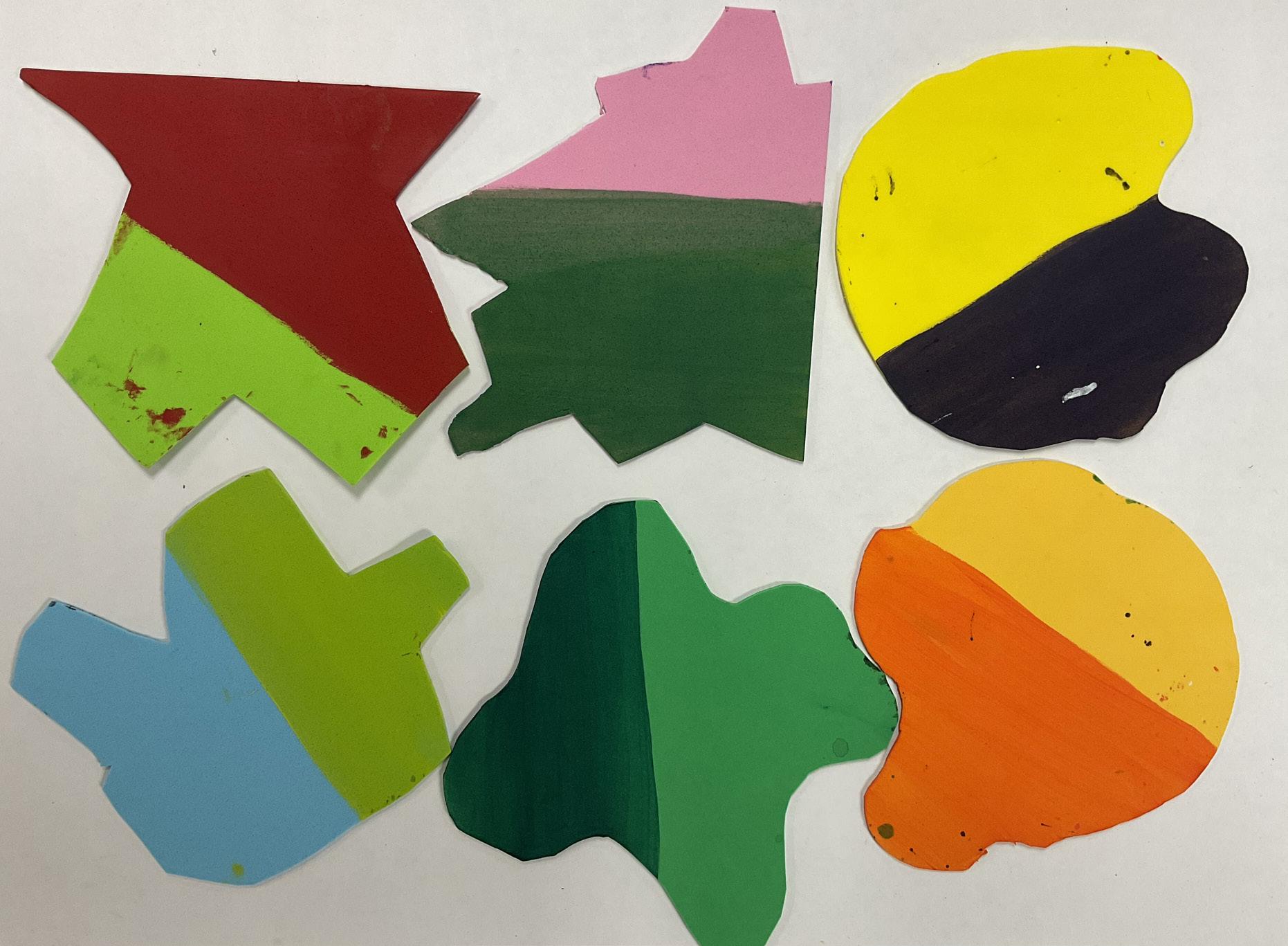


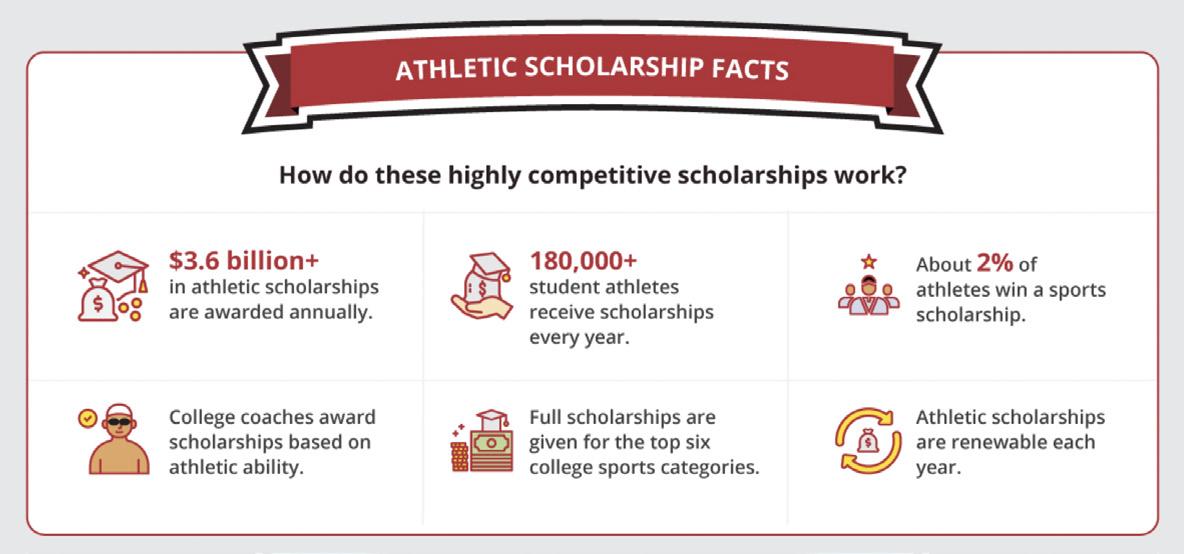
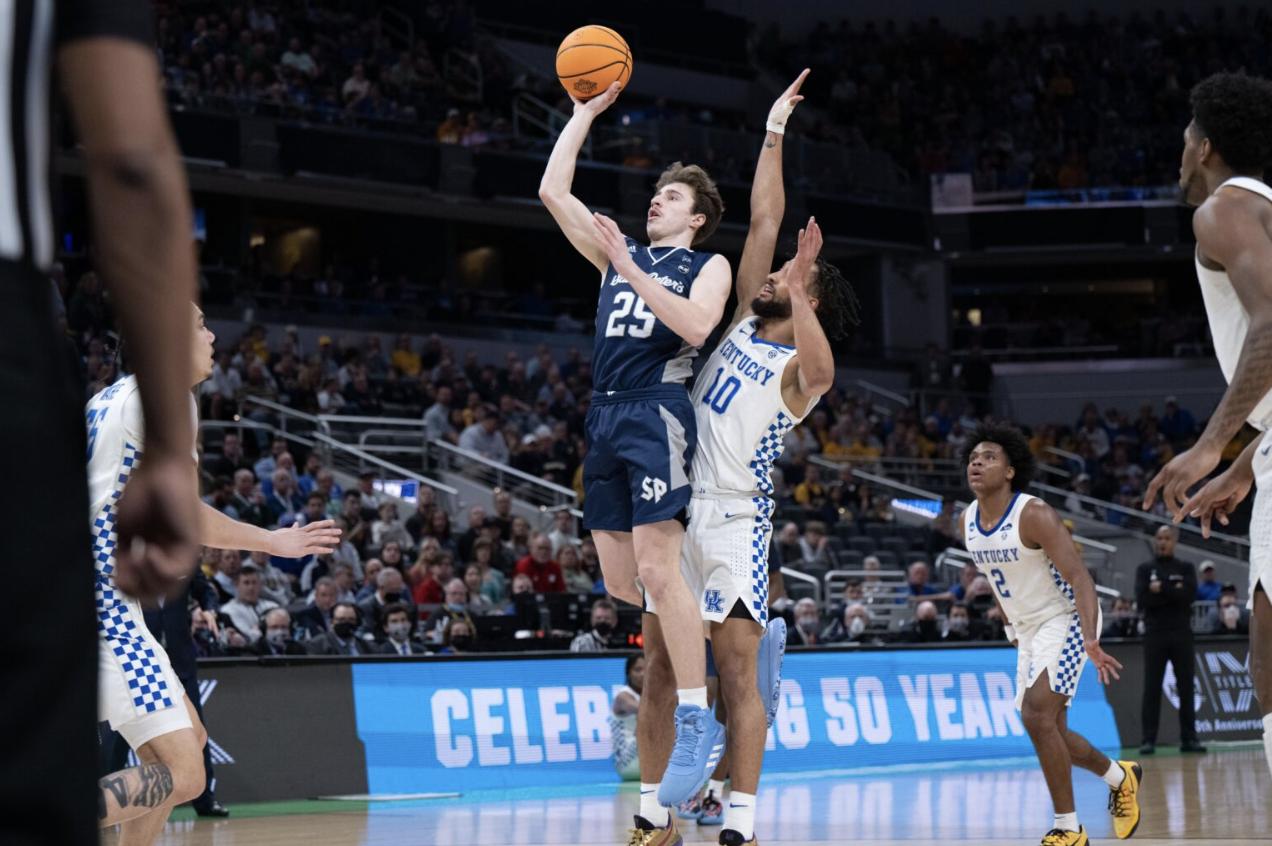

 Isabella Venezia ’30
Isabella Venezia ’30

 Catherine Xin ’30
Catherine Xin ’30


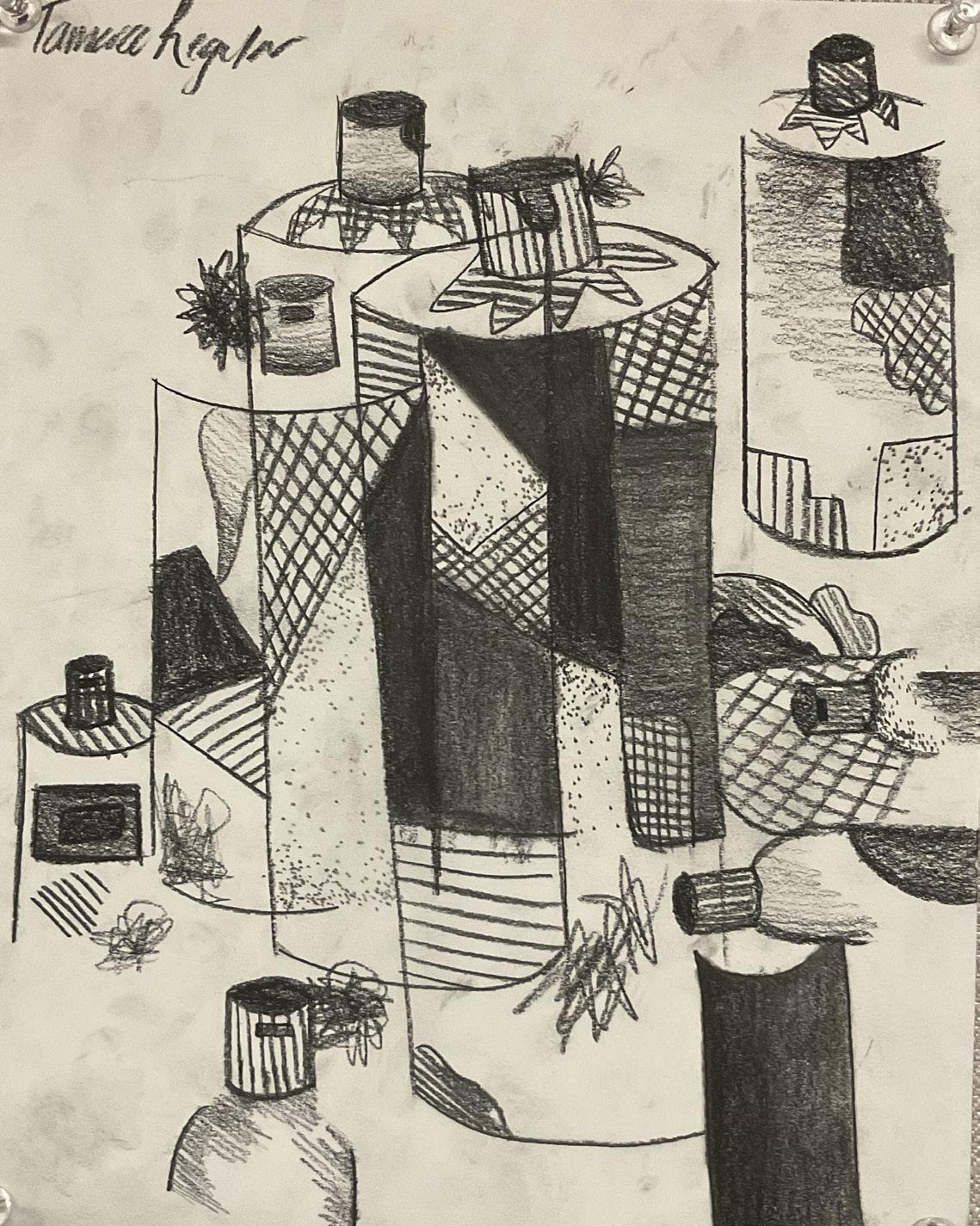
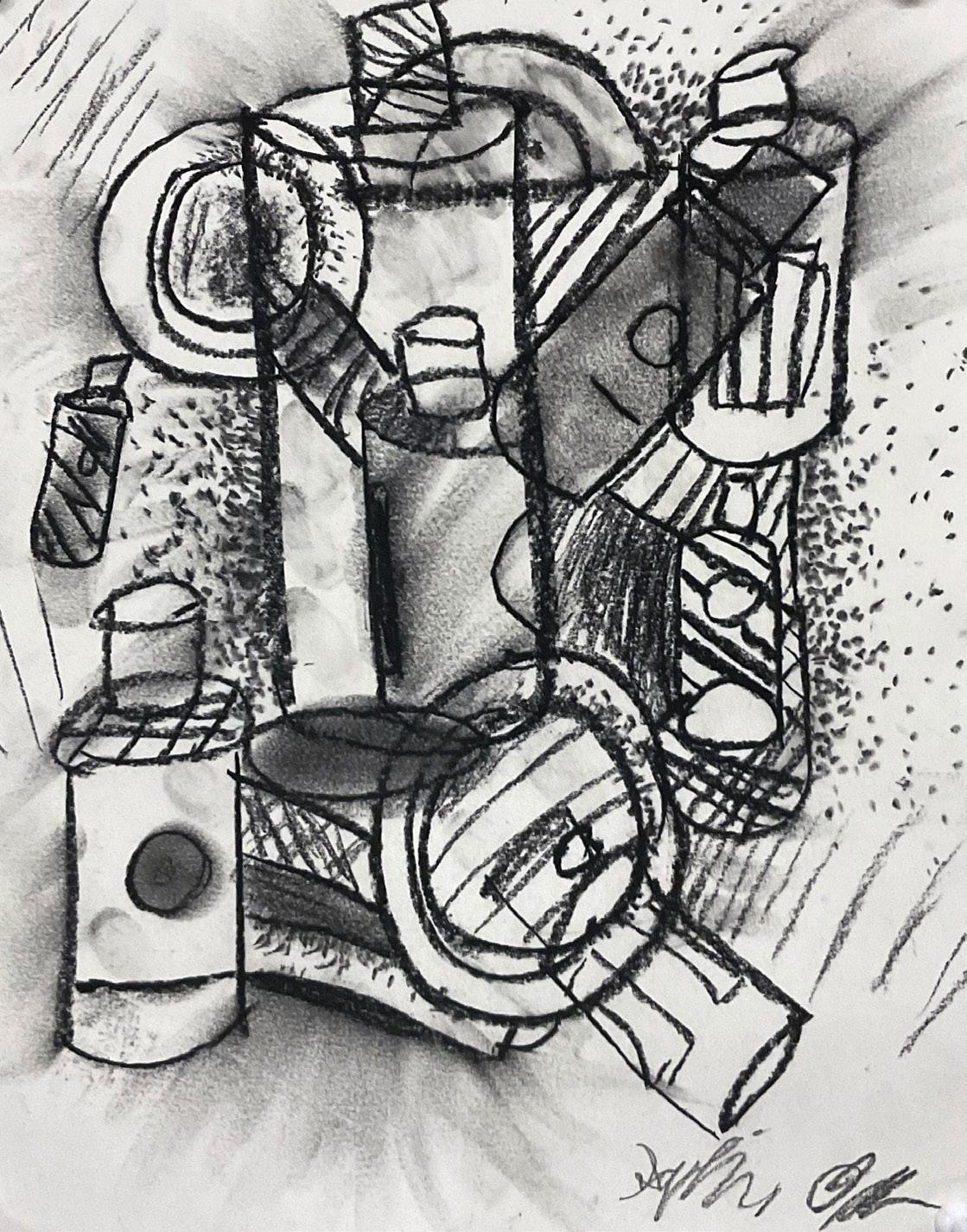
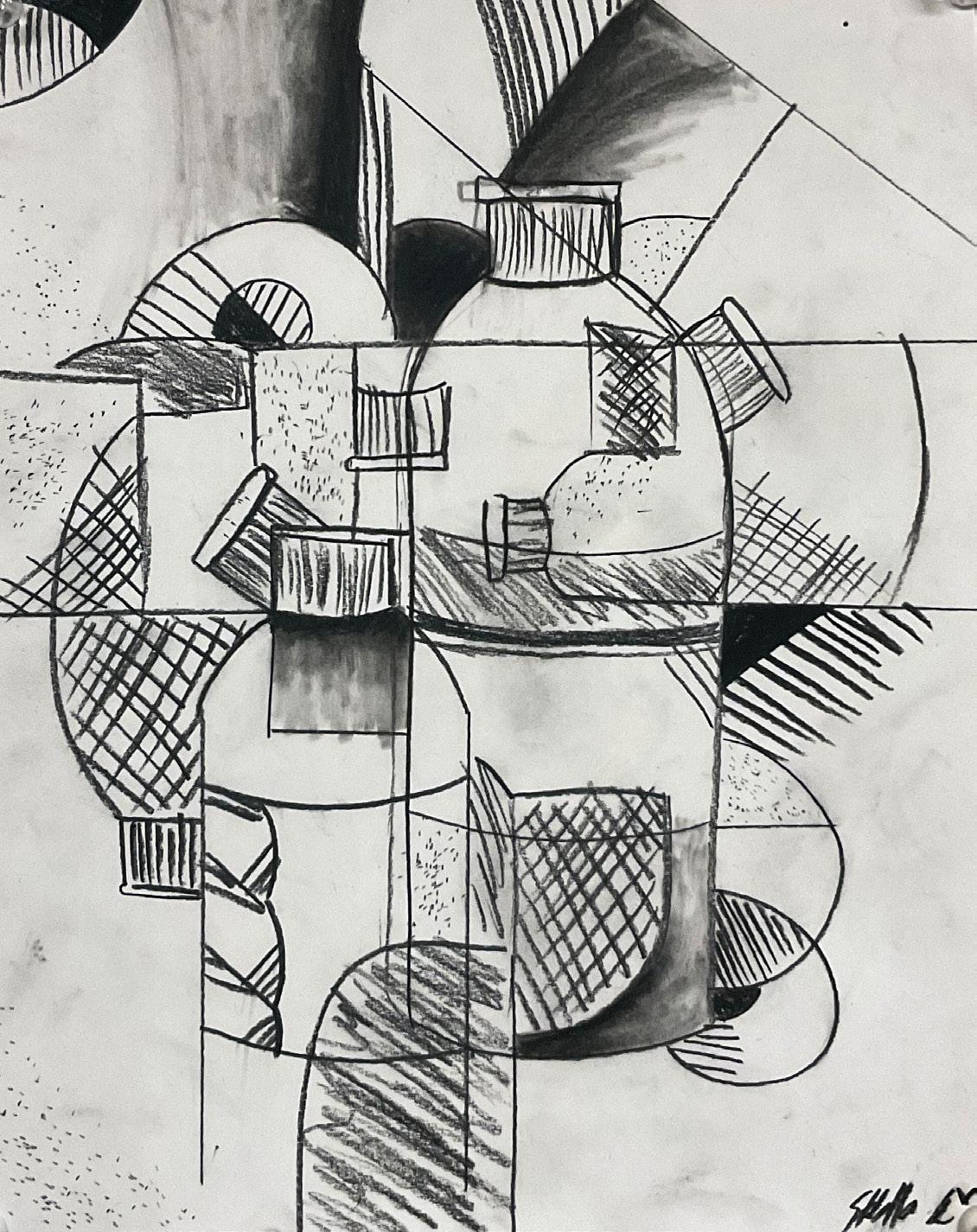
 Tamara Regular ’28
Sophia Ochs ’28
Stella Kilcullen ’28
Anushka Singh ’28
Tamara Regular ’28
Sophia Ochs ’28
Stella Kilcullen ’28
Anushka Singh ’28
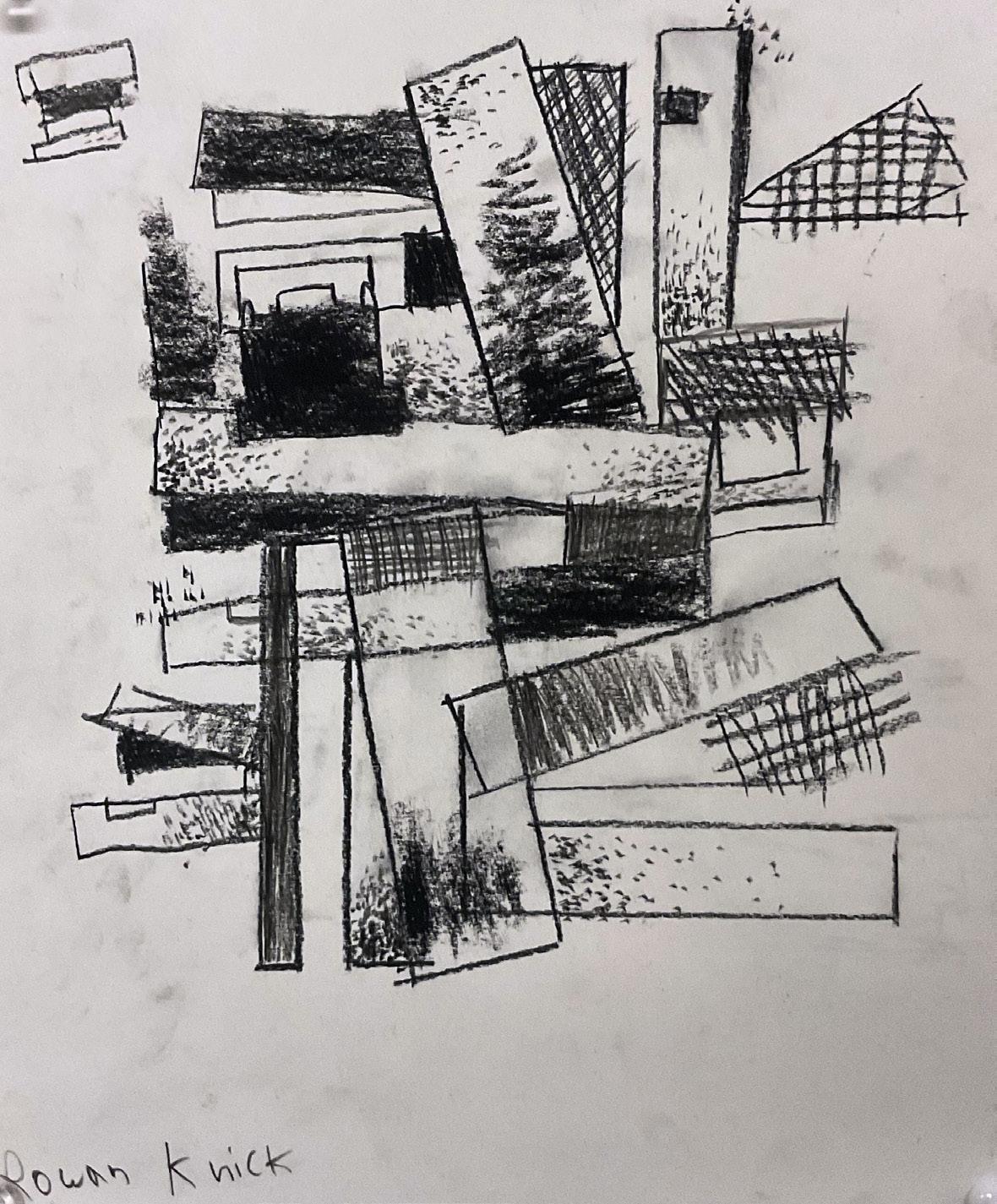


 Rowan Kuick ’28
Truly Sackman ’28
Oliver Hejna ’28
Madison Lee ’28
Rowan Kuick ’28
Truly Sackman ’28
Oliver Hejna ’28
Madison Lee ’28

 By Milena M. Kwapniewski
By Milena M. Kwapniewski



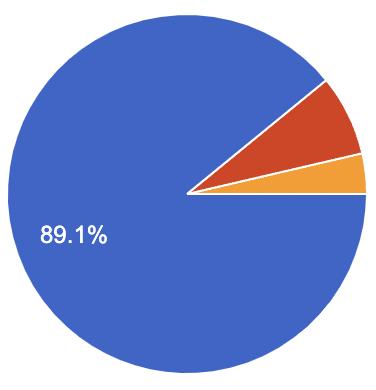

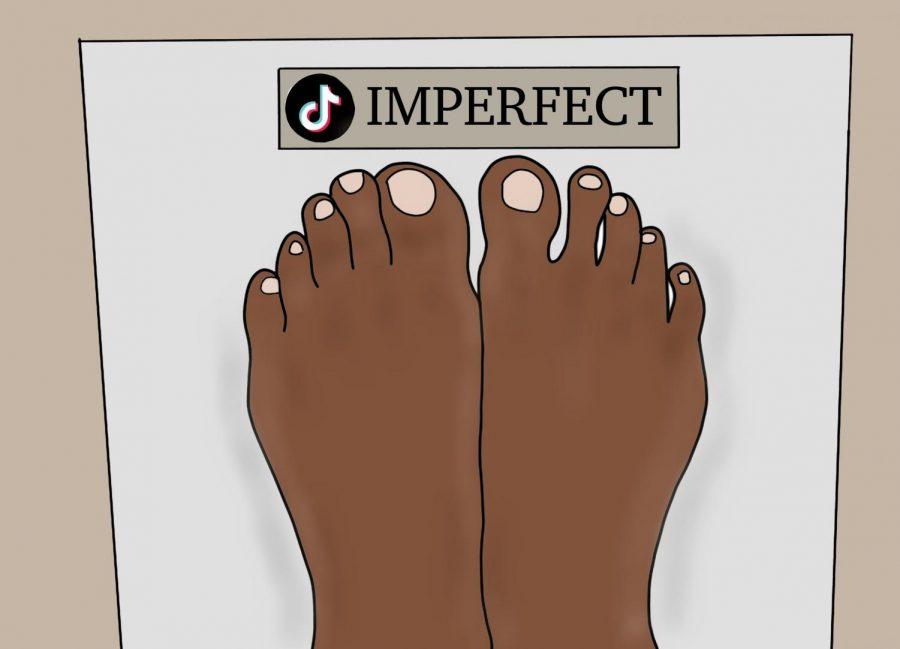
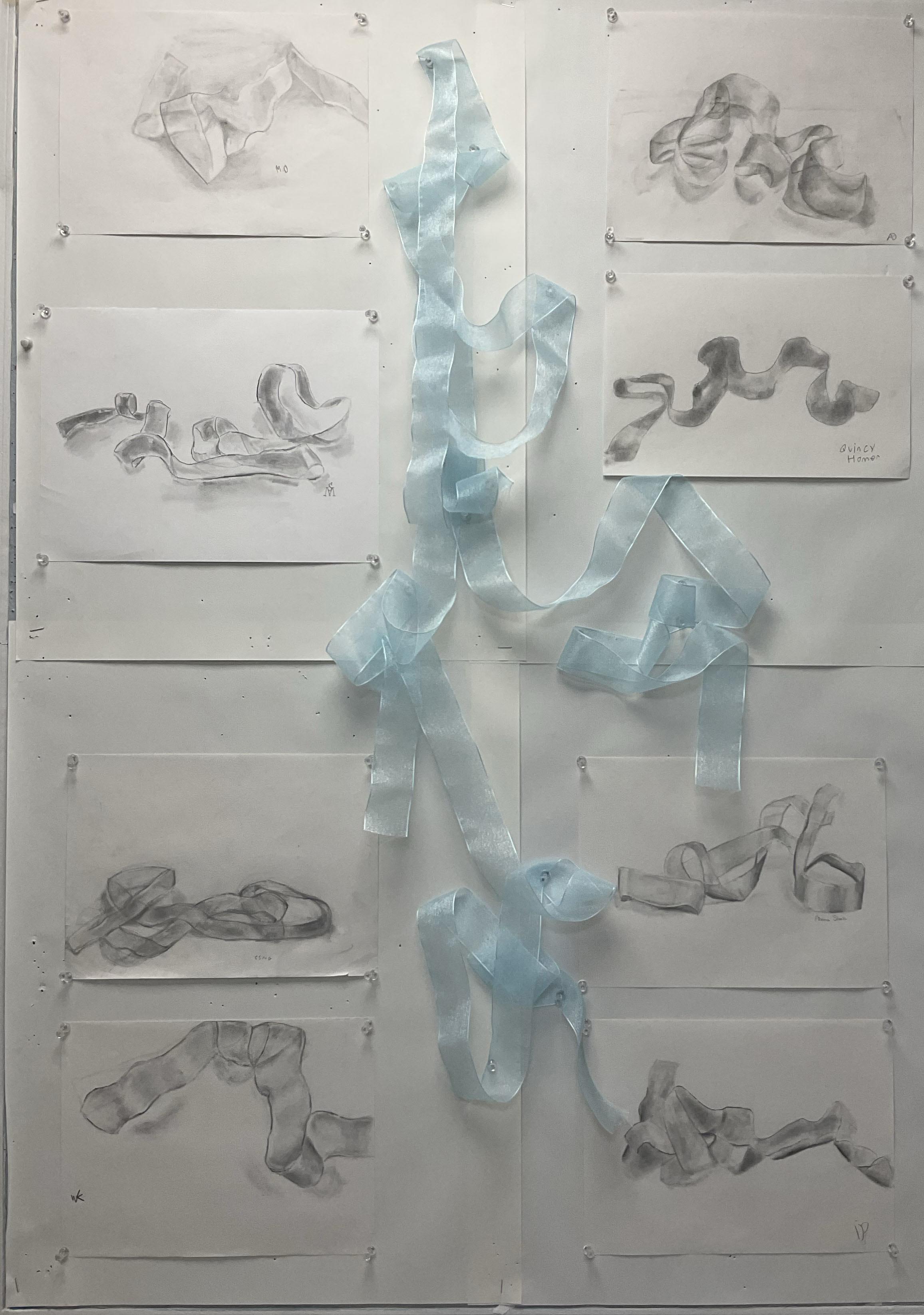 Top Row: Mimi Oster ’27, Avalina DeLorenzo ’27
Second Row: Simon Maza ’27, Quincy Homer ’27
Third Row: Charlotte Gardiner ’27, Ahana Shah ’27
Bottom Row: William Kilcoyne ’27, Damian Polanskyj ’27
Top Row: Mimi Oster ’27, Avalina DeLorenzo ’27
Second Row: Simon Maza ’27, Quincy Homer ’27
Third Row: Charlotte Gardiner ’27, Ahana Shah ’27
Bottom Row: William Kilcoyne ’27, Damian Polanskyj ’27

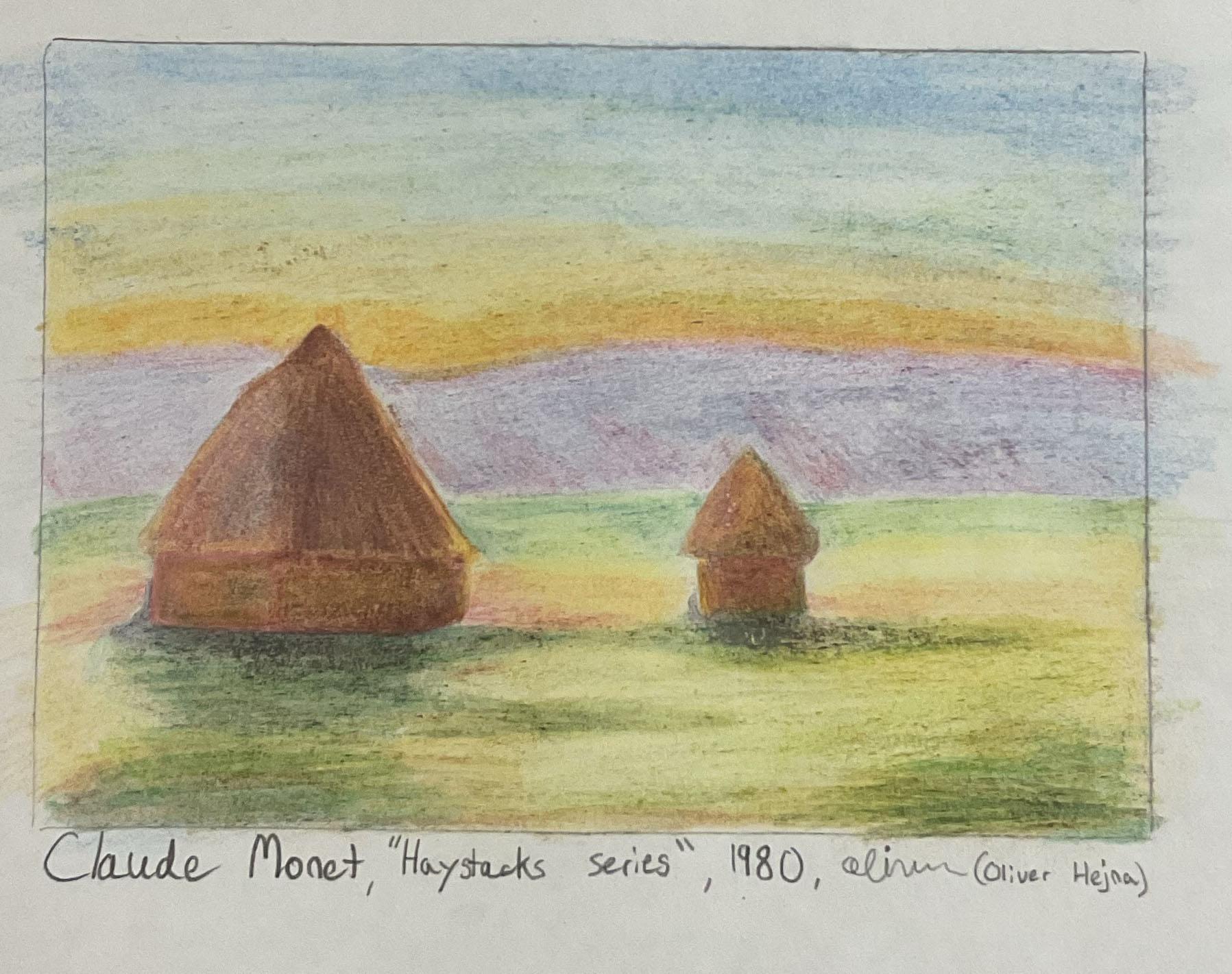
 Oliver Hejna ’28
Eliza Bishop ’28
Oliver Hejna ’28
Eliza Bishop ’28

 Avalina DeLorenzo ’27, Charlotte Gardiner ’27, Ahana Shah ’27
Quincy Homer ’27, Simon Maza ’27, Anna Oh ’27
Avalina DeLorenzo ’27, Charlotte Gardiner ’27, Ahana Shah ’27
Quincy Homer ’27, Simon Maza ’27, Anna Oh ’27










 Stella Kilcullen ’28
Joonkyu Shim ’28
Stella Kilcullen ’28
Joonkyu Shim ’28



 Tamara Regular ’28
Adam Rukshin ’28
Tamara Regular ’28
Adam Rukshin ’28

 Julianna Uzar ’28
Malcolm Donaldson ’28
Julianna Uzar ’28
Malcolm Donaldson ’28







 Annie Watkins ’29
Anna Oh ’27
Annie Watkins ’29
Anna Oh ’27

 Maeve Rodgers ’29
Avalina DeLorenzo ’27
Maeve Rodgers ’29
Avalina DeLorenzo ’27



 Humphrey Hogue ’27
Henna Blackburn ’27
Grace Barrett ’27
Grayson Gao ’27
Humphrey Hogue ’27
Henna Blackburn ’27
Grace Barrett ’27
Grayson Gao ’27

 Madison Lee ’28
Stella Kilcullen ’28
Madison Lee ’28
Stella Kilcullen ’28

 Abigail O’Neill ’29
Nolan Raper ’29
Abigail O’Neill ’29
Nolan Raper ’29

 Jack Rizzo ’27
Sankirtha Kapoor ’29
Jack Rizzo ’27
Sankirtha Kapoor ’29






 Aviva Gardner ’31
Skylar Fass ’31
Keanu Lee ’31
Aviva Gardner ’31
Skylar Fass ’31
Keanu Lee ’31


 Grace Barrett ’27
Simon Maza ’27
Shayna Safirstein ’27
Grace Barrett ’27
Simon Maza ’27
Shayna Safirstein ’27

 Joonkyu Shim ’28
Oliver Hejna ’28
Joonkyu Shim ’28
Oliver Hejna ’28

 Lily Herrigel ’28
Truly Sackman ’28
Lily Herrigel ’28
Truly Sackman ’28

 Madison Lee ’28
Georgia Aitken ’28
Madison Lee ’28
Georgia Aitken ’28









 Audrey Magera ’29
Madison Lee ’28
Audrey Magera ’29
Madison Lee ’28



 Cameron R aper ’29
’29
Ahana Shah ’27
Cameron R aper ’29
’29
Ahana Shah ’27







 Anna Oh ’27
Rosie Cocco ’31
Dylan Zack ’31
Ahana Shah ’27
Anna Oh ’27
Rosie Cocco ’31
Dylan Zack ’31
Ahana Shah ’27

 -Georgia Aitken ’28
-Lilianna Uribe ’28
Anna Oh ’27
-Georgia Aitken ’28
-Lilianna Uribe ’28
Anna Oh ’27

 -Alex Huang ’28
Avalina DeLorenzo ’27
Anna Oh ’27
-Alex Huang ’28
Avalina DeLorenzo ’27
Anna Oh ’27
